Since Tommy DeBardeleben and Gordon Karre did not fly out of MSP until late in the evening on February 1st, we basically had most of the day to bird in the Northland and on our way south. And since we had knocked out their Owl targets the previous three days….
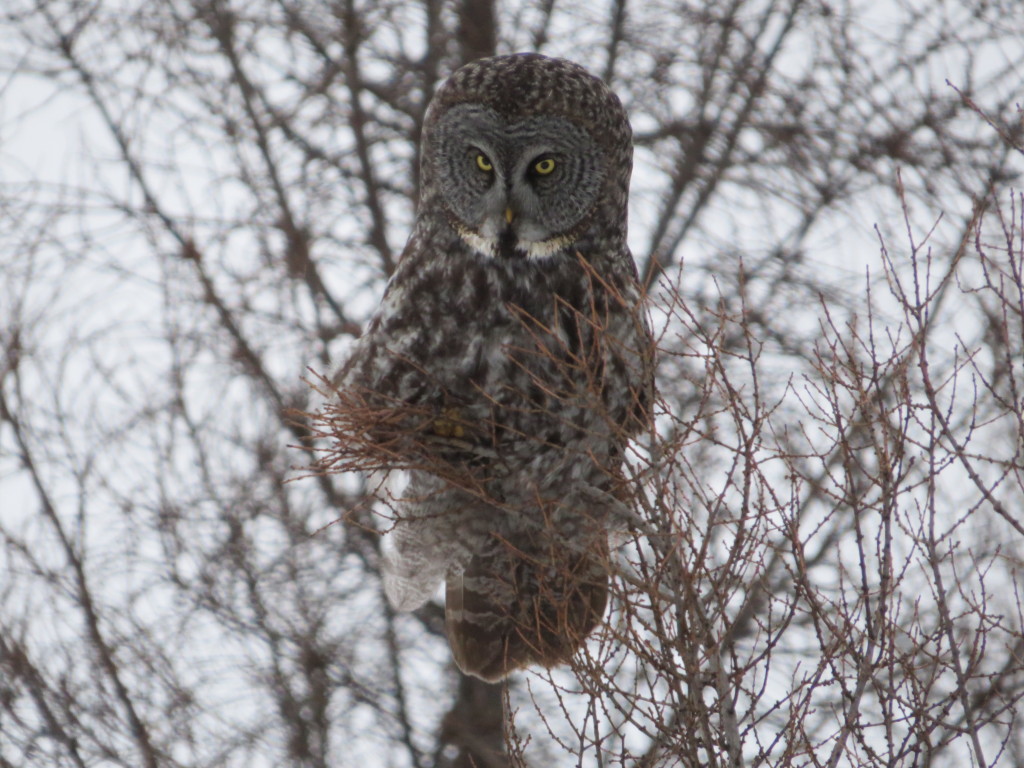
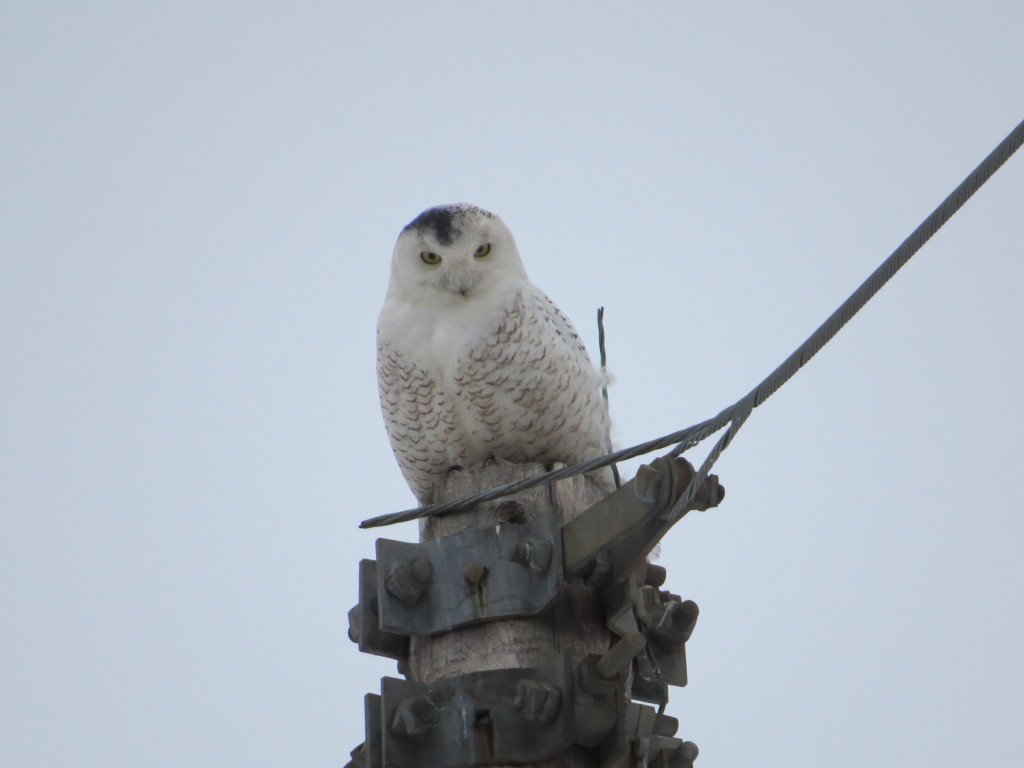
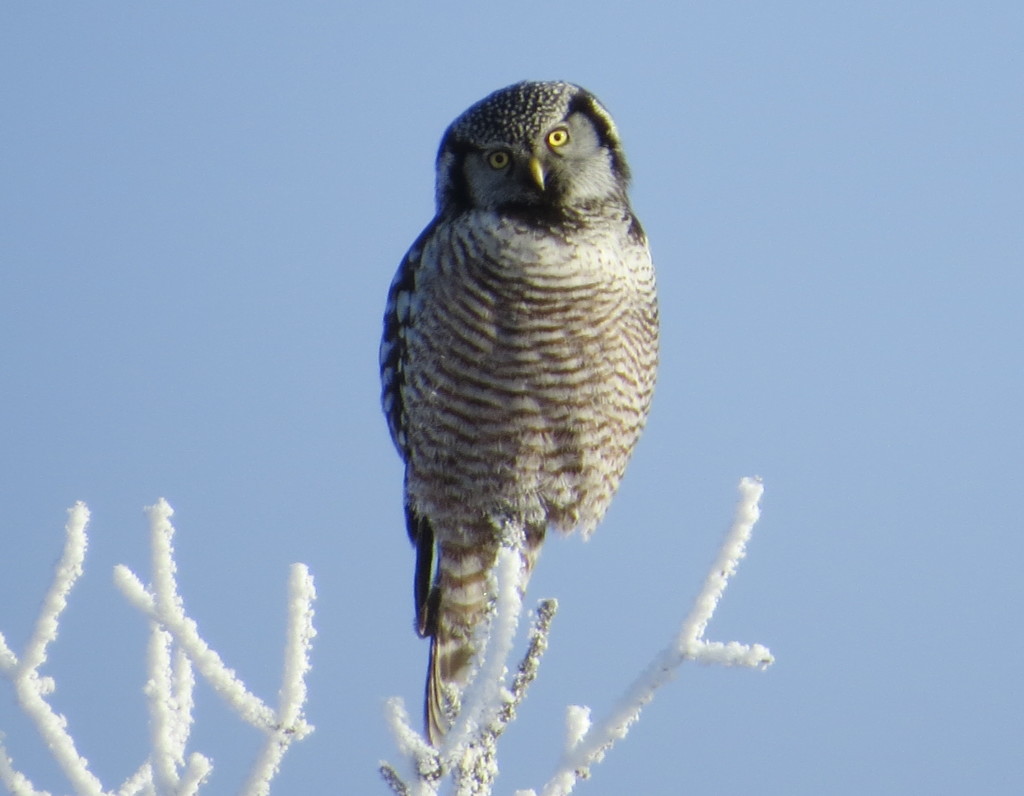
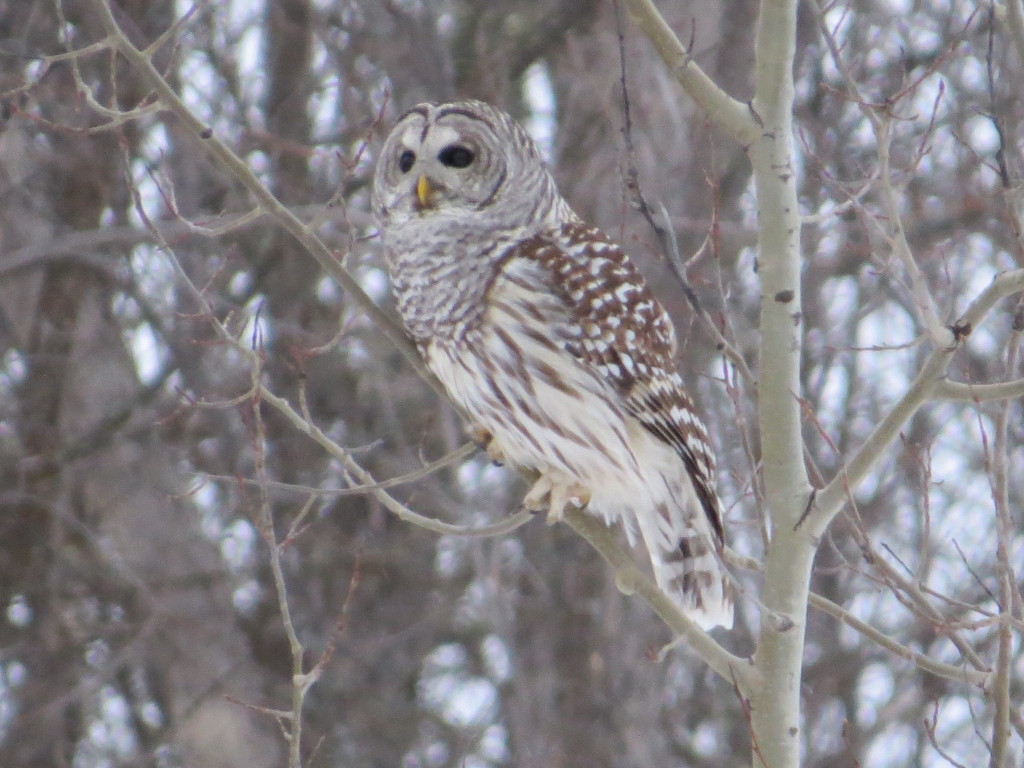
…we had a great deal of flexibility and freedom for how to bird on that final day. We had succeeded in our goals which I still find hard to believe even as I sit down to write this. There was zero pressure for that final day. Options on the table included going back for more Great Gray action in the Sax-Zim Bog, heading up to Lake County to try for Spruce Grouse, going to a birding friend’s yard to photograph Ruffed Grouse that frequent her feeders, or trying for a number of other Owls on our way south. Ultimately, though, we decided to bird much closer to our base camp. While we were on the Hawk Owl hunt in the Northwest the previous day, Evan had called me with a credible report of three Spruce Grouse seen on a road right near my parents’ house. Since I have seen Sprucies there in the past, I had no reason to doubt it. So that’s where we started our day. Evan was along with us as Marin and Melissa headed back home separately.
I was excited about birding around my parents’ house. First, it meant we could sleep in for once which felt great after the breakneck pace we’d been keeping. Second, and more important, I have tried for years for some really great birds that have been found on a road through a mature Black Spruce bog near the folks’ house. I had secured a nice male Spruce Grouse in this spot the previous year, but I have never given up searching for the Great Gray Owl and Black-backed Woodpecker that Sparky Stensaas discovered there over two years ago. I have lost track of how many times I have tried for these birds. These birds are pretty special anywhere, but even more so when they are in the backyard.
When we got to the Spruce bog and made one unsuccessful pass down the road for Sprucies, Great Grays, Boreal Chickadees, and Black-backs, Tommy suggested getting out of the car in order to walk and listen. It was a mild day, so I thought that was a good idea. Rather than joining them and having all of us have to walk back to the vehicle, I decided to stay in the car and go pick them up. Unannounced to them, I took off in a different direction in order to complete a large loop to cover more ground. Gordon later told me that when he saw me leave he had flashbacks of Snipe hunts from his youth. But I knew it wouldn’t be long and that they’d be okay. 🙂
Almost instantly on my solo tour I had a large gray and black raptor fly from a perch in the Pines on the right side of the road to a large stand of Pines on the left–adult Northern Goshawk! I wish I could have had a longer look, but such is the way NOGO sightings go. I finally did make it back to a frigid Tommy and Gordon (my loop took me longer than I thought–oops!). I asked the guys what they had seen, and Tommy told me they detected the drumming of a Black-backed Woodpecker. I’ve birded with Tommy enough to know that he can be a kidder and try to get one over on somebody, so I laughed and told him I knew better than to believe his story….except he didn’t break into a smile. He was serious! So I got out and we played the tape. Almost instantly the Black-backed Woodpecker flew out of the bog and finally gave me the sighting I’ve been waiting on for years! Even better was that this was a lifer for both Gordon and Evan!! It was a great moment that wouldn’t have been possible without Tommy and Gordon walking–thanks guys! This one felt really, really good.
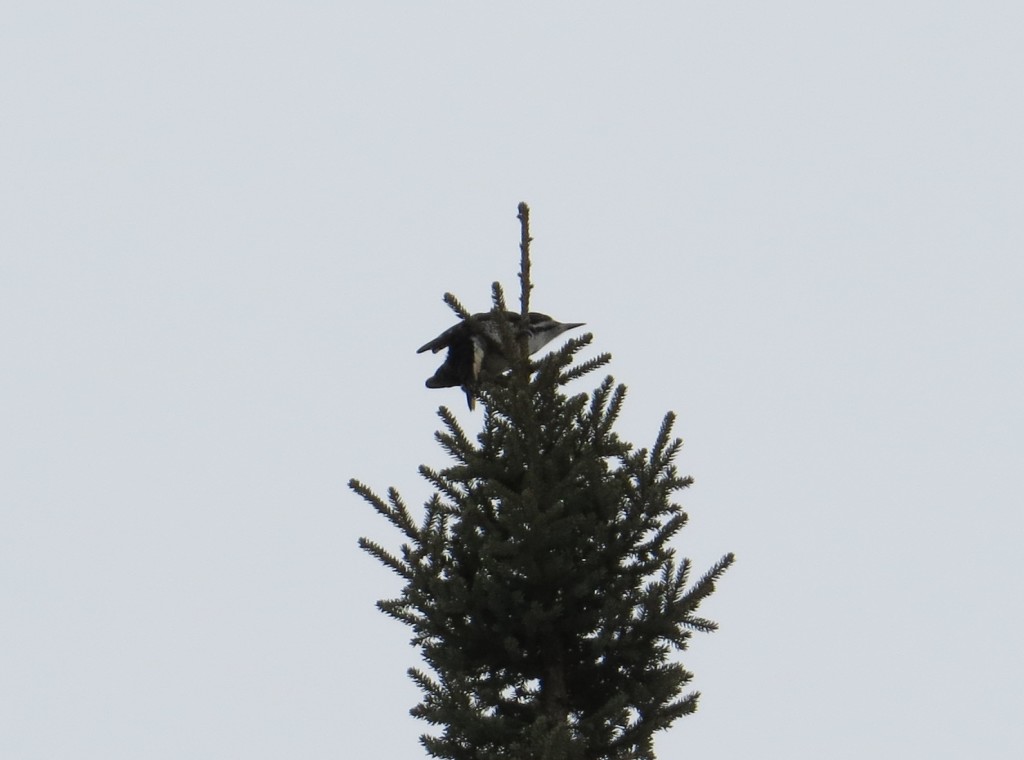 Something even more amazing happened while we tried to lure out this guy–a second Black-back showed up! There was a male and a female! Unfortunately I never did see that classic field mark of the yellow crown on the male, but Tommy and Gordon each got to see it. I will continue to search for these birds until I finally see that and finally get good photos of this species.
Something even more amazing happened while we tried to lure out this guy–a second Black-back showed up! There was a male and a female! Unfortunately I never did see that classic field mark of the yellow crown on the male, but Tommy and Gordon each got to see it. I will continue to search for these birds until I finally see that and finally get good photos of this species.
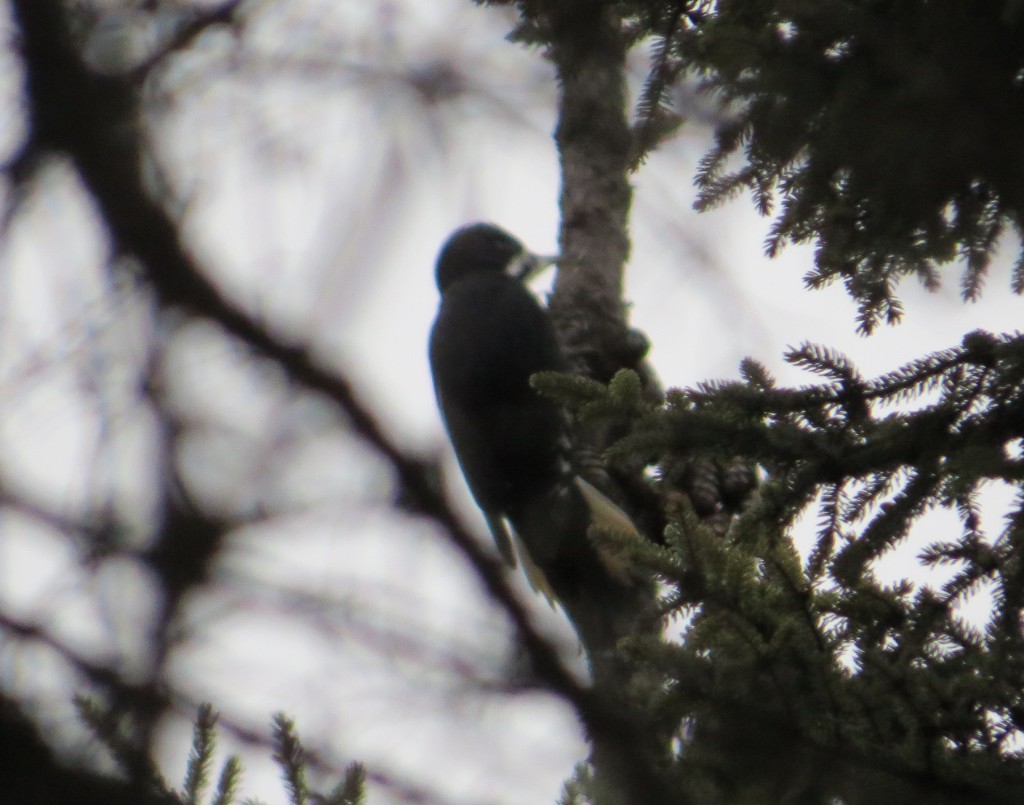
We had a pretty tight schedule to keep for some more birding stops on the way to the Cities, so we had to leave this special bog by 9:30. The rest of the day had various stops for various things as we ventured south. We tried for a Northern Saw-whet Owl that would have been a lifer for me if we would have found it. We did not, however. This was my second attempt, and I’ve since made an unsuccessful third attempt. It is just not meant to be at this point in time.
As we traveled we did get to see a couple more Pileated Woodpeckers, including one close up on a power pole. Getting photos of this bird was another story, but the sightings were still exciting for the guys. Tommy was able to finally get a Blue Jay photo which was a photographic lifer for him. We did bump into an unexpected but not surprising Red-bellied Woodpecker in a suburban neighborhood which was a lifer for Tommy! No one was able to get photos of this striking bird. The one pictured below is one I recently photographed in my yard.
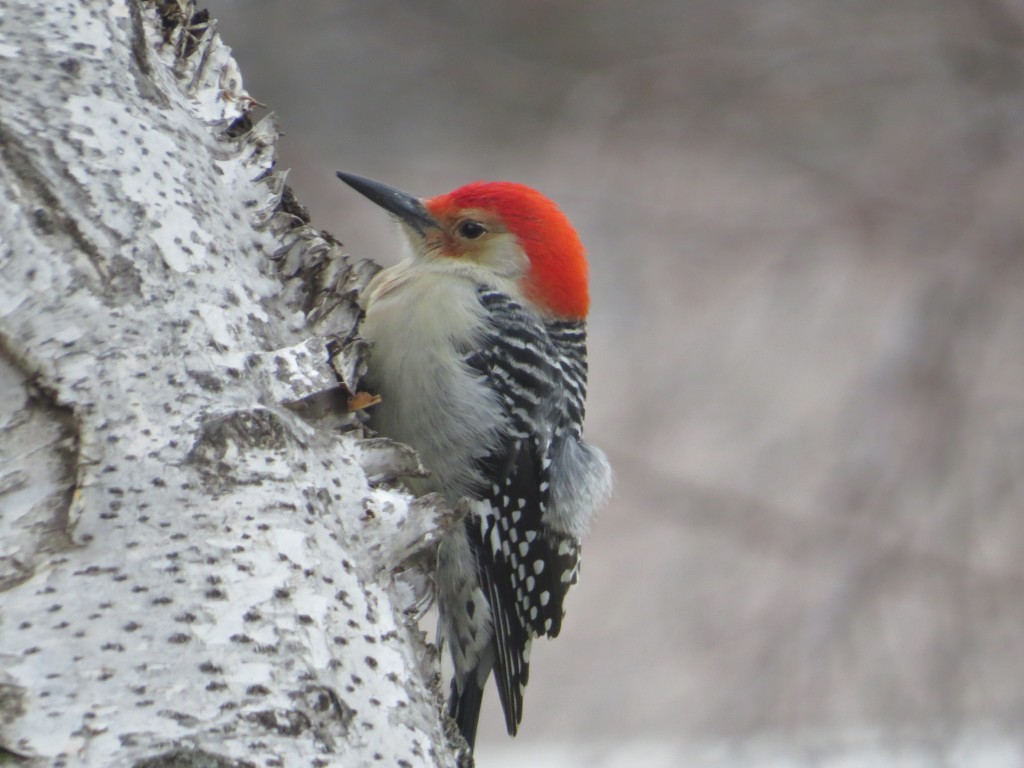
We had a couple of revenge stops to make right by the airport itself. When I picked the guys up late in the afternoon on January 28th, we had about 20 minutes of daylight to search for the Ft. Snelling State Park Barred Owl which is a 5-minute drive from Terminal 1. Not being successful there on that first night, we quickly got over to the aircraft viewing area on Cargo Road just as it was getting dark to look for a reported Snowy Owl. No luck on that one either. Even though Tommy and Gordon got their Snowy and Barred Owl lifers, we all wanted revenge on these particular Owls, especially the Barreds which NOBODY misses on. Anyhow, we were all optimistic and relaxed on this second attempt.
As we were driving into Ft. Snelling State Park, Evan casually mentioned seeing some Trumpeter Swans. This immediately caught Gordon’s attention who informed us that would be a lifer for him! Evan’s eagle-eye had come up with a lifer that wasn’t even on my radar. Tommy was also excited about this sighting as it was the first time he had seen adult birds and only his second time viewing the species. Way to go, Evan!
We also redeemed our failure from the previous night when Tommy spotted the female Barred Owl. The guys enjoyed getting another chance at photographing a more cooperative Barred Owl.
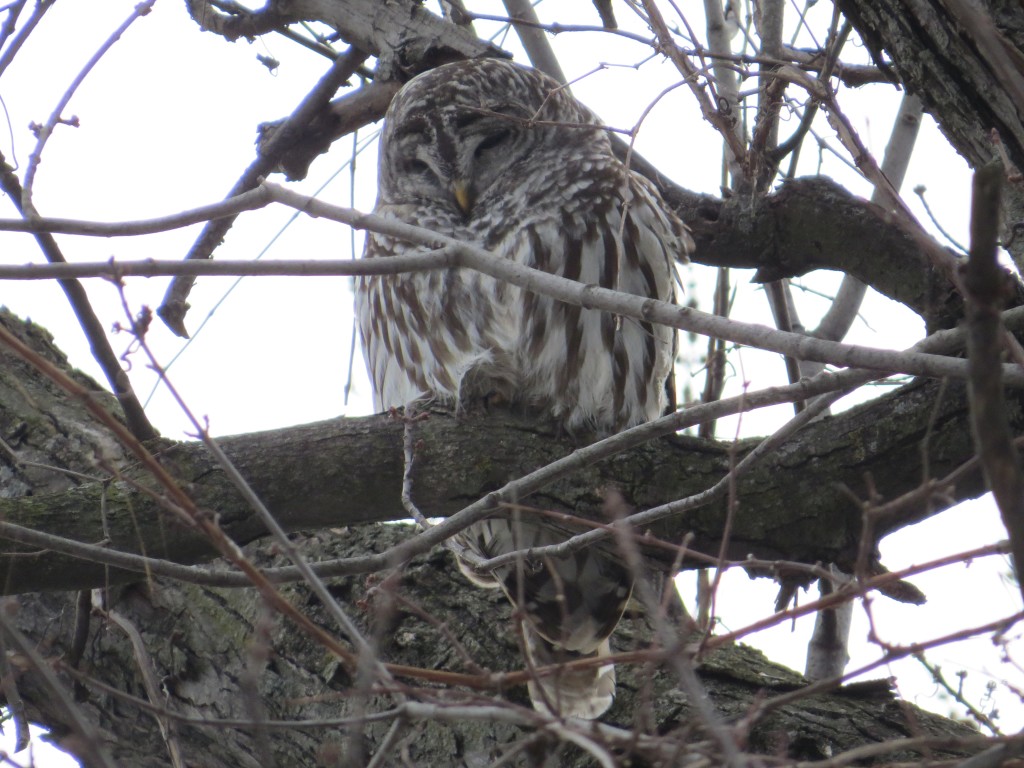
Because we found the Barred in such short order, I told the guys I had enough time to make one quick check for the airport Snowy Owl before I had to hit the road. When I asked them if they were interested in looking, they responded with an emphatic yes.
Driving down Cargo Road we did not spot the bird on any of the perches on which it had been seen recently, like the FedEx building. It turns out that this bird does not play favorites, though, as I spotted it way in the distance on top of the UPS depot as we drove back out from the aircraft viewing area.
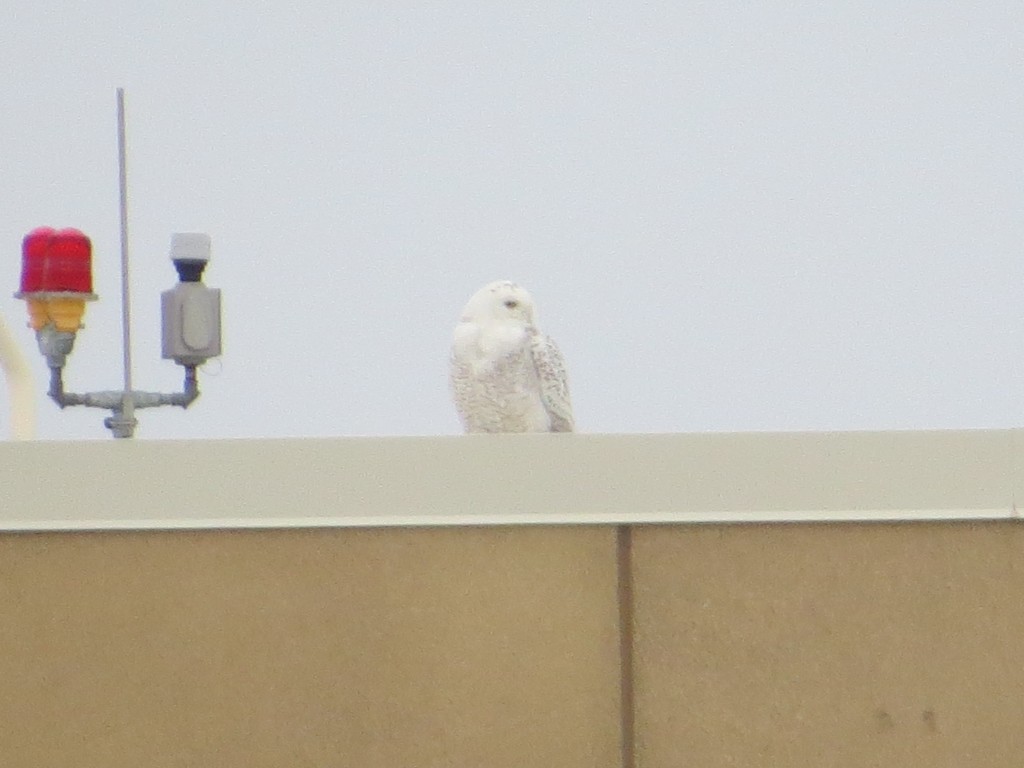
Afterwards, we took the guys to the terminal, said a hasty goodbye, and vowed to go birding again together either here or in Arizona. It was a great last day of birding that added its own unique excitement to a truly epic trip. Here is the summary of day 4’s life birds for Tommy and Gordon.
Black-backed Woodpecker – Gordon, Evan
Red-bellied Woodpecker – Tommy
Trumpeter Swan – Gordon
Trip Analysis
This trip was unforgettable, no unbelievable. It was simply magic, even for me. Though I have seen all of these birds many times, the fact that we saw so many good birds in such a short period of time makes this trip rival some of my out-of-state trips where I have gotten lifers. I enjoy birding northern Minnesota more than anywhere, and I never get tired of its special birds, especially those Owls. It was a thrill to be able to help Gordon and Tommy see them for the first time. To end this trip series, I’d like to point out some fun factoids.
Tommy and Gordon got their three main targets in this order: Great Gray Owl, Snowy Owl, Northern Hawk Owl. For those who are not fans of permutations, there are exactly six orders that this could have happened. Coincidentally I saw those same lifers in that same order.
The number of individuals we saw of these three Owl species made for a nice arithmetic sequence:
Great Gray Owl – 1
Northern Hawk Owl – 2
Snowy Owl – 3
Tommy and Gordon saw the Northern Big 3 on three consecutive days. That is substantially faster than I did it (nearly a year), even after making several northern trips. Here are the dates that I got my lifers.
Great Gray Owl — March 13, 2013
Snowy Owl — December 3, 2013
Northern Hawk Owl — December 26, 2013
Before this trip, I had (surprisingly) seen more Owl species than Tommy. He had 13; I had 14. Now, though, Tommy has 17. Of the 19 regularly occurring Owl species in North America, he is only missing Boreal Owl and Eastern-Screech Owl, both of which reside in Minnesota. I’m trying to convince him that he should get them here, especially since I need one of those as well. After all, how cool would it be to say you got all of North America’s Owls in just two states?
Speaking of Owl lifers, Tommy and I split the work of spotting their four lifers. Never mind how many more Owls Tommy found overall!
Great Gray Owl – Tommy
Snowy Owl – Tommy
Northern Hawk Owl – Josh
Barred Owl – Josh
Overall, Tommy ended the trip with 15 life birds and Gordon had 18. That is a whopping number, especially when I have only seen 60 species total in Minnesota for 2016.
Tommy and Gordon saw a LOT of GOOD birds in a SHORT amount of time. Below I’ve listed the most difficult species they saw on this four-day trip along with the dates that I got my lifer for each to give some perspective as to how good of a trip they had. As you will see, it’s taken me a long time to get these key birds after many, many trips to the north. I’ll start with my most recent lifers.
Great Black-backed Gull — November 28, 2015
Iceland Gull — November 28, 2015
Glaucous Gull — November 28, 2015
Black-backed Woodpecker — June 22, 2015
Gyrfalcon — March 8, 2015
Thayer’s Gull — November 8, 2014
Boreal Chickadee — December 28, 2013
Northern Hawk Owl — December 26, 2013
Snowy Owl — December 3, 2013
Great Gray Owl — March 13, 2013
Favorite Sighting of the Trip: Black-backed Woodpecker
Favorite Personal Find of the Trip: Barred Owl just south of the Canadian border
Best Overall Bird Experience: Hanging with the Northern Hawk Owl in the Beltrami Island State Forest
Biggest Relief of the Trip: Getting the Great Gray immediately
Biggest Stressor of the Trip: Driving in reverse for 3.6 miles on the Pitt Grade Road Snowmobile Trail in a mini-van
Biggest Miss of the Trip: American Black Duck
Thank You!
This trip’s success is only because so many great Minnesota birders and non-birders made it happen. Therefore I’d like to acknowledge those folks.
Clinton Nienhaus – For all his Sax-Zim Bog advice on the Bog’s birds and their habits. Additionally, Clinton spotted the guys’ Glaucous Gull lifer at Canal Park.
Jason Mandich – For his SZ Bog advice and extra set of eyes in the Bog.
Jeff Grotte – For his Owling advice that made for an incredible final day of Owling in the Twin Cities.
Peder Svingen – For his Gull identification counseling and superior Superior Snowy Owl tips.
Randy Frederickson – For giving us timely heads-up texts on the Iceland and Great Black-backed Gulls.
John Richardson – For being an extra set of eyes at Canal Park, wearing his trademark Union Jack stocking cap, and bringing his British cheer to the Canal Park Gull party.
Kim Risen – For pointing out a bonus Snowy Owl in Superior.
Sandy Aubol – For her Northern Hawk Owl advice in Roseau County.
Evan – For always having an eagle-eye that ended up getting Gordon a bonus, unexpected Trumpeter Swan lifer.
Mom and Dad – For the generous use of their home and vehicle for our epic birding odyssey.
Melissa – For her enthusiastic support of this trip that kept me away from the family for so long.
Hungry For More?
Me too! This past weekend I worked as a guide at the annual Sax-Zim Bog Birding Festival. Later this week look for a write-up and photos of more great northern Minnesota birds from that trip!
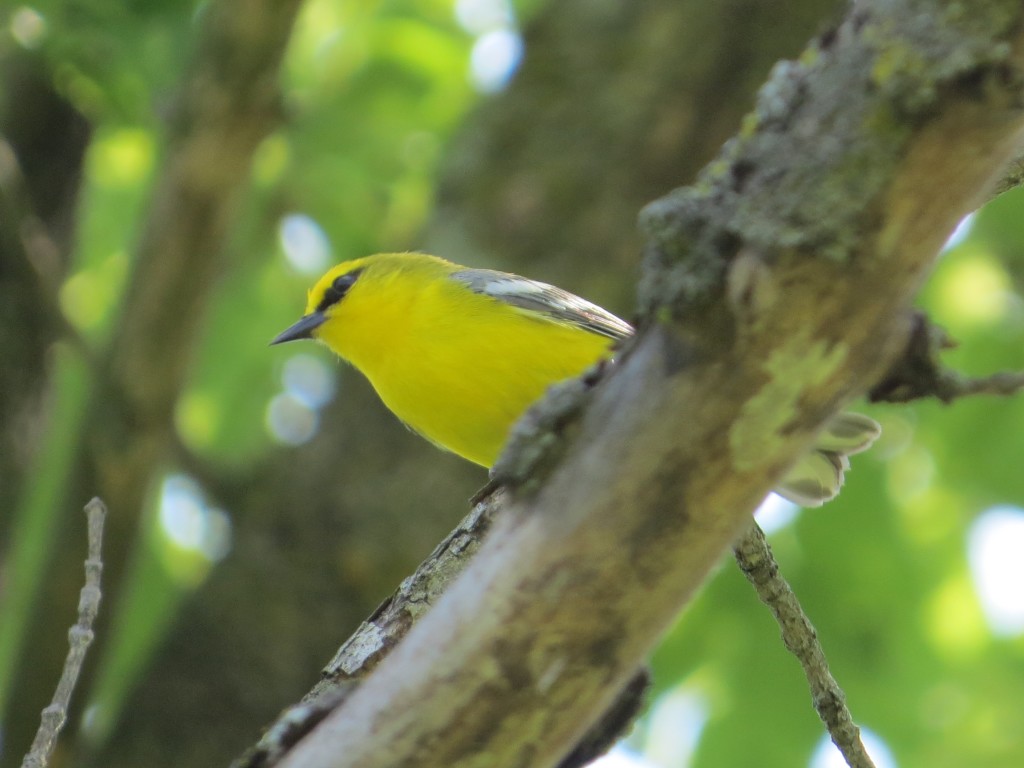 Once we hiked through the prairie habitat and into the woods, we walked along a trail on glacial ridge where the slopes quickly became quite steep on each side of the trail. Thanks to some great insights from Washington County birding guru, Pete Nichols, we cut down one of these slopes on a goat path of sorts to reach the creek in the ravine below. This was the promised land for BOTH the Louisiana Waterthrush and the Acadian Flycatcher. It did not take long for us to hear the sharp “Pit-se!” call of our shared Acadian lifer. Arriving at the creek bottom, Tommy instantly pointed out the chip note of the Louisiana Waterthrush, which had the honor of being my 400th life bird. The bird showed well for us but would not sit still. Its song was beautiful as it rang through the ravine.
Once we hiked through the prairie habitat and into the woods, we walked along a trail on glacial ridge where the slopes quickly became quite steep on each side of the trail. Thanks to some great insights from Washington County birding guru, Pete Nichols, we cut down one of these slopes on a goat path of sorts to reach the creek in the ravine below. This was the promised land for BOTH the Louisiana Waterthrush and the Acadian Flycatcher. It did not take long for us to hear the sharp “Pit-se!” call of our shared Acadian lifer. Arriving at the creek bottom, Tommy instantly pointed out the chip note of the Louisiana Waterthrush, which had the honor of being my 400th life bird. The bird showed well for us but would not sit still. Its song was beautiful as it rang through the ravine.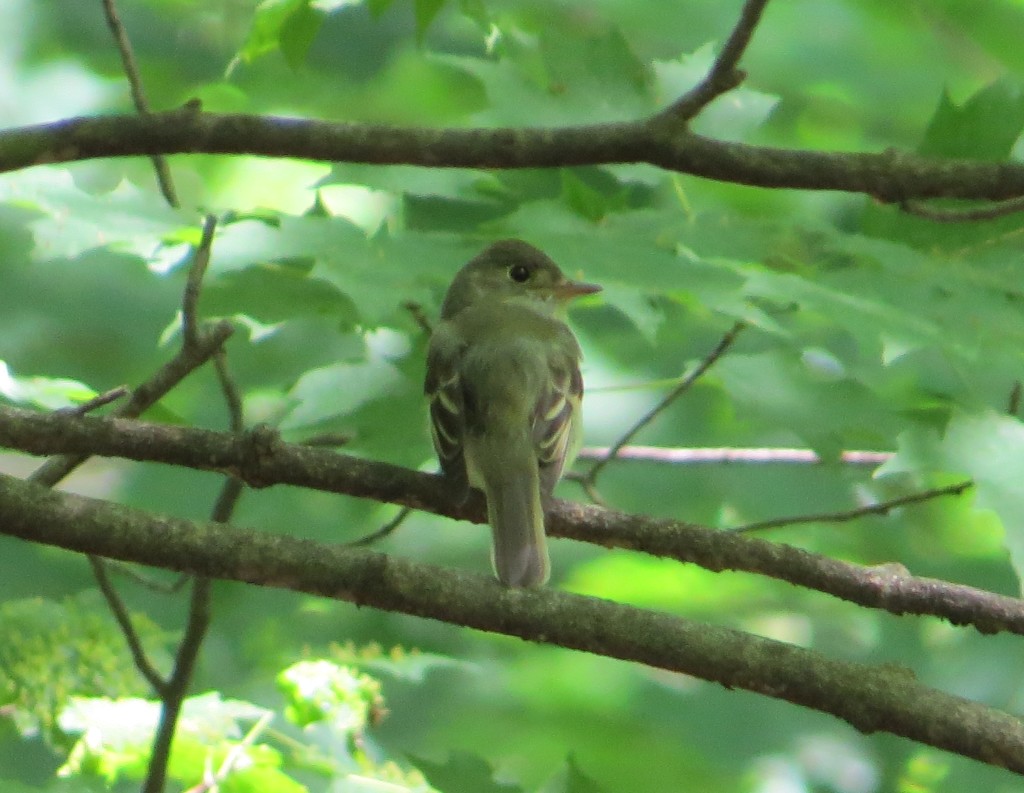 Confession: I’m starting to really like the Empids, at least the eastern ones. Though the five are difficult to differentiate visually, their unique habitat choices and equally unique songs make identification a lot easier than I once thought. Hearing this Acadian Flycatcher was much more fun than just seeing it.
Confession: I’m starting to really like the Empids, at least the eastern ones. Though the five are difficult to differentiate visually, their unique habitat choices and equally unique songs make identification a lot easier than I once thought. Hearing this Acadian Flycatcher was much more fun than just seeing it.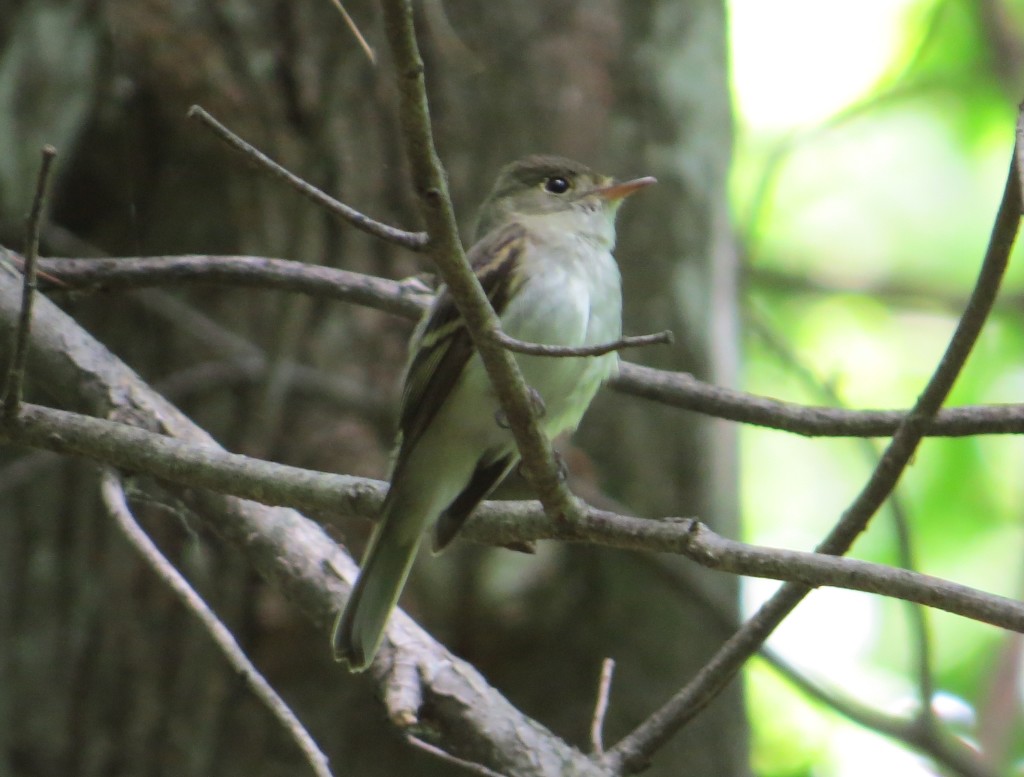 An equal auditory delight was the Louisiana Waterthrush. It was loud. We had at least two different birds. This one below put on an impressive spinning and tail-bobbing display on this log right in front of us.
An equal auditory delight was the Louisiana Waterthrush. It was loud. We had at least two different birds. This one below put on an impressive spinning and tail-bobbing display on this log right in front of us.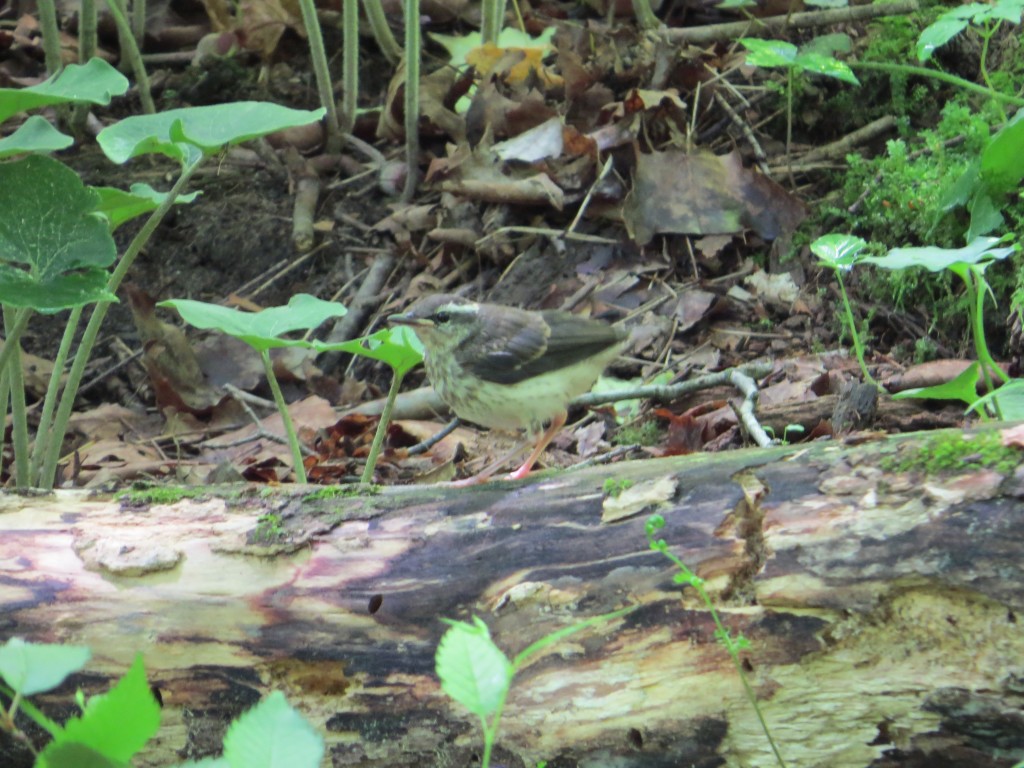
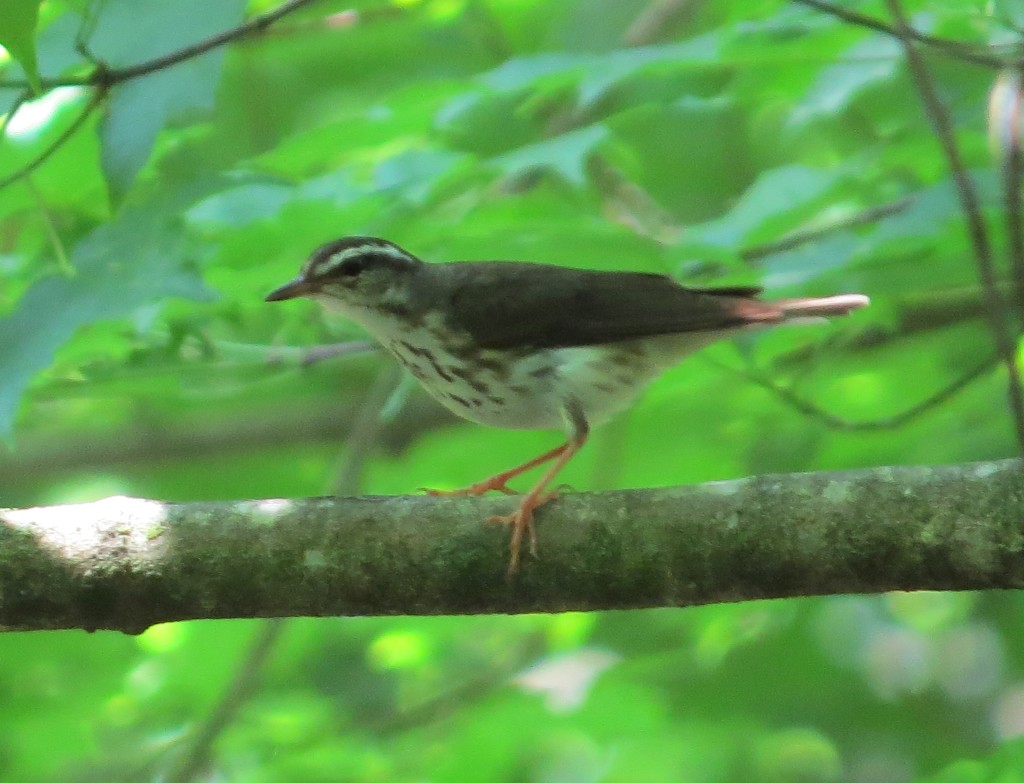 Tommy and I became absorbed in our separate pursuits spending more time than we anticipated in our searches. Is that a Scarlet Tanager? Nope, just a super content Evan who kept busy the entire time playing in the creek. Good thing he wore his water boots.
Tommy and I became absorbed in our separate pursuits spending more time than we anticipated in our searches. Is that a Scarlet Tanager? Nope, just a super content Evan who kept busy the entire time playing in the creek. Good thing he wore his water boots.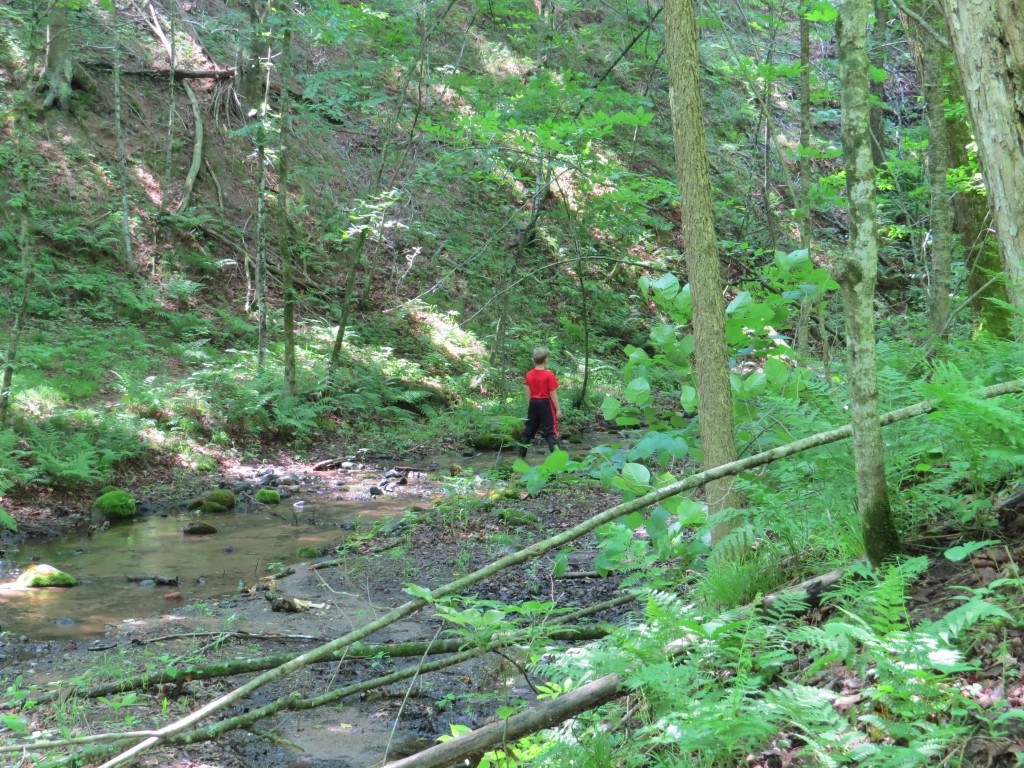
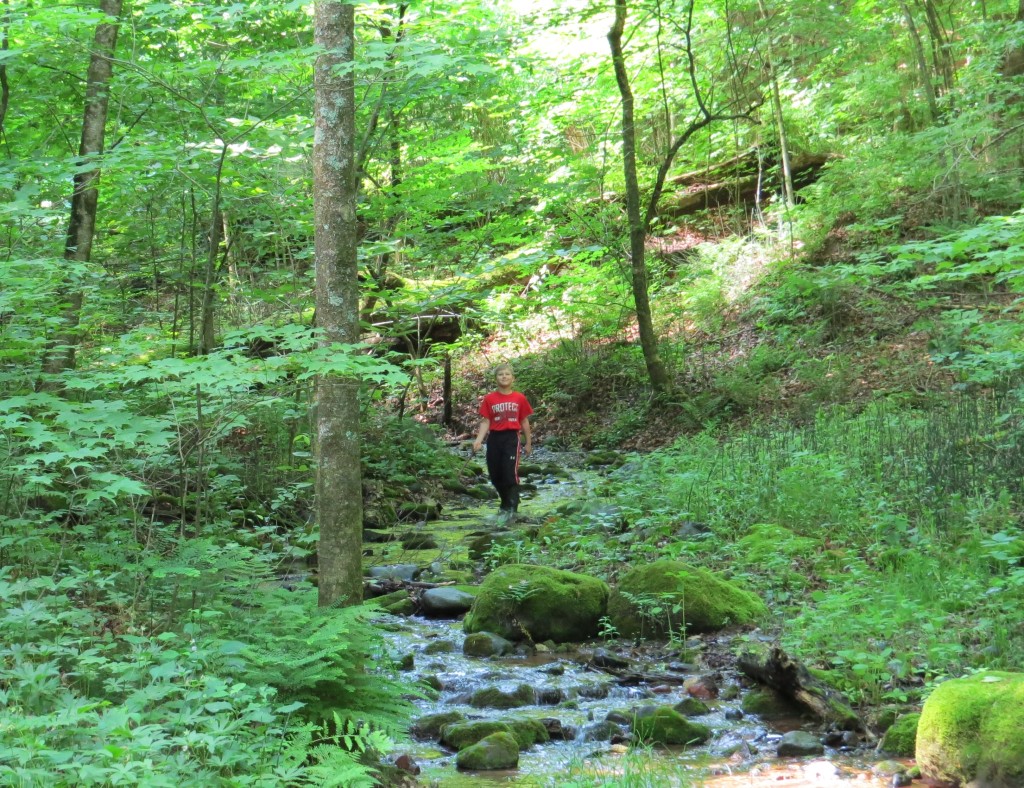 Another lifer for Tommy that we both enjoyed up close was the Veery.
Another lifer for Tommy that we both enjoyed up close was the Veery.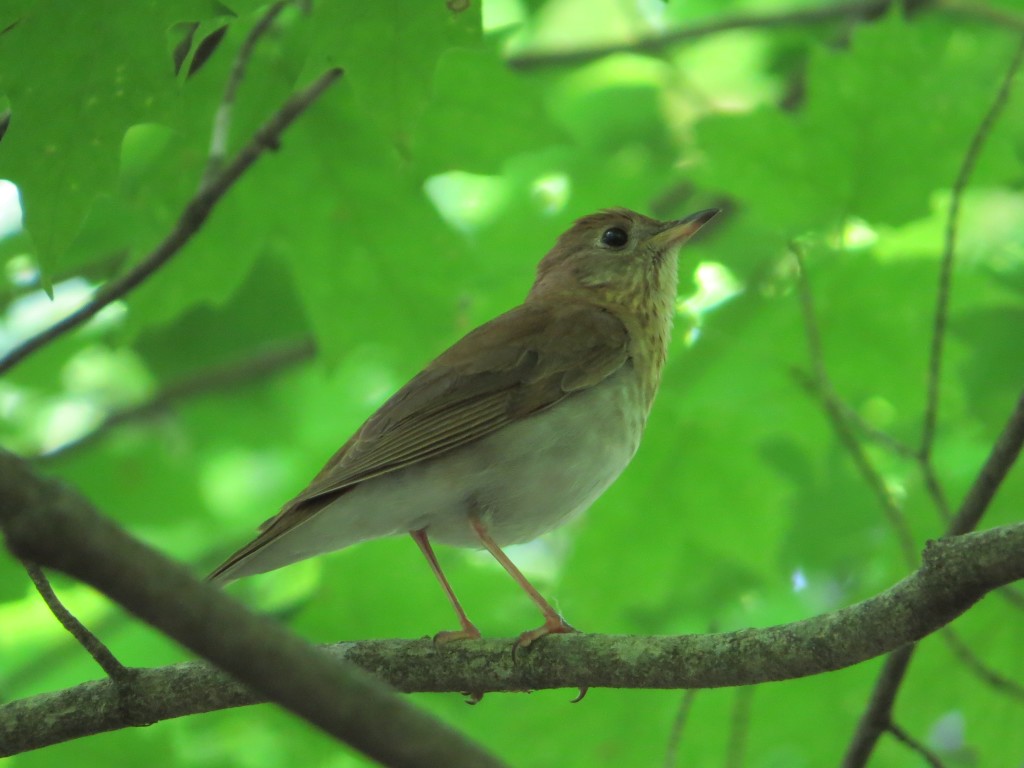 The Veery’s song is the best. It’s unmistakable song can often be heard throughout the deciduous woods of Minnesota. Never before I had I actually seen one sing.
The Veery’s song is the best. It’s unmistakable song can often be heard throughout the deciduous woods of Minnesota. Never before I had I actually seen one sing.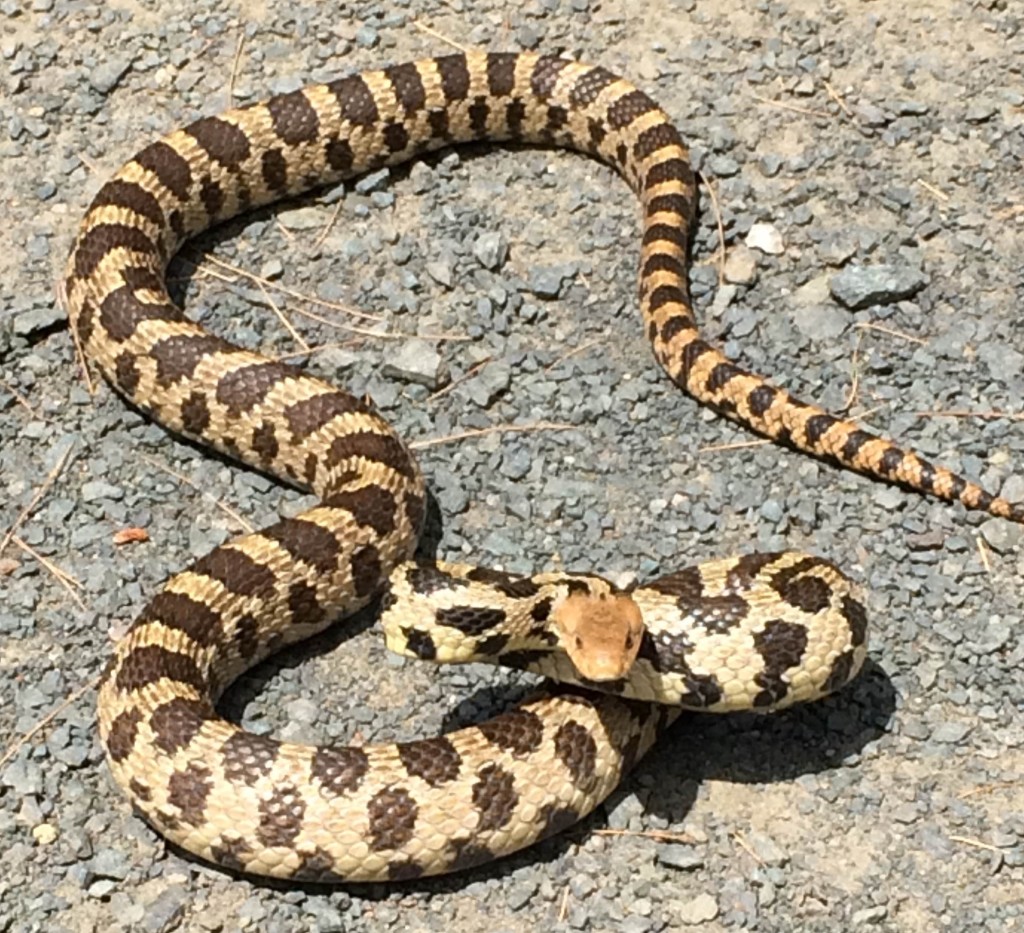 Coming up is one more Minnesota post with Tommy about a rare Warbler we went after for Tommy’s life list. And then we will cover our side trip to Wisconsin to search for two endangered species. Stay tuned.
Coming up is one more Minnesota post with Tommy about a rare Warbler we went after for Tommy’s life list. And then we will cover our side trip to Wisconsin to search for two endangered species. Stay tuned.
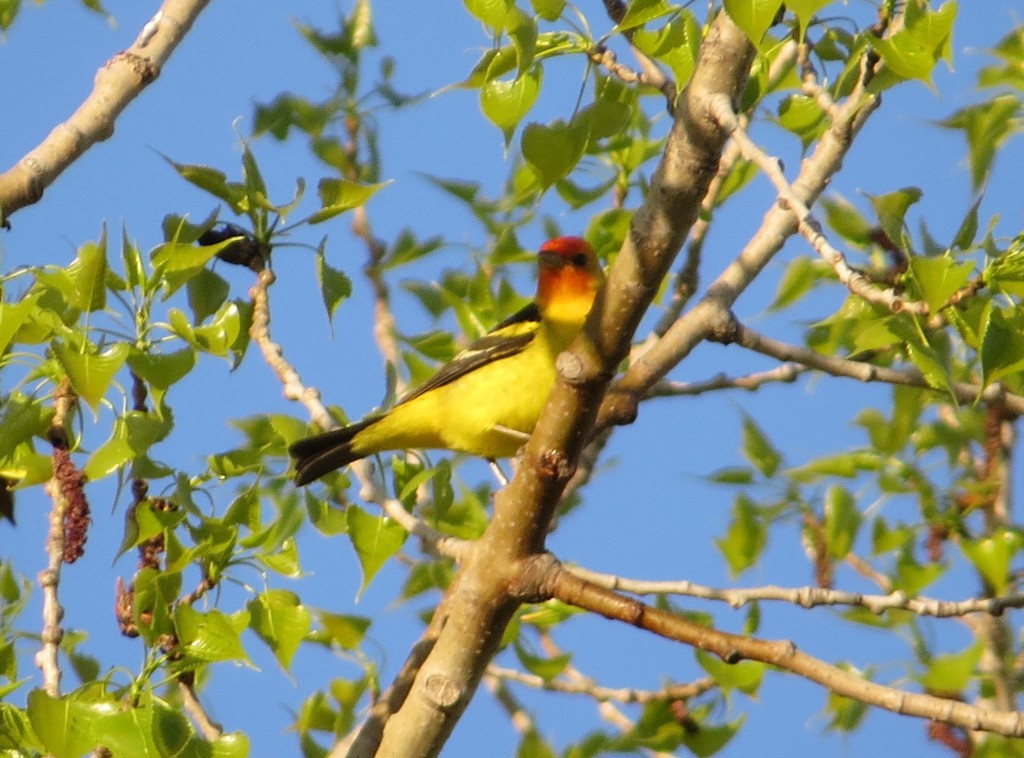
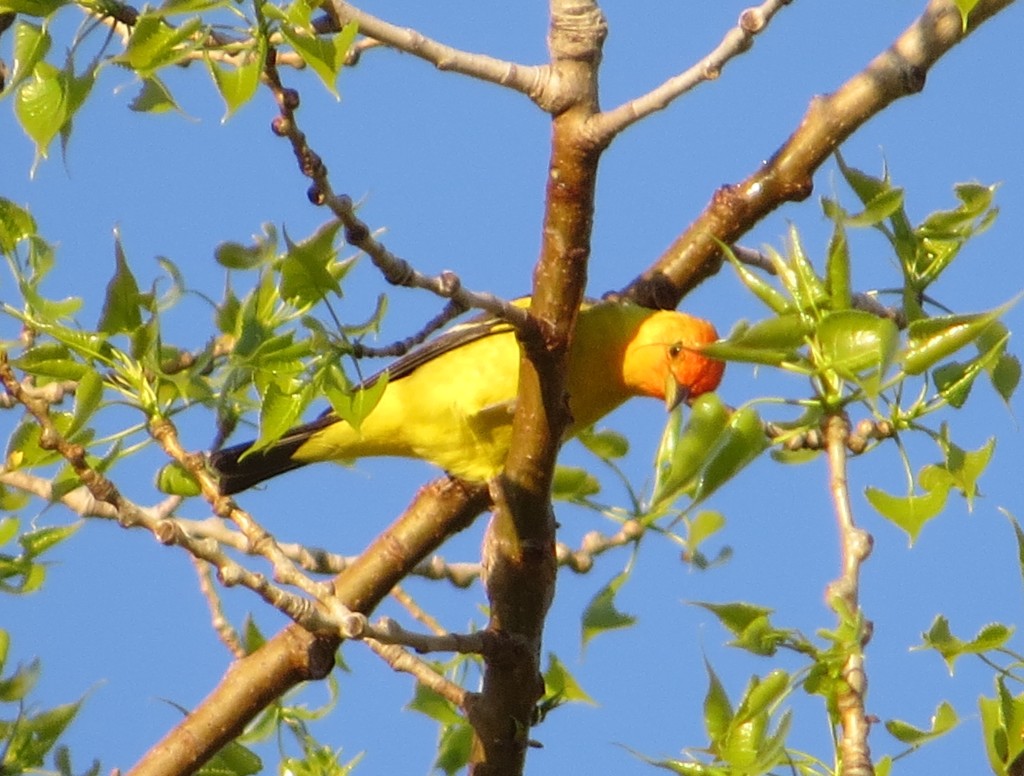 Only one or two WETAs show up in MN every year; lucky us that it was our turn to host. Here my two-hour one-way chase to add this state bird last year was for nought. What a spectacular rarity and a beauty on top of that. This was a bird I yearned to see in the montane forests of Colorado two years ago (and eventually did); now luck dropped one on the doorstep, almost literally for Joel.
Only one or two WETAs show up in MN every year; lucky us that it was our turn to host. Here my two-hour one-way chase to add this state bird last year was for nought. What a spectacular rarity and a beauty on top of that. This was a bird I yearned to see in the montane forests of Colorado two years ago (and eventually did); now luck dropped one on the doorstep, almost literally for Joel.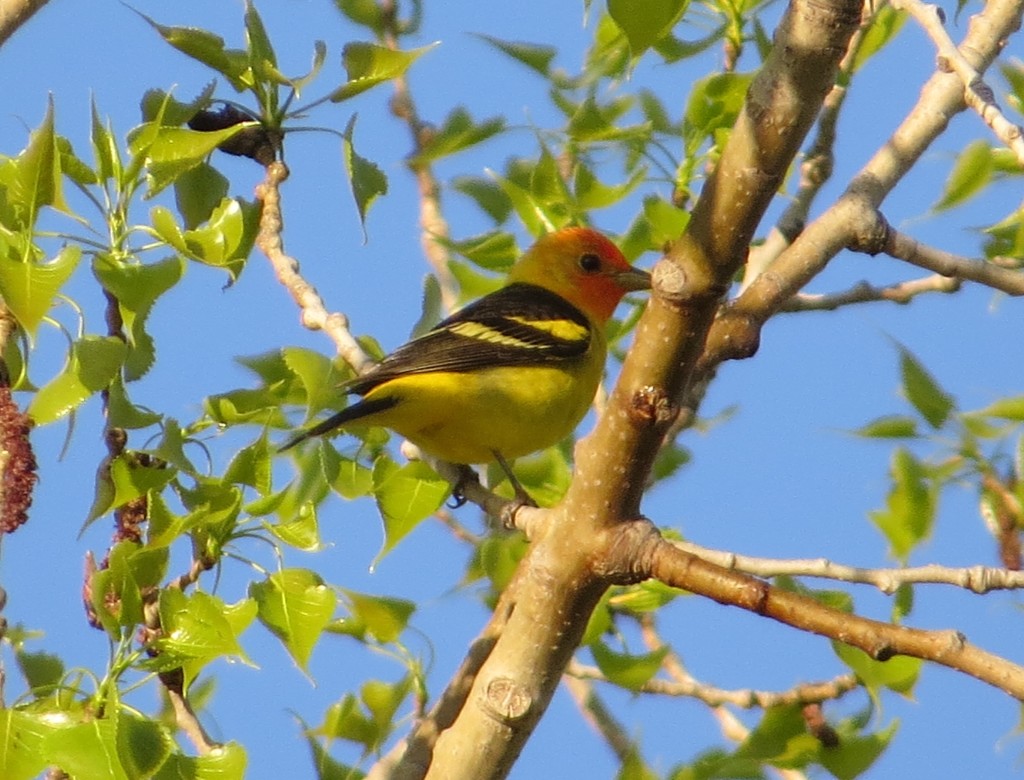 Steve Gardner also came out to enjoy the Tanager. As we discussed my travel dilemmas for the next day, Steve advised me to go the Scoter route. Settled. Seeing a vivid, bright male bird made me want to see another. The best part was that I could ask some Duluth friends to check on the Scoter in the morning to even see if that was still a viable option come travel time.
Steve Gardner also came out to enjoy the Tanager. As we discussed my travel dilemmas for the next day, Steve advised me to go the Scoter route. Settled. Seeing a vivid, bright male bird made me want to see another. The best part was that I could ask some Duluth friends to check on the Scoter in the morning to even see if that was still a viable option come travel time.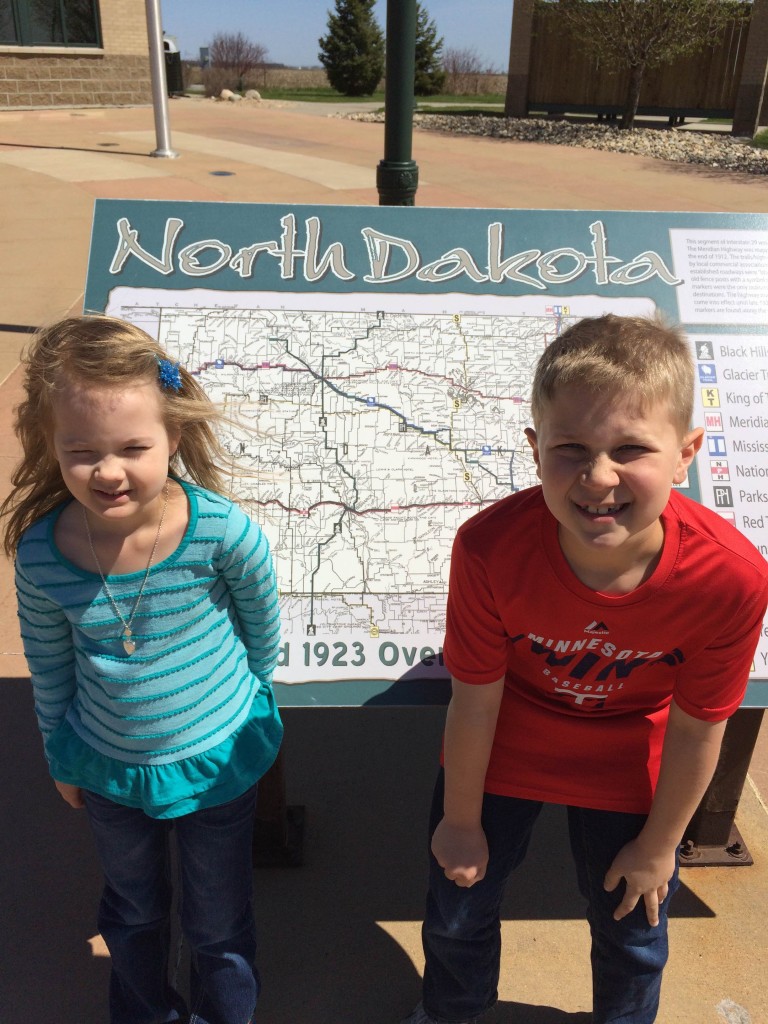
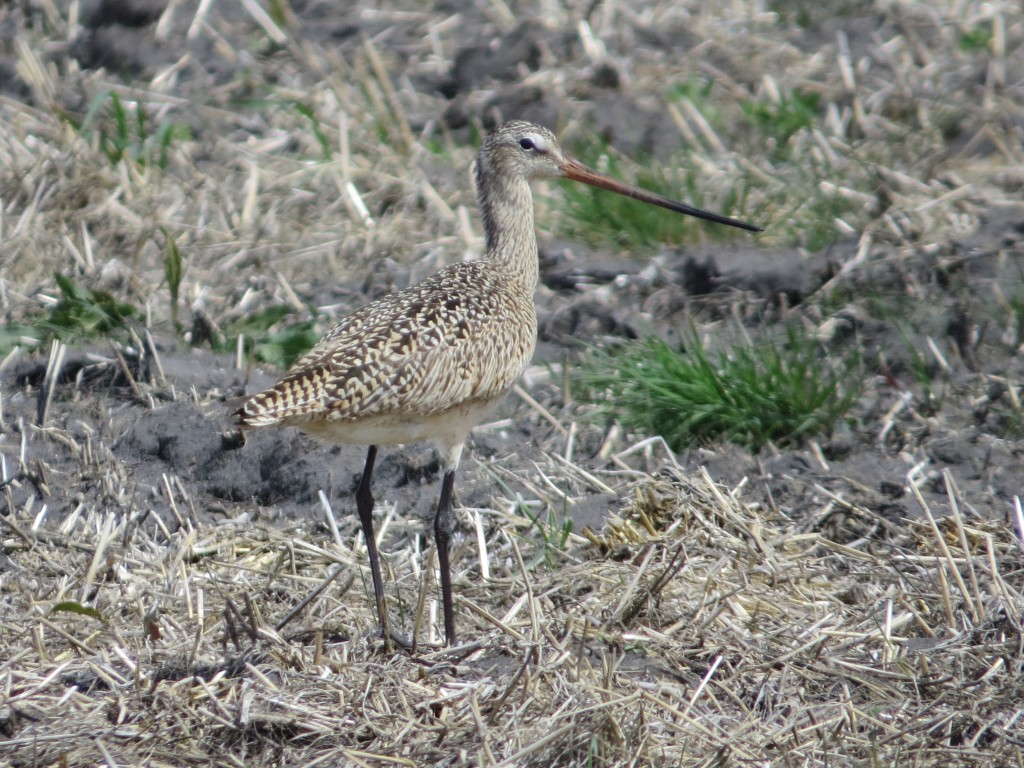
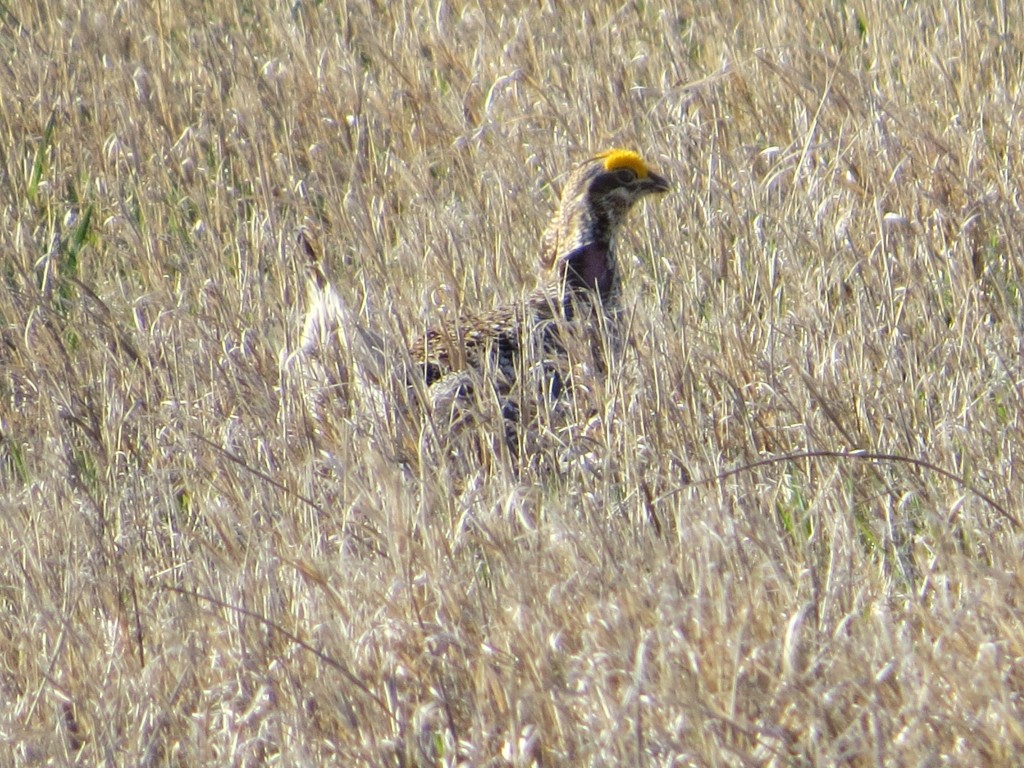
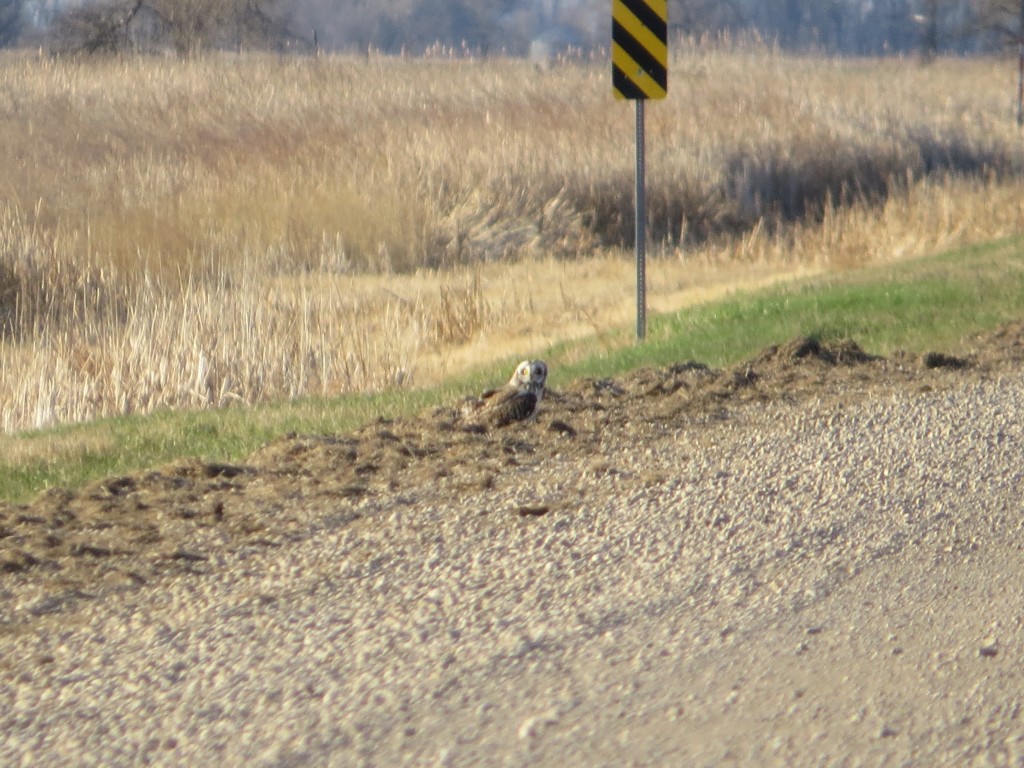 These birds don’t seem to perch for long (or at all). Rather shortly this one took to the air. It was amazing how fast and how much ground it can cover and how unpredictable its flight path is. Amazingly this Owl came back for another, much closer roadside perch:
These birds don’t seem to perch for long (or at all). Rather shortly this one took to the air. It was amazing how fast and how much ground it can cover and how unpredictable its flight path is. Amazingly this Owl came back for another, much closer roadside perch: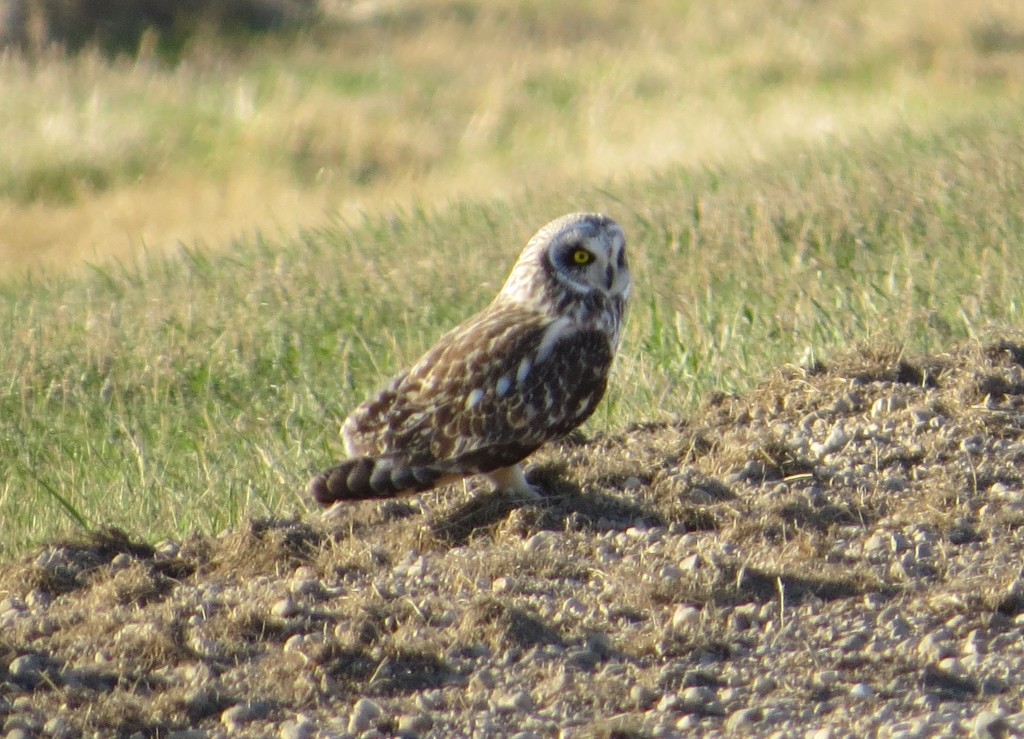
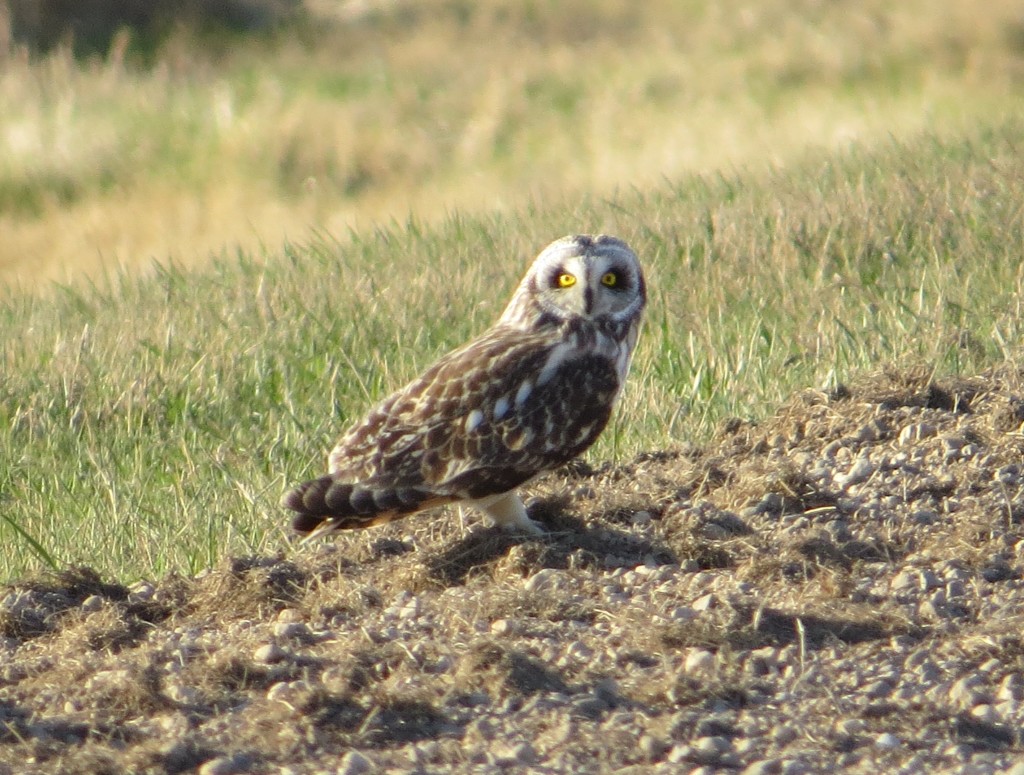
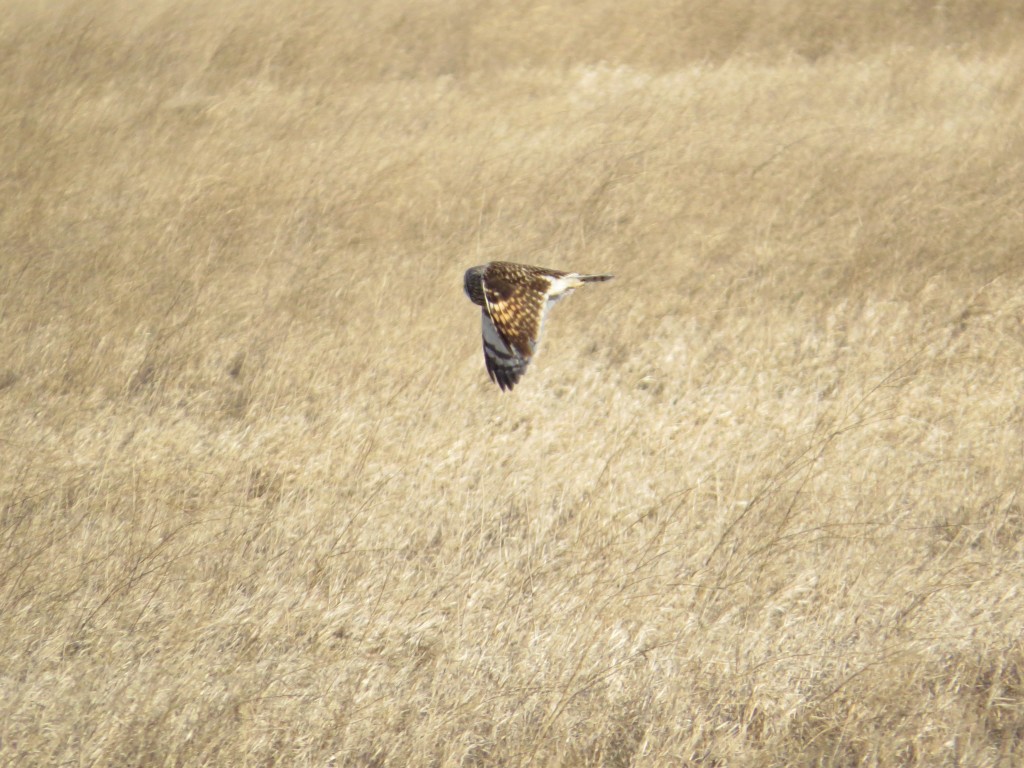
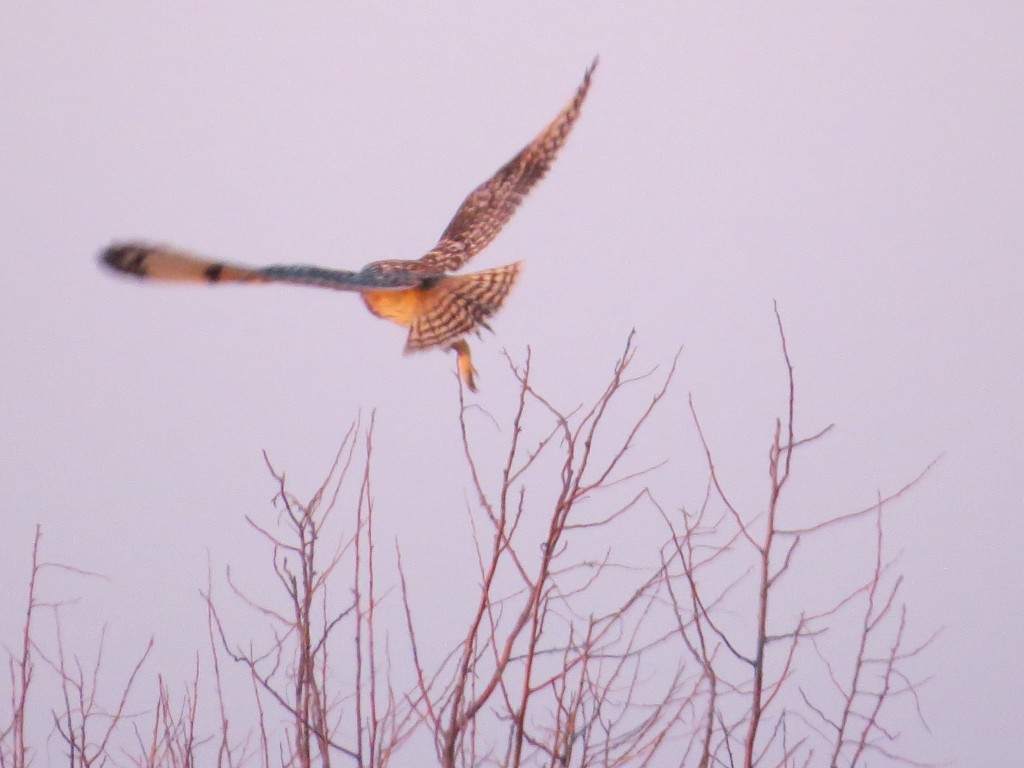 But enjoying the hunting behavior of this Owl in this habitat is half the fun.
But enjoying the hunting behavior of this Owl in this habitat is half the fun.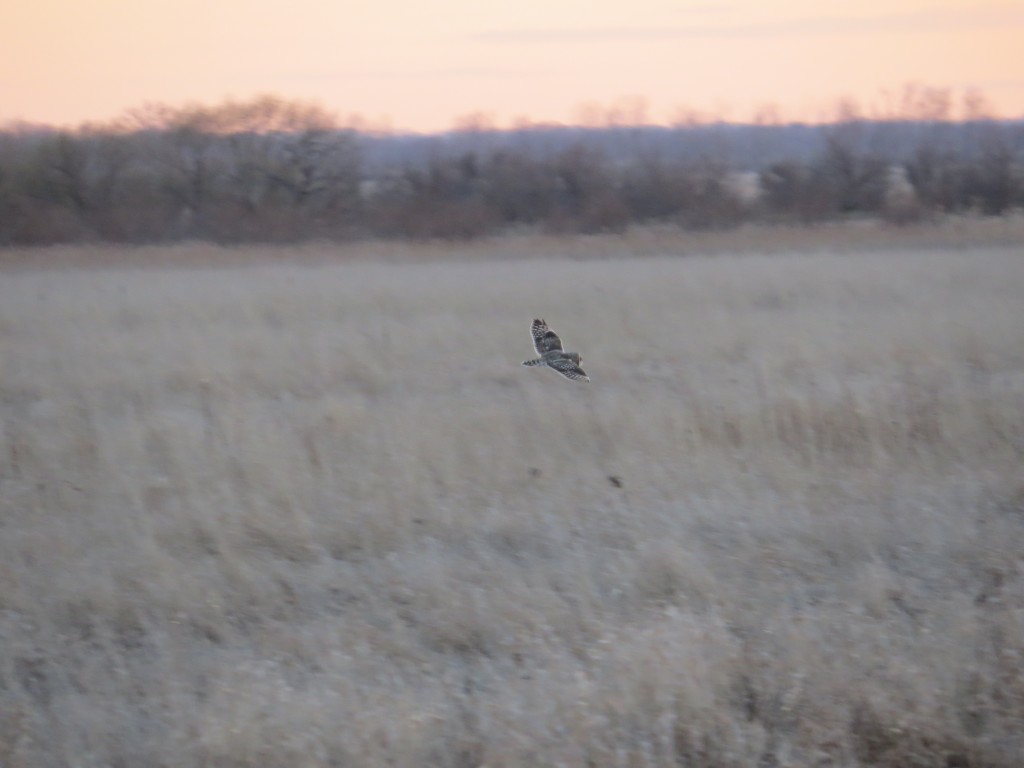 It was really tough to keep track of the numbers of Short-ears we were seeing as they cover so much ground so quickly. I conservatively eBirded 7 of them. It was a lot of fun to witness the Short-eared phenomenon in action. Sandy was spotting all the birds, and I was hoping to get in on the fun and pick one out myself. Eventually it happened.
It was really tough to keep track of the numbers of Short-ears we were seeing as they cover so much ground so quickly. I conservatively eBirded 7 of them. It was a lot of fun to witness the Short-eared phenomenon in action. Sandy was spotting all the birds, and I was hoping to get in on the fun and pick one out myself. Eventually it happened.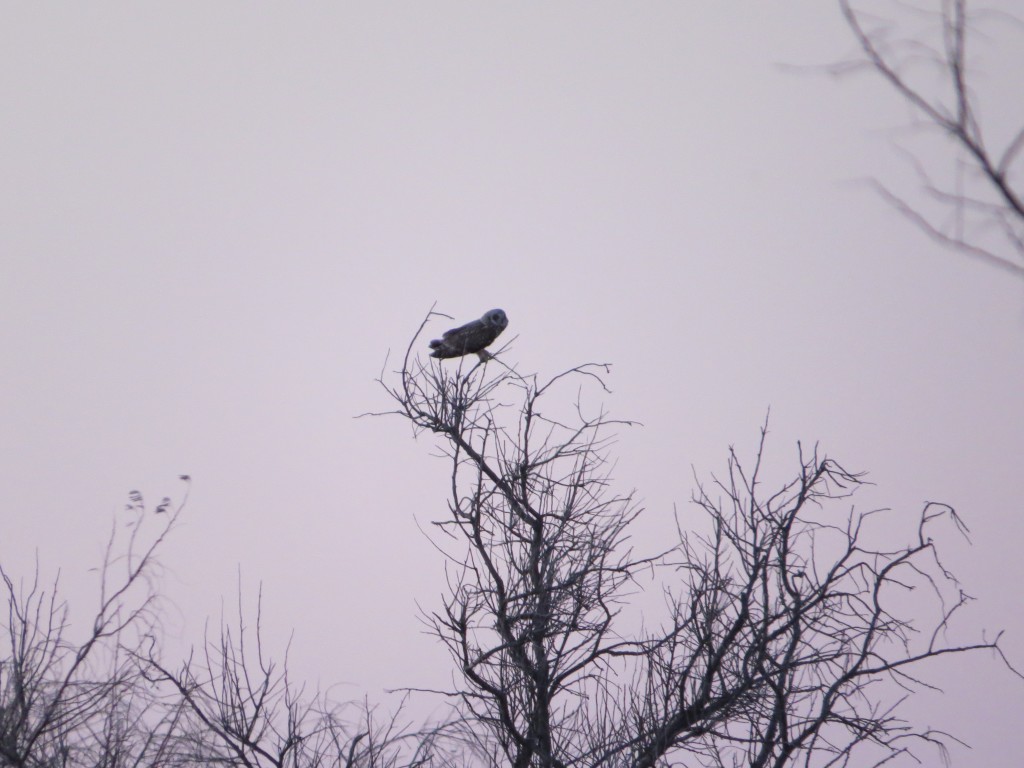 And then it happened again as I flushed one from the side of the road in my headlights on our way back to Grand Forks. I’m glad I didn’t hit it!
And then it happened again as I flushed one from the side of the road in my headlights on our way back to Grand Forks. I’m glad I didn’t hit it!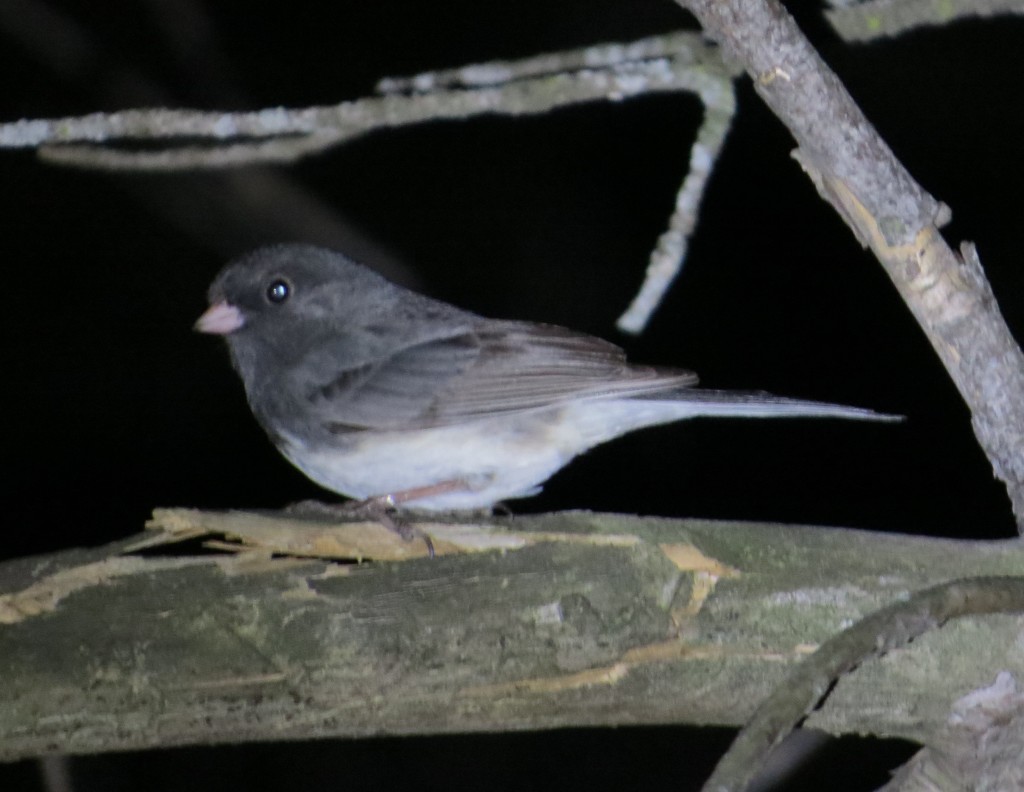
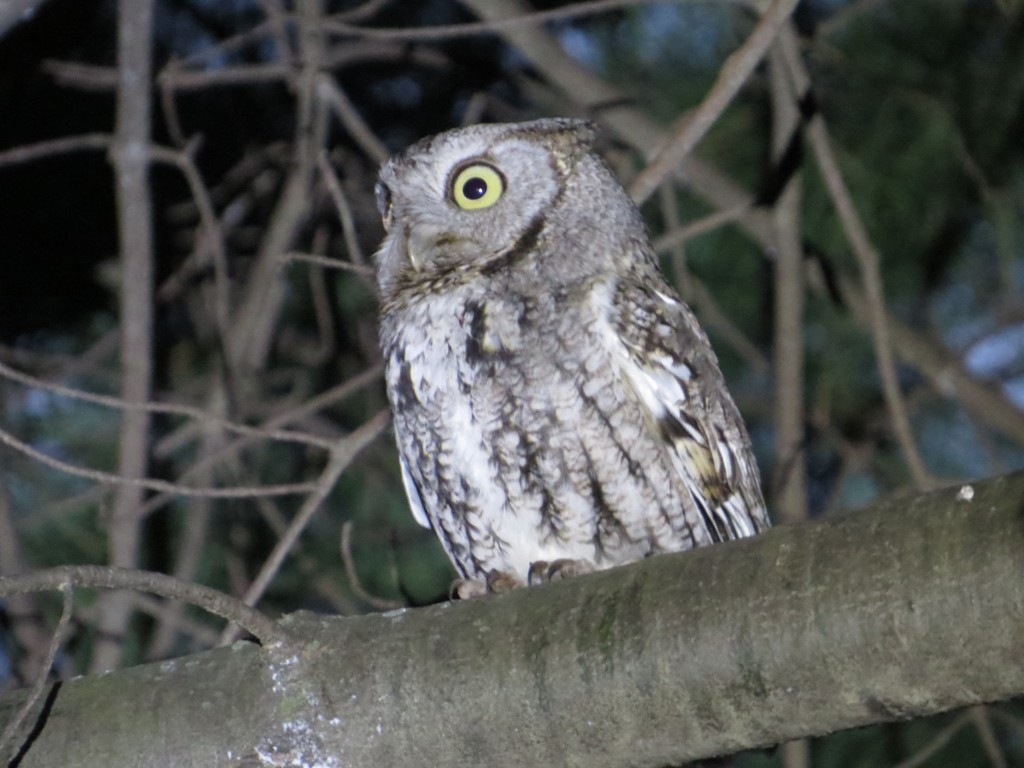 The Owl vocalized often and moved from perch to perch. It was simply awesome.
The Owl vocalized often and moved from perch to perch. It was simply awesome.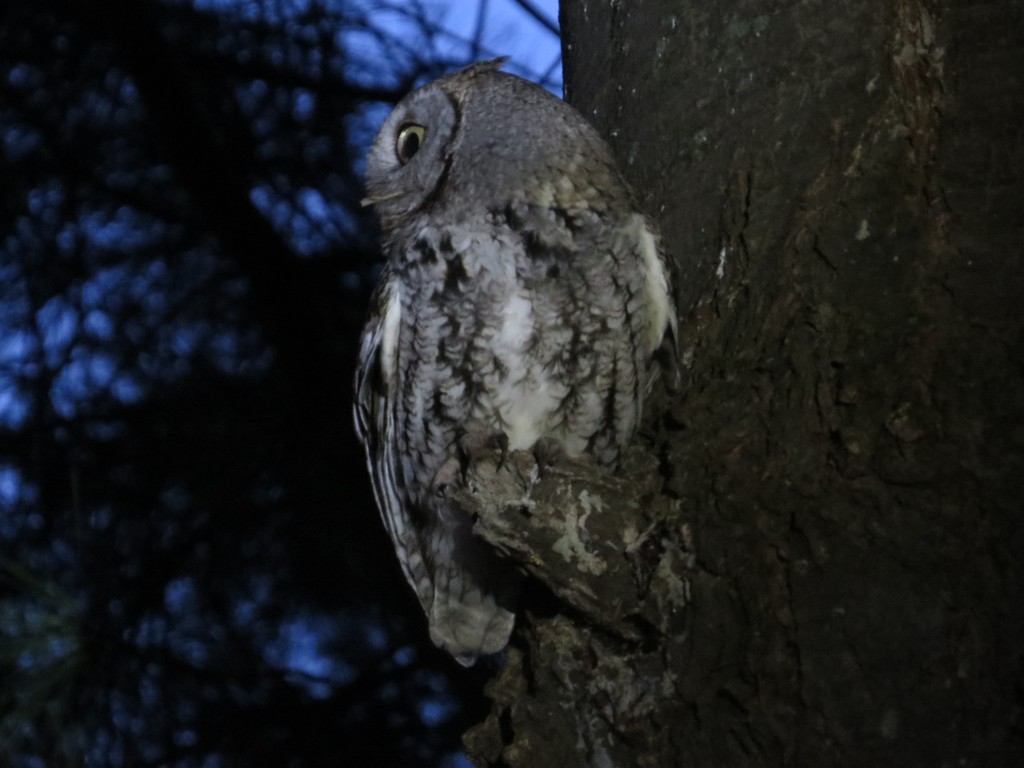 I was amazed by how hyperactive this Owl was–it pays to observe a nocturnal bird nocturnally! Here’s a short video where you can see what I mean.
I was amazed by how hyperactive this Owl was–it pays to observe a nocturnal bird nocturnally! Here’s a short video where you can see what I mean.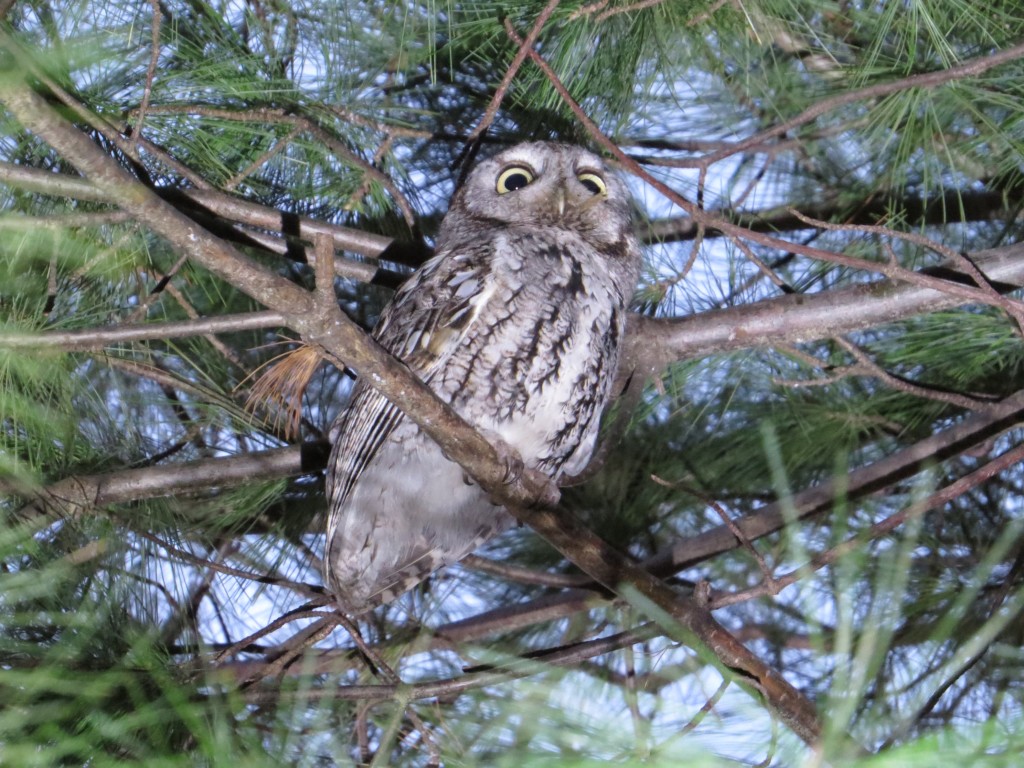
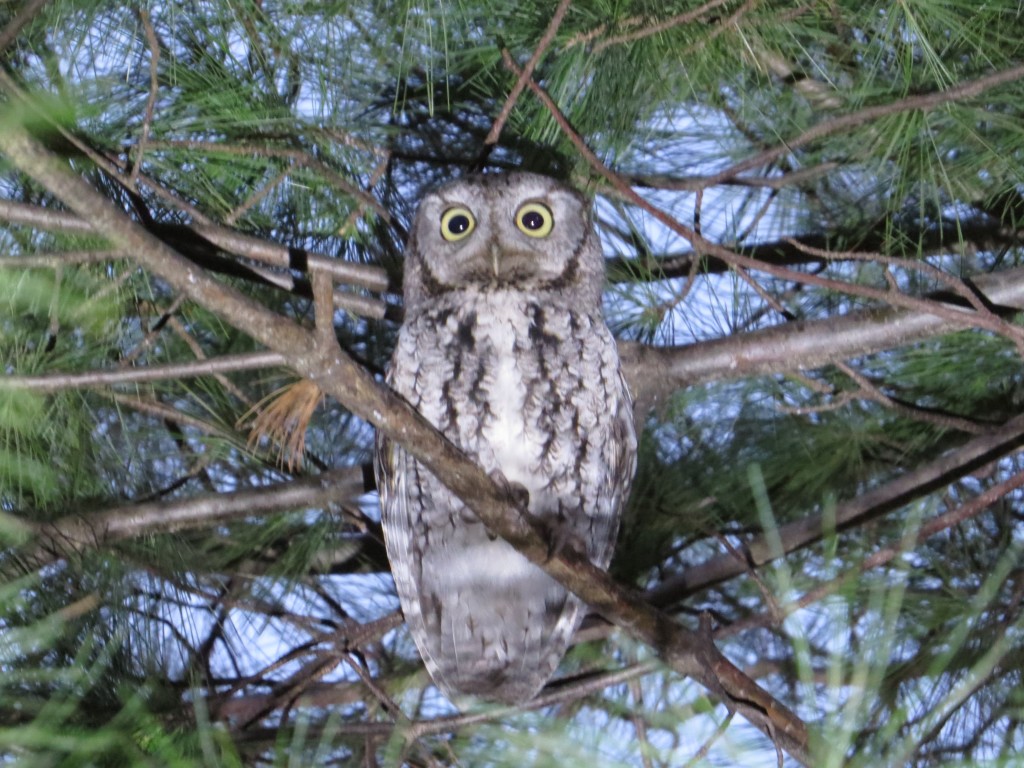 This bird called often with its monotonic trill. Hearing it was a new thing for me and just as thrilling as seeing it. Check it out.
This bird called often with its monotonic trill. Hearing it was a new thing for me and just as thrilling as seeing it. Check it out.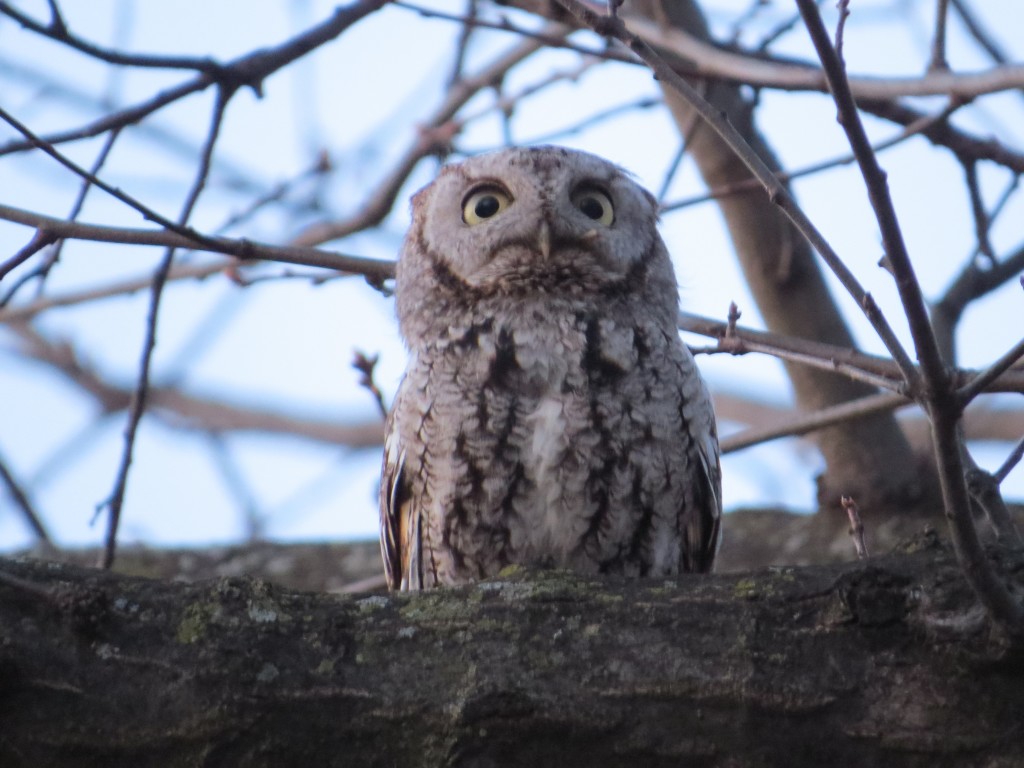 Eventually, though, it retired to one final perch and quieted down.
Eventually, though, it retired to one final perch and quieted down.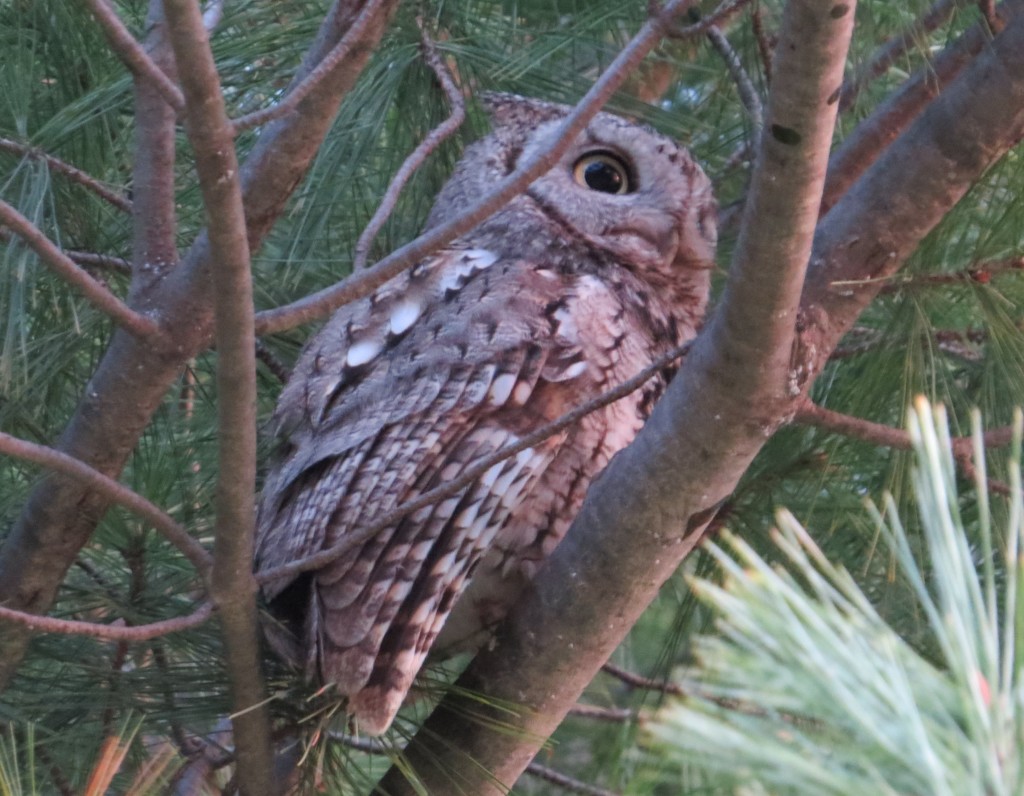
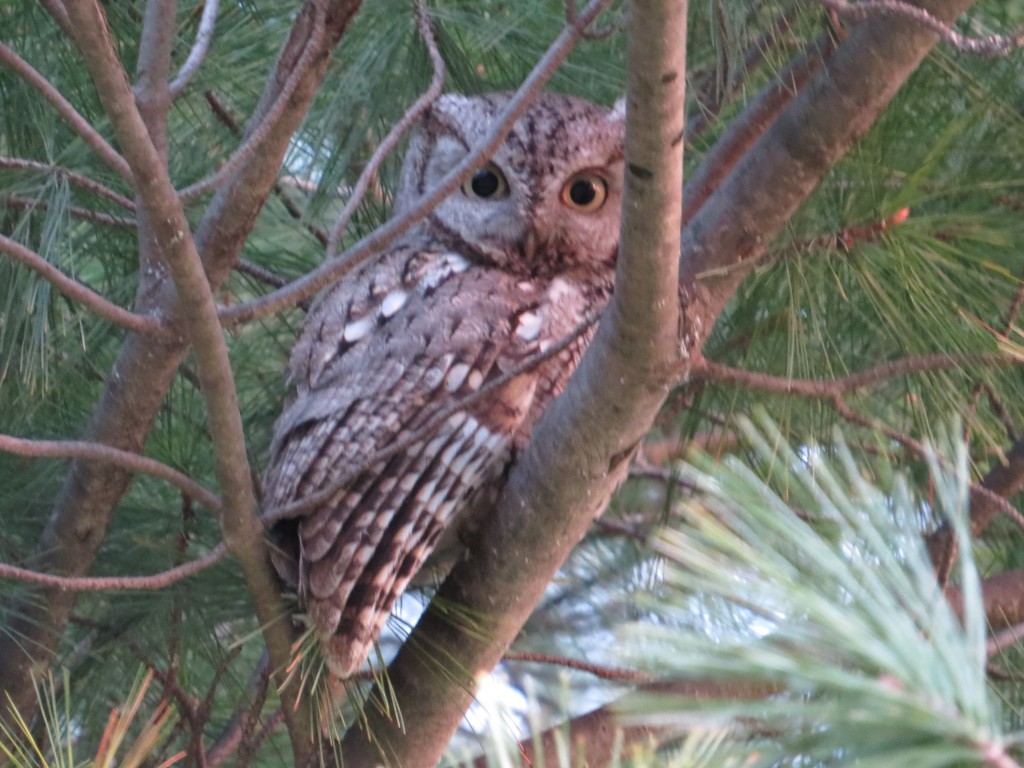 It was now to time to take celebratory photos.
It was now to time to take celebratory photos.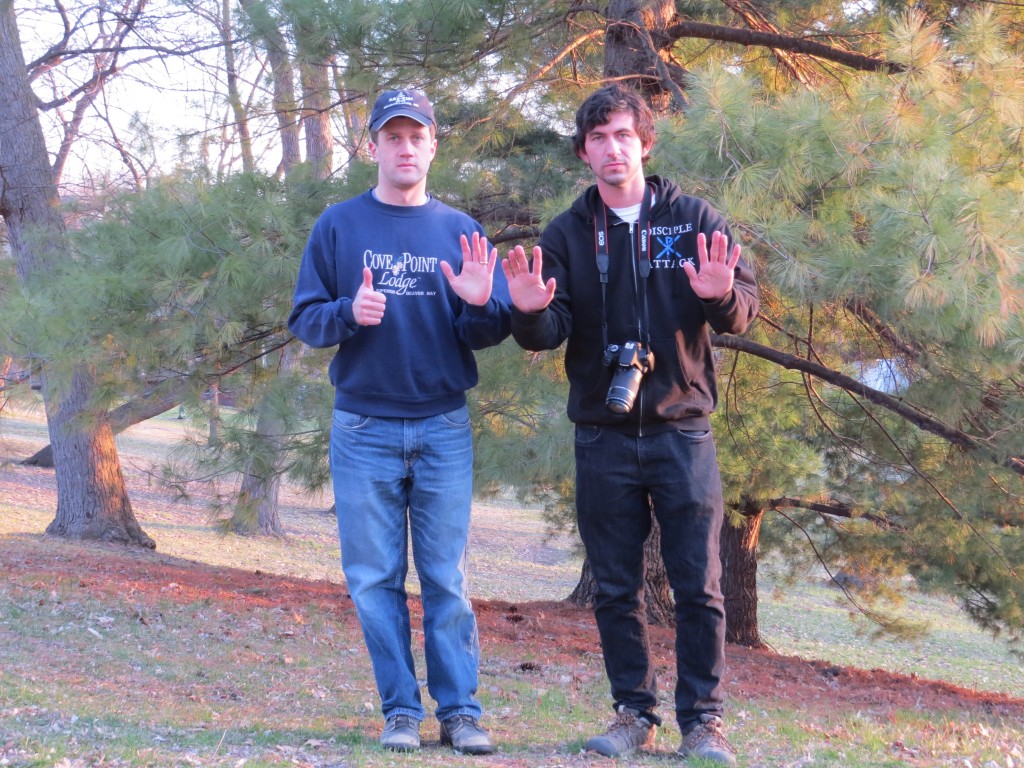
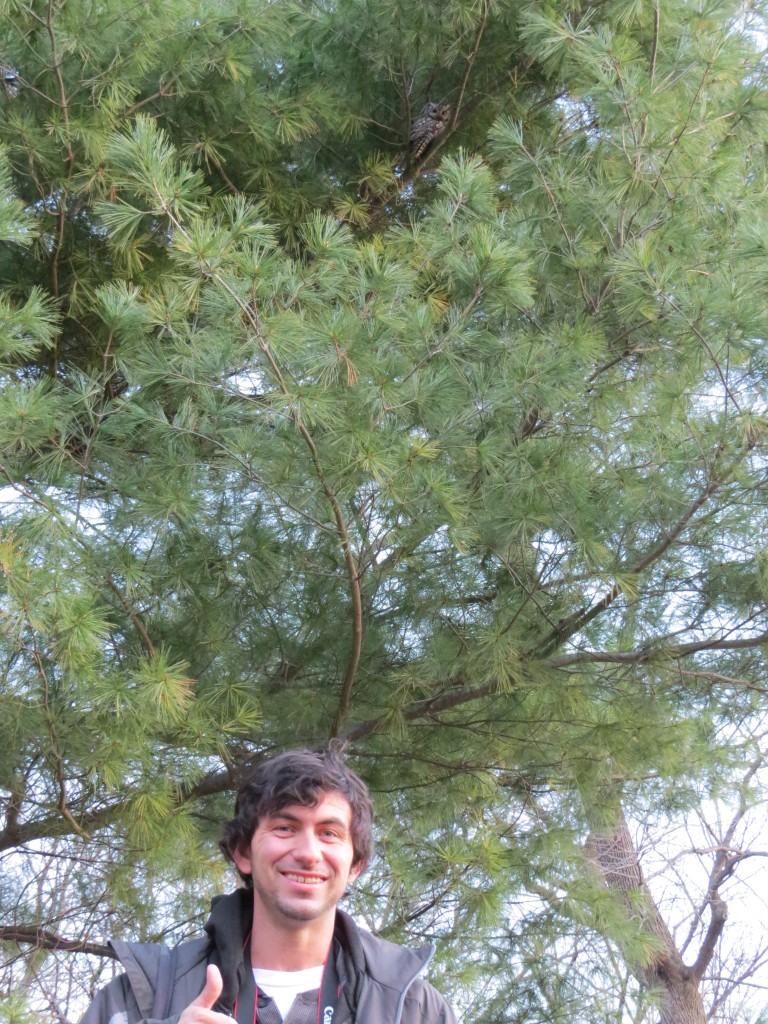
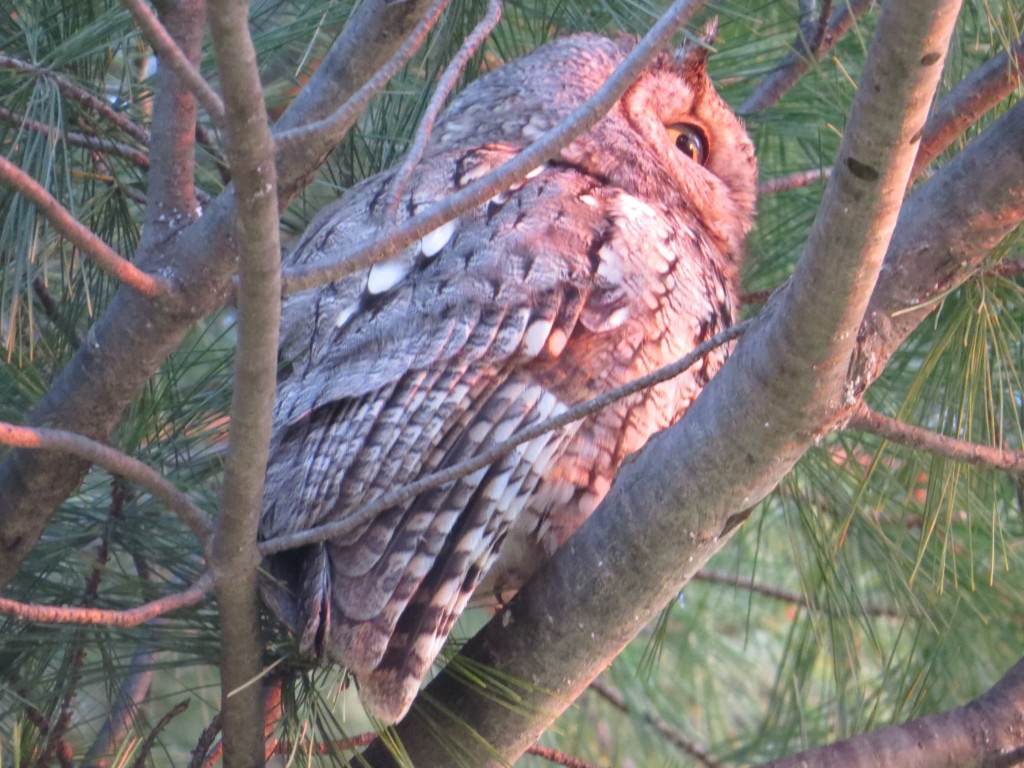 With the major trip goal of seeing an Eastern Screech-Owl all locked up by 7 AM, Tommy and I had a good 5 hours of free birding time before I had to drop him off at the airport. I was thinking as a lister and giving Tommy options for some life birds he could get. Tommy had his Owler hat on that day, though, and he instead opted to see Barred Owls again with this free time. We went to Fort Snelling State Park to see the famous pair, but unfortunately they were a no-show. Fortunately, Tommy picked up his American Tree Sparrow lifer for a nice bonus on the day.
With the major trip goal of seeing an Eastern Screech-Owl all locked up by 7 AM, Tommy and I had a good 5 hours of free birding time before I had to drop him off at the airport. I was thinking as a lister and giving Tommy options for some life birds he could get. Tommy had his Owler hat on that day, though, and he instead opted to see Barred Owls again with this free time. We went to Fort Snelling State Park to see the famous pair, but unfortunately they were a no-show. Fortunately, Tommy picked up his American Tree Sparrow lifer for a nice bonus on the day.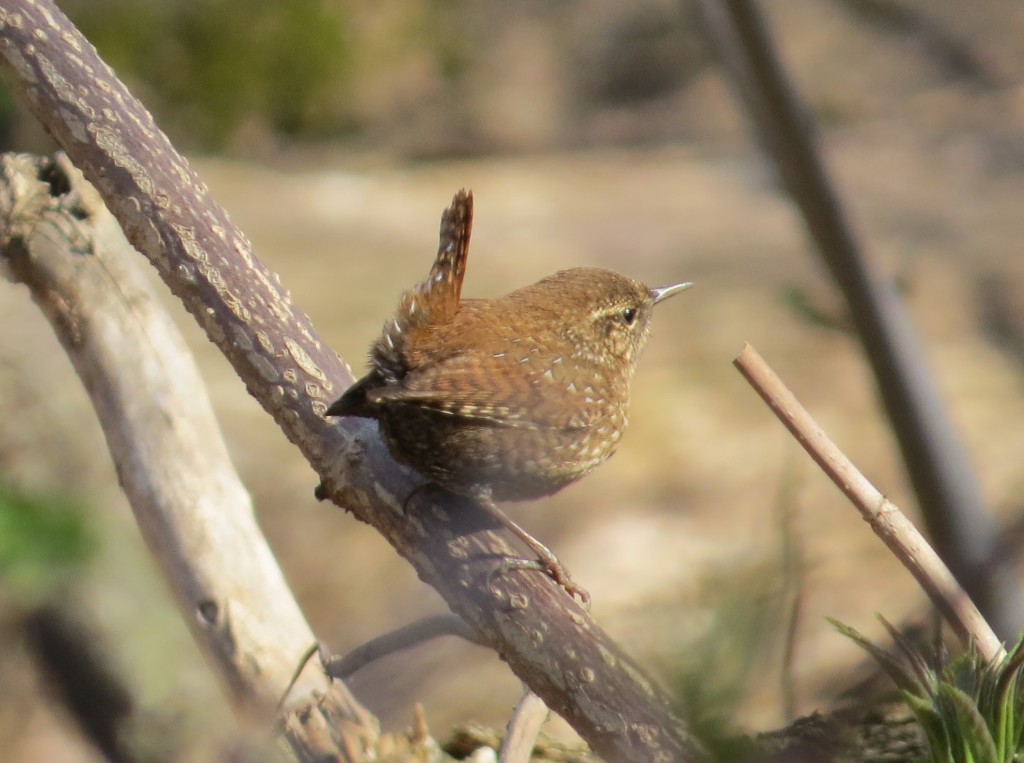
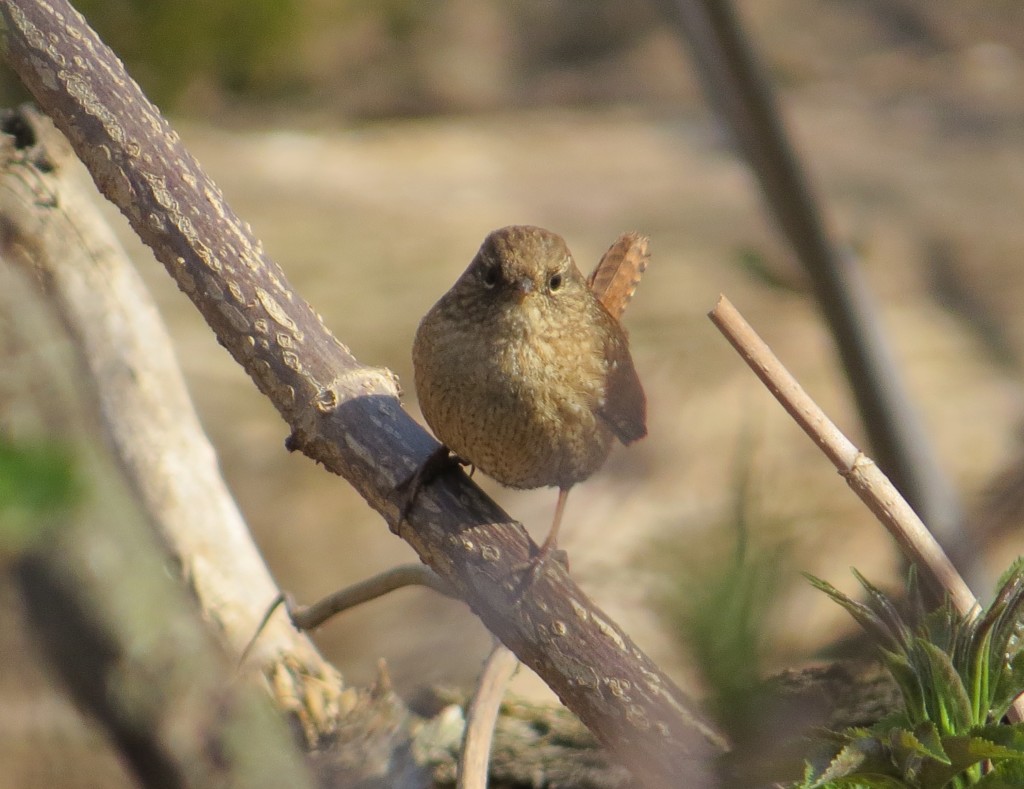 Eventually Tommy spotted what we presume to be the male of the nesting pair of Barred Owls. I was surprised when he pointed it out to me–I really wasn’t expecting a Barred Owl in this spot. It was a reminder to be vigilant always. Tommy never lets his guard down.
Eventually Tommy spotted what we presume to be the male of the nesting pair of Barred Owls. I was surprised when he pointed it out to me–I really wasn’t expecting a Barred Owl in this spot. It was a reminder to be vigilant always. Tommy never lets his guard down.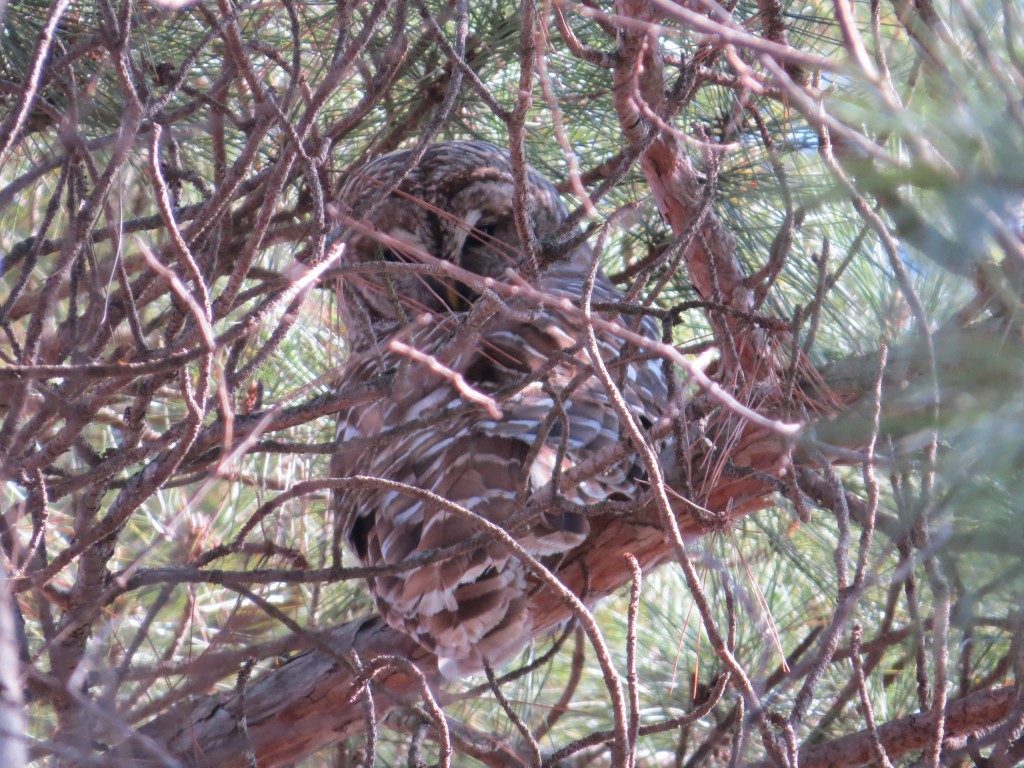
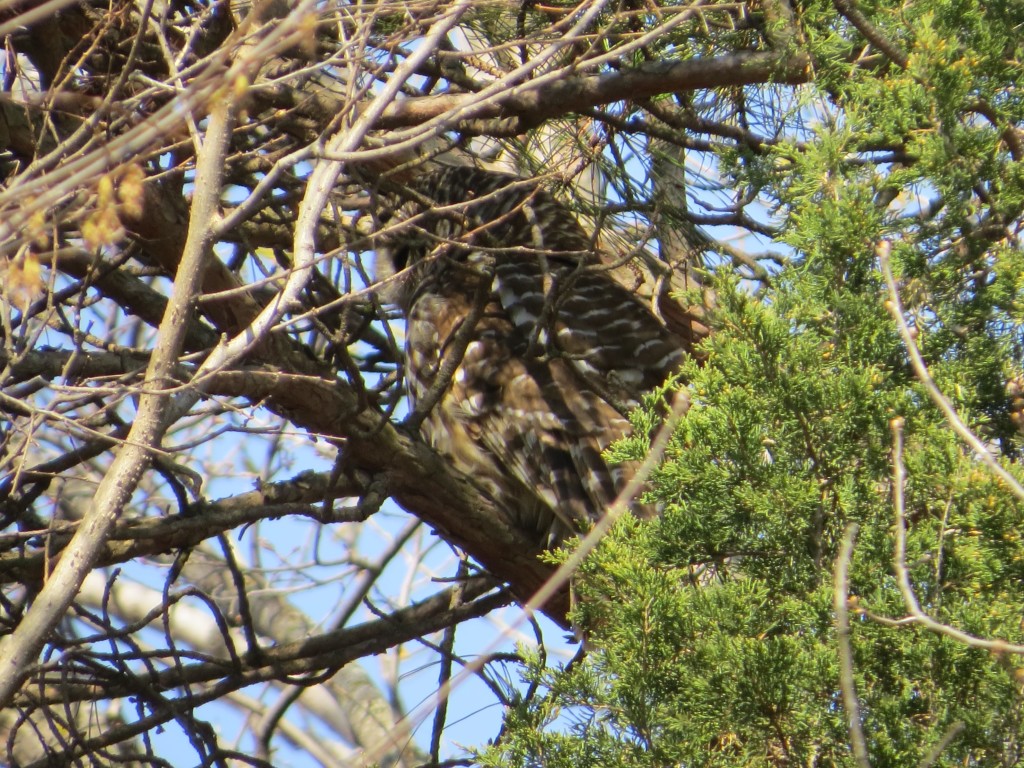
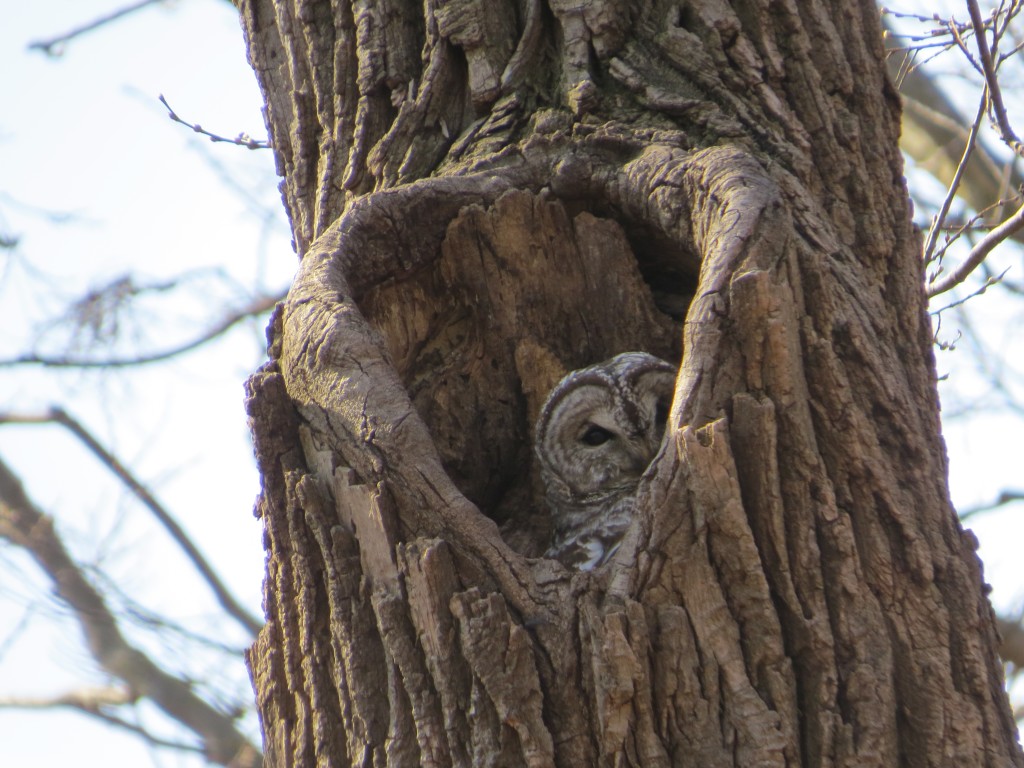
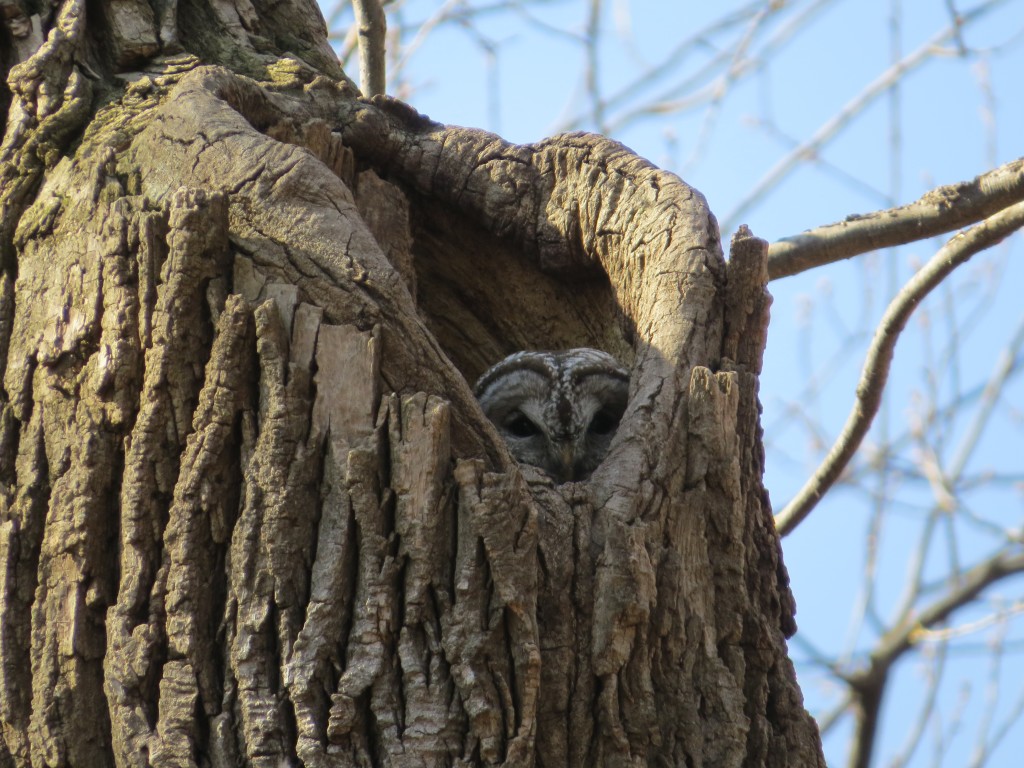
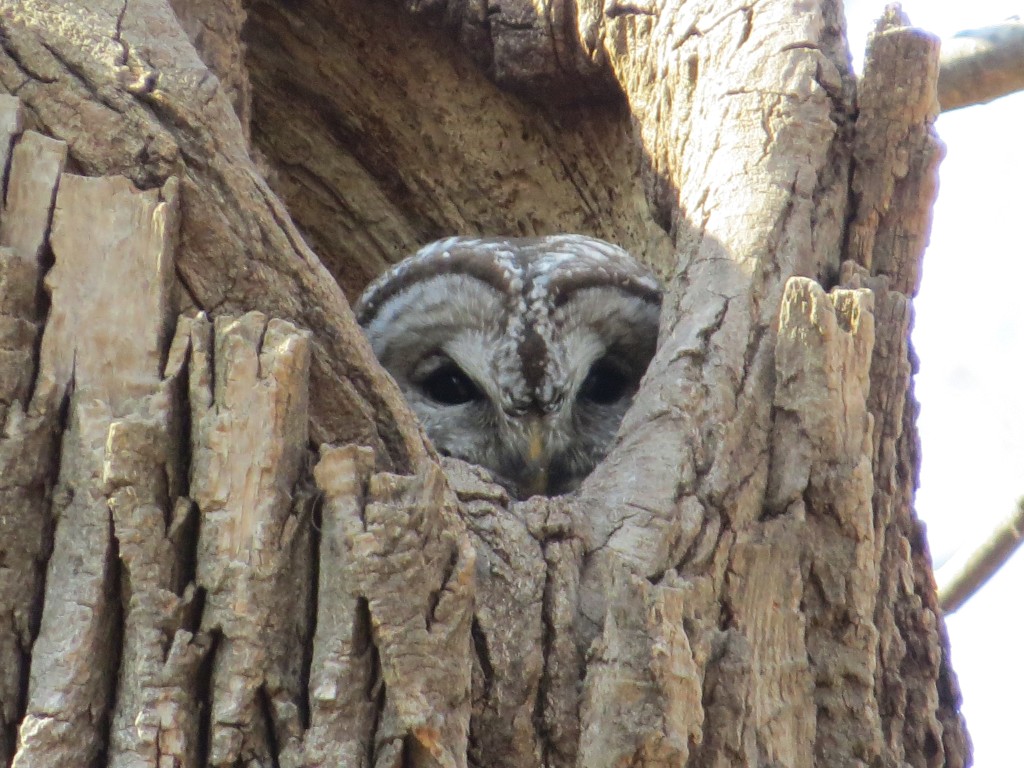
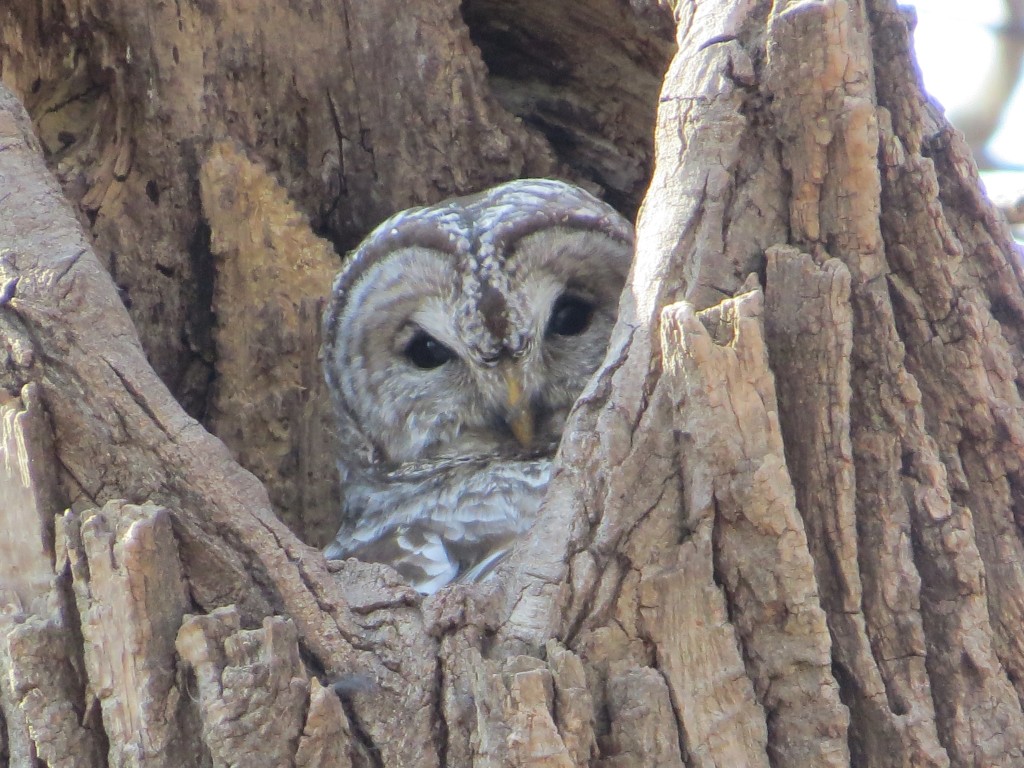 After enjoying these Owls and the other birds it was time to wrap up this flash of a visit. Tommy and I enjoyed a hot meal of Swedish meatballs at IKEA in the shadow of the Mall of America before getting him to the airport at noon. I told Tommy that perhaps there were some Arizonans who flew to MSP the same day as he did to do something just as frivolous–spend their time and money at that retail behemoth. The difference, though, is that what Tommy came to get will not end up in a landfill some day. Instead we created yet another fun memory that will always be with us.
After enjoying these Owls and the other birds it was time to wrap up this flash of a visit. Tommy and I enjoyed a hot meal of Swedish meatballs at IKEA in the shadow of the Mall of America before getting him to the airport at noon. I told Tommy that perhaps there were some Arizonans who flew to MSP the same day as he did to do something just as frivolous–spend their time and money at that retail behemoth. The difference, though, is that what Tommy came to get will not end up in a landfill some day. Instead we created yet another fun memory that will always be with us.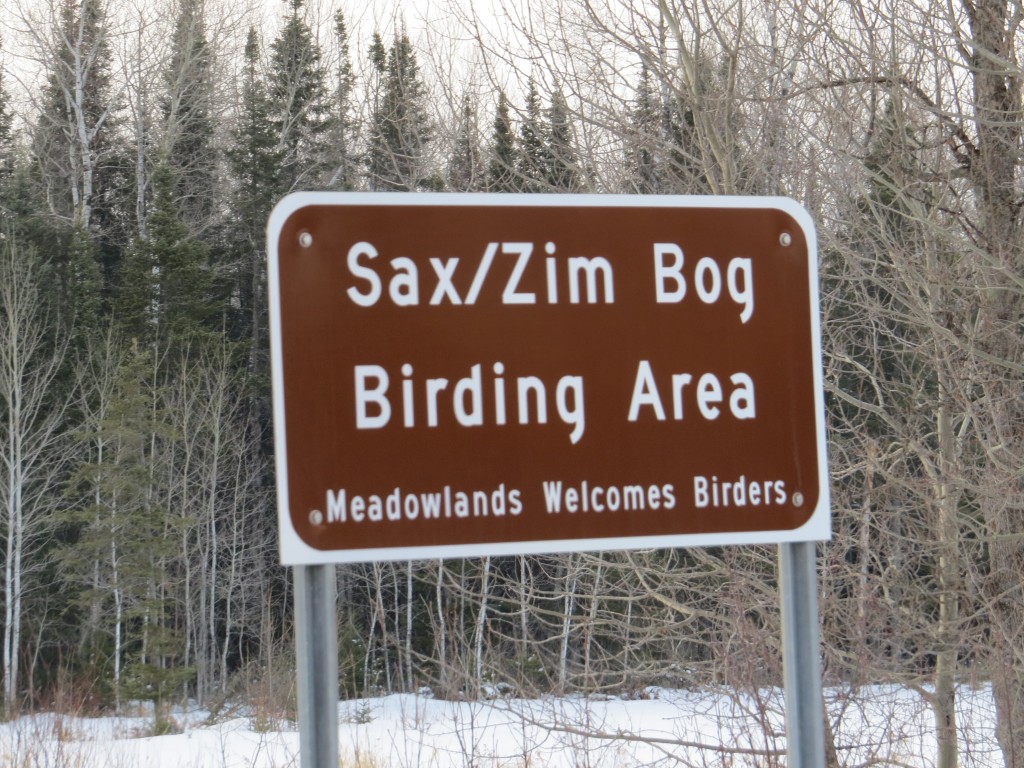
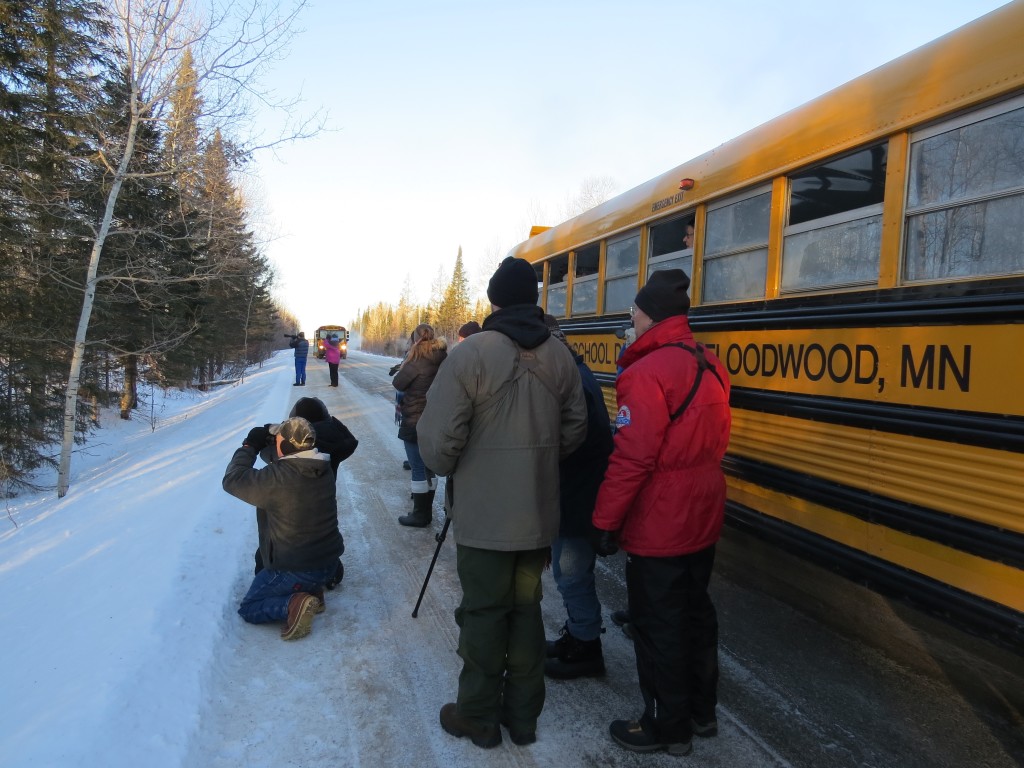 Fumbling with the scope barehanded in 30 below caused me to climb back on the bus immediately after setting up the apparatus, but eventually I did get back out for a couple quick photos myself.
Fumbling with the scope barehanded in 30 below caused me to climb back on the bus immediately after setting up the apparatus, but eventually I did get back out for a couple quick photos myself.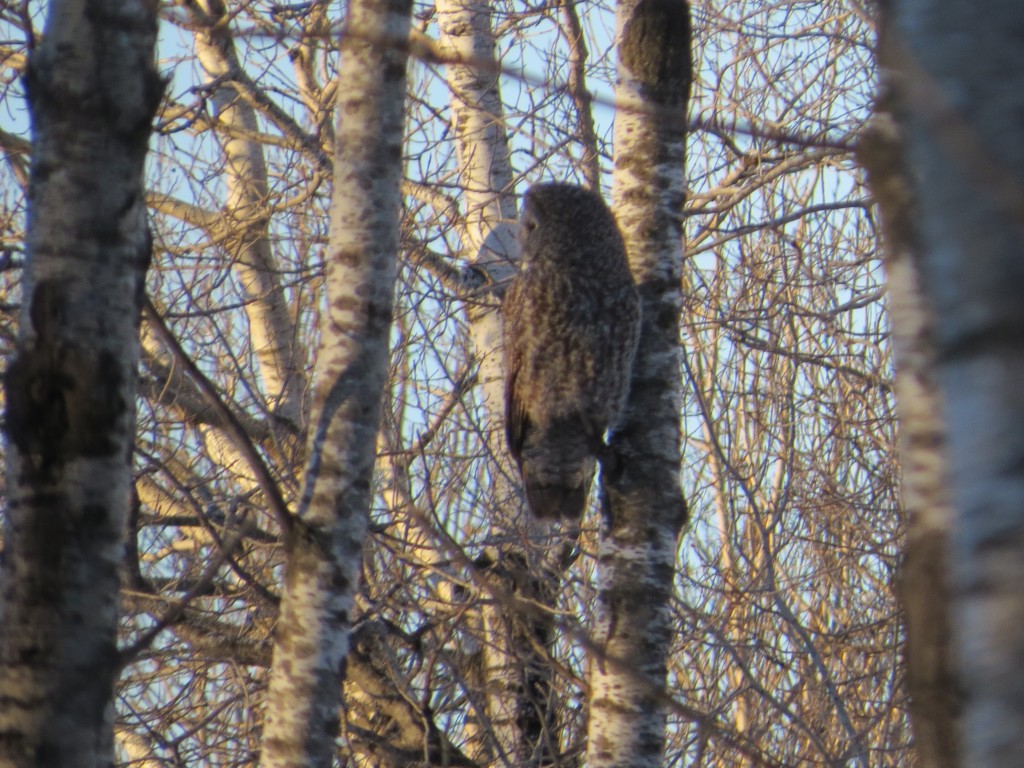
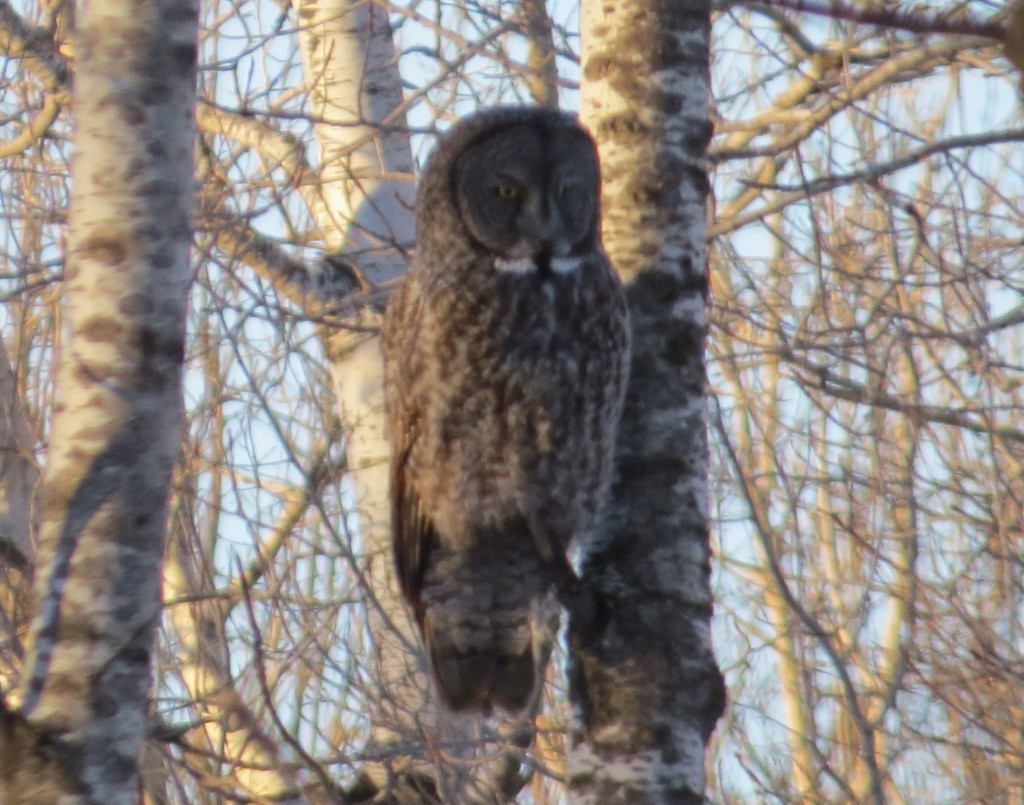
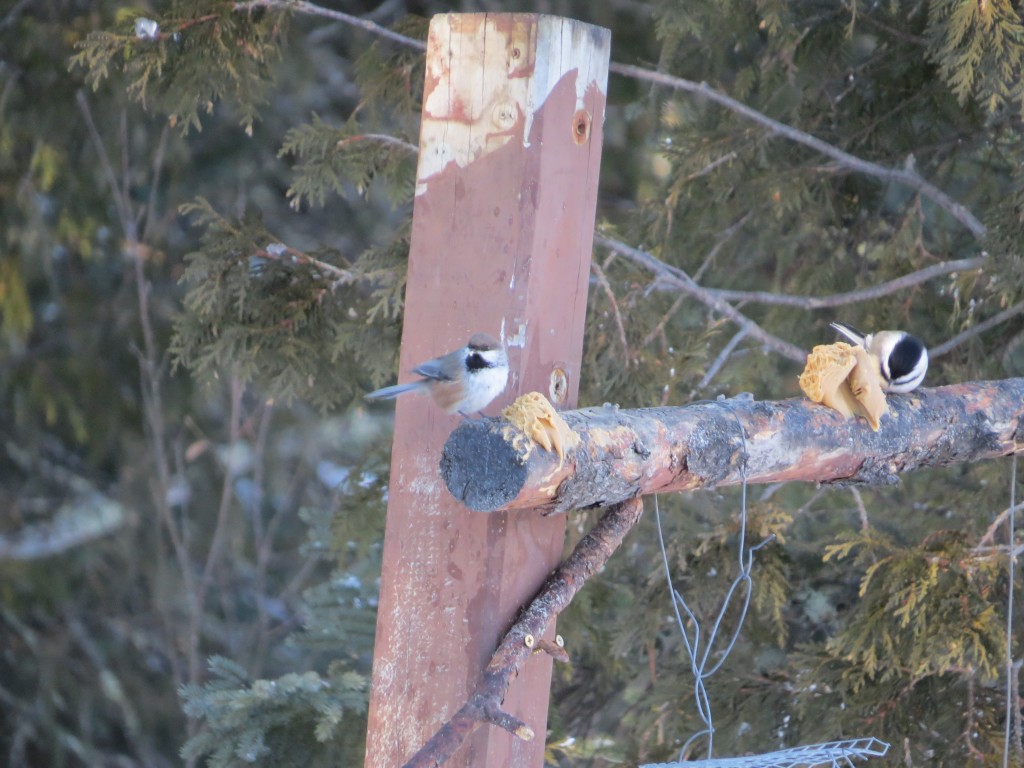
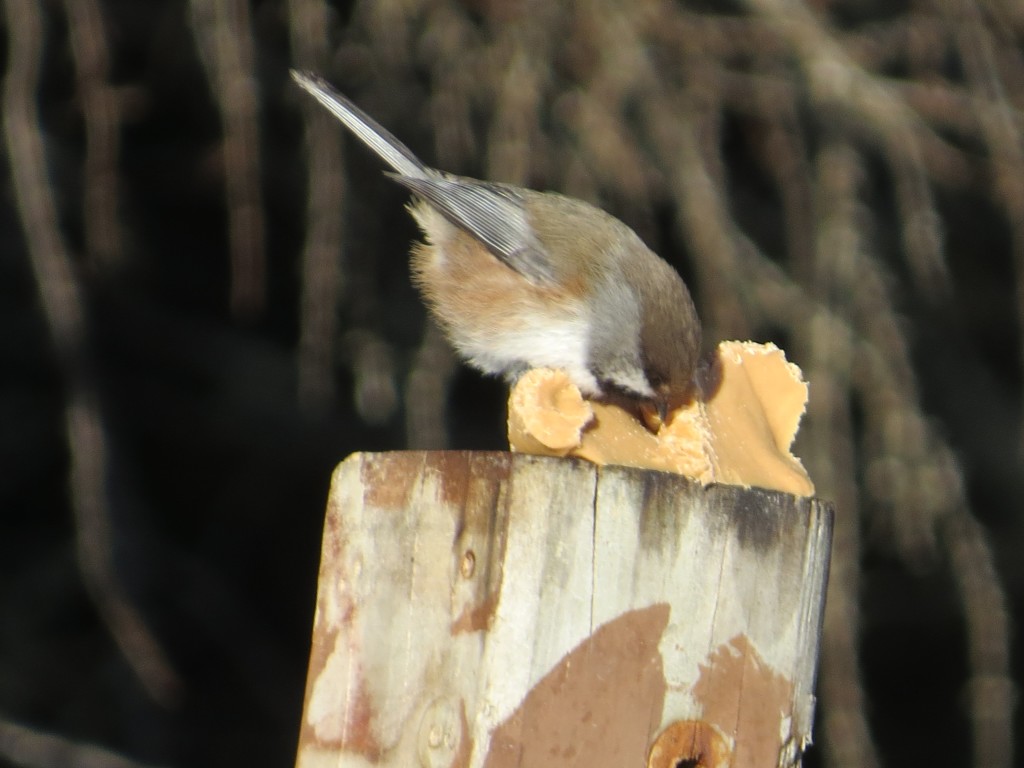 Another crowd favorite were both species of Grosbeaks, though on this day I only photographed the “yellow ones” as locals sometimes call them.
Another crowd favorite were both species of Grosbeaks, though on this day I only photographed the “yellow ones” as locals sometimes call them.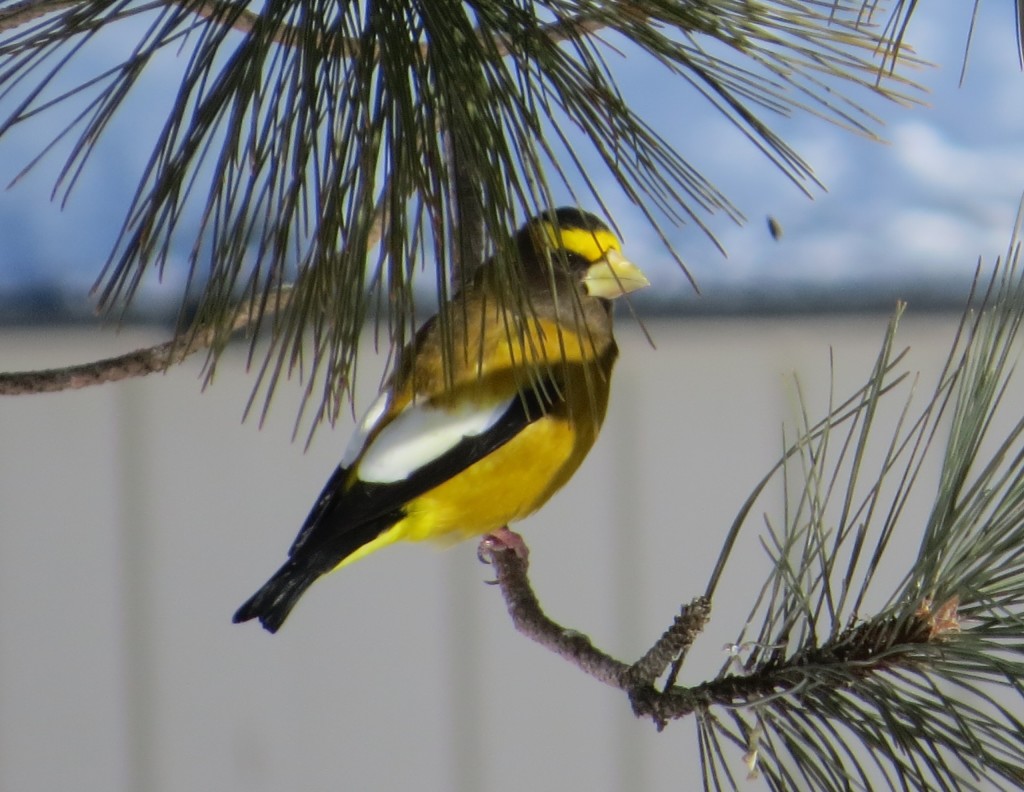 I checked in with Mr. Florida a couple times throughout the day to see what his lifer tally was. Besides the Great Gray, both Grosbeaks, and the Chickadee, he also picked up Northern Shrike, Common Redpoll, and a surprisingly hard-to-find Gray Jay. Despite missing on Ruffed and Sharp-tailed Grouse, Mr. Florida had the highest lifer total for our group. He was happy, especially because he told me he was not expecting the Great Gray.
I checked in with Mr. Florida a couple times throughout the day to see what his lifer tally was. Besides the Great Gray, both Grosbeaks, and the Chickadee, he also picked up Northern Shrike, Common Redpoll, and a surprisingly hard-to-find Gray Jay. Despite missing on Ruffed and Sharp-tailed Grouse, Mr. Florida had the highest lifer total for our group. He was happy, especially because he told me he was not expecting the Great Gray.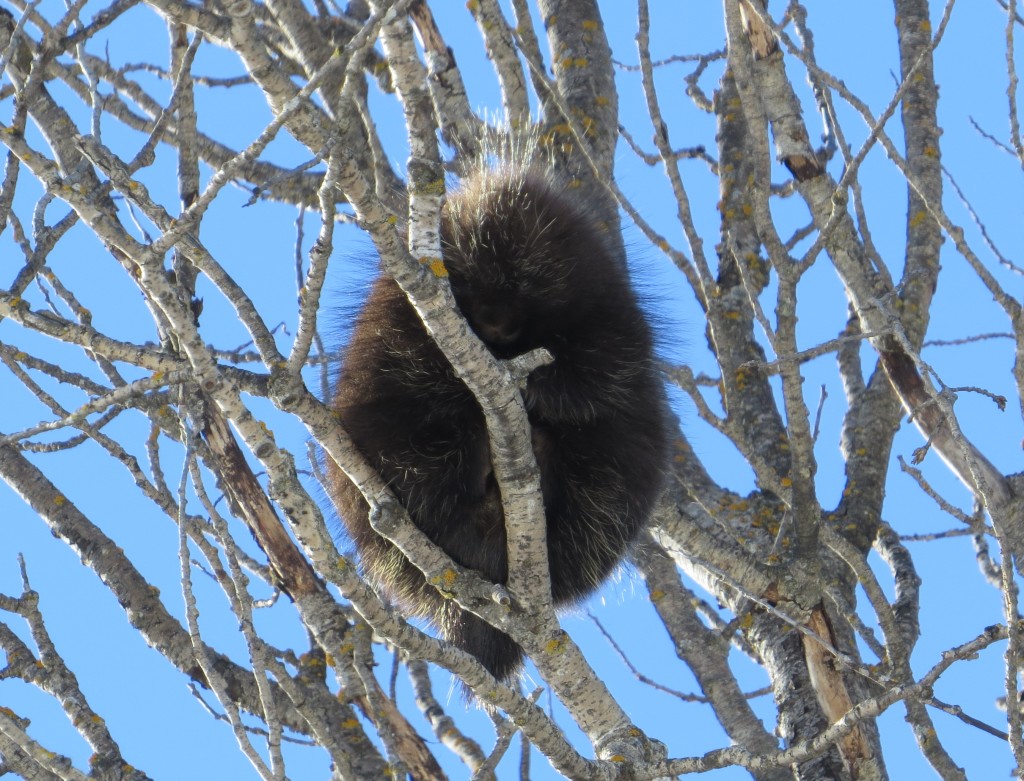 After birding for some time, our day was truncated late afternoon and did not allow for more Owl searching during prime evening hours as we had to get back to Meadowlands for the dinner and program by Canadian Great Gray Owl researcher, Dr. James Duncan. Listening to an authority on Great Gray Owls give a captivating presentation in a Canadian accent is like a giant exclamation point on a day in which many got their coveted lifer.
After birding for some time, our day was truncated late afternoon and did not allow for more Owl searching during prime evening hours as we had to get back to Meadowlands for the dinner and program by Canadian Great Gray Owl researcher, Dr. James Duncan. Listening to an authority on Great Gray Owls give a captivating presentation in a Canadian accent is like a giant exclamation point on a day in which many got their coveted lifer.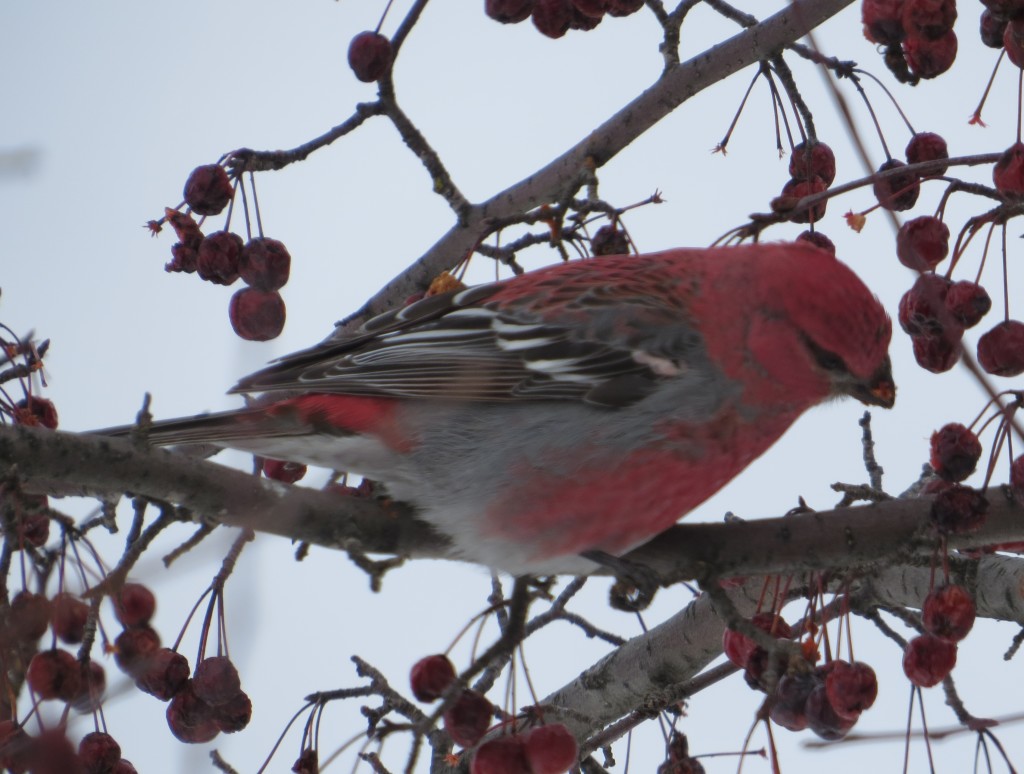
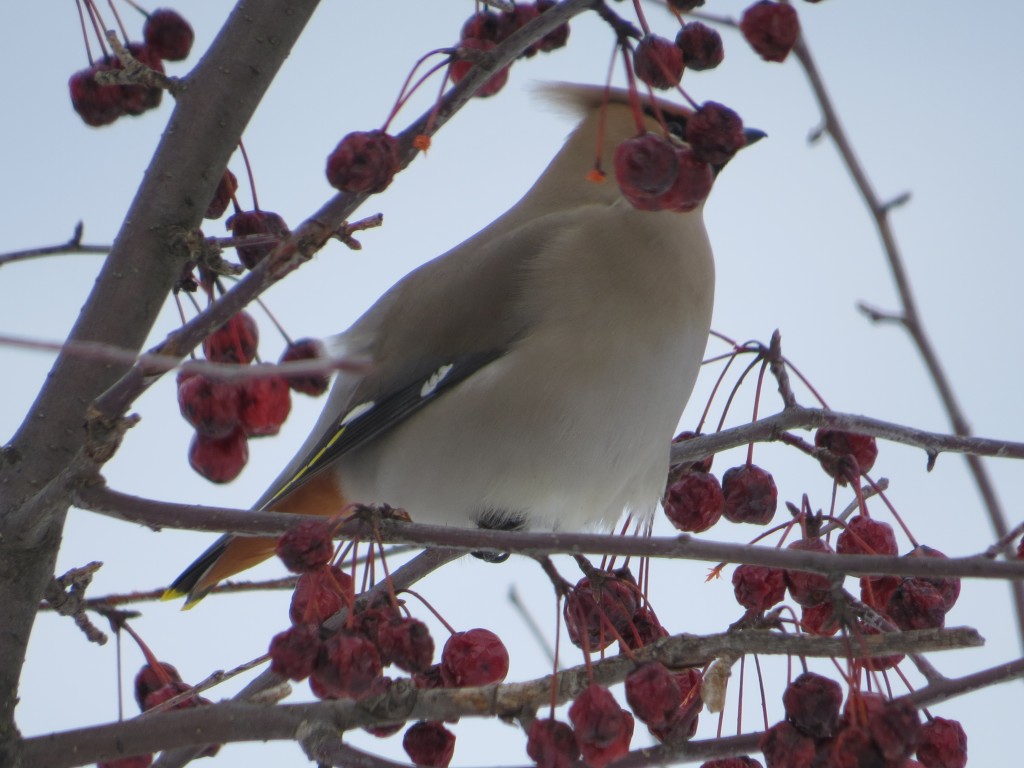 These were photo upgrades for me, though much work still needs to be done with this species. Considering I was sandwiched between a bus and a snowbank, I’ll take them though.
These were photo upgrades for me, though much work still needs to be done with this species. Considering I was sandwiched between a bus and a snowbank, I’ll take them though.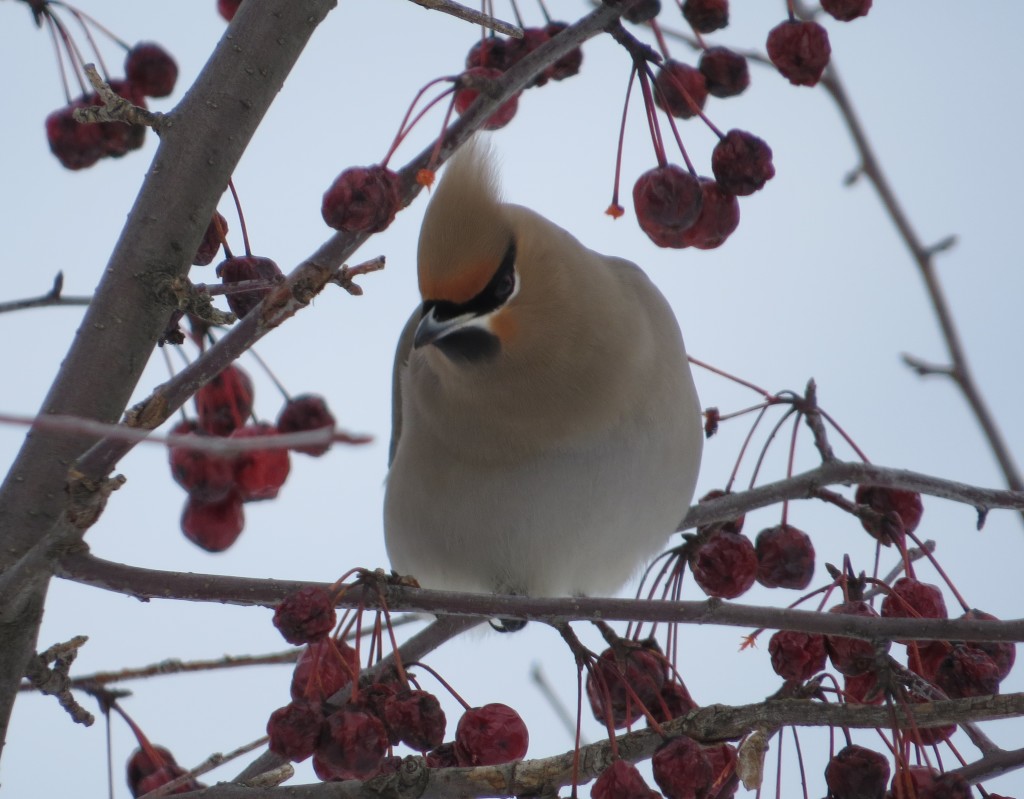
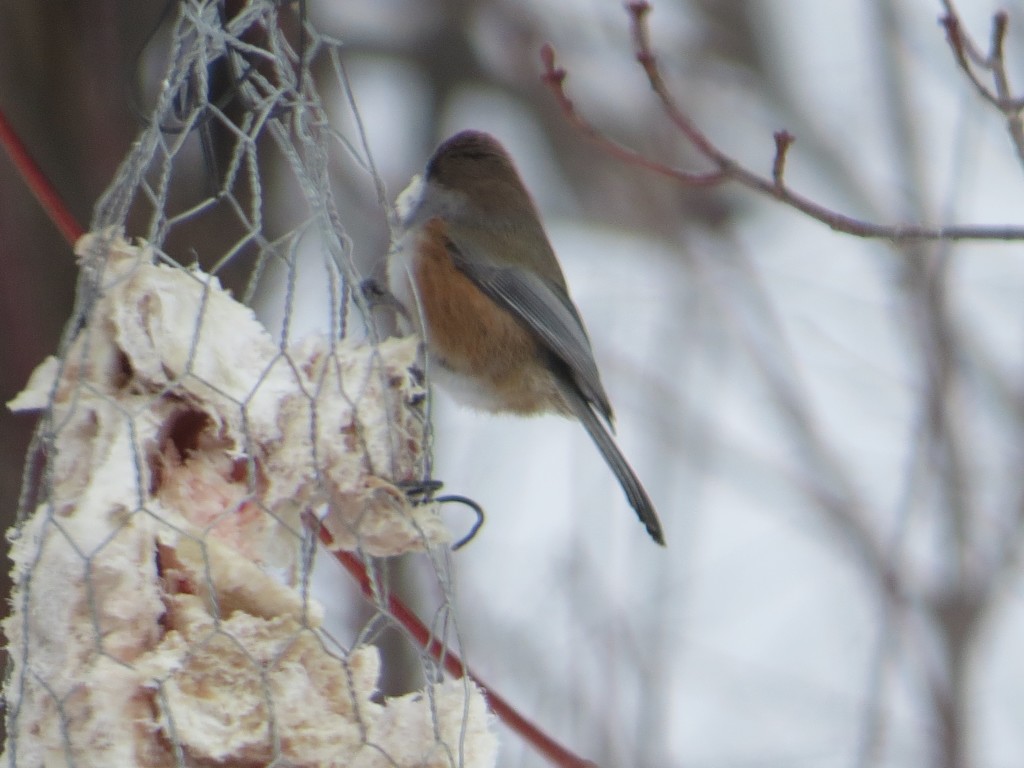 Then again, maybe I should have considering the address.
Then again, maybe I should have considering the address.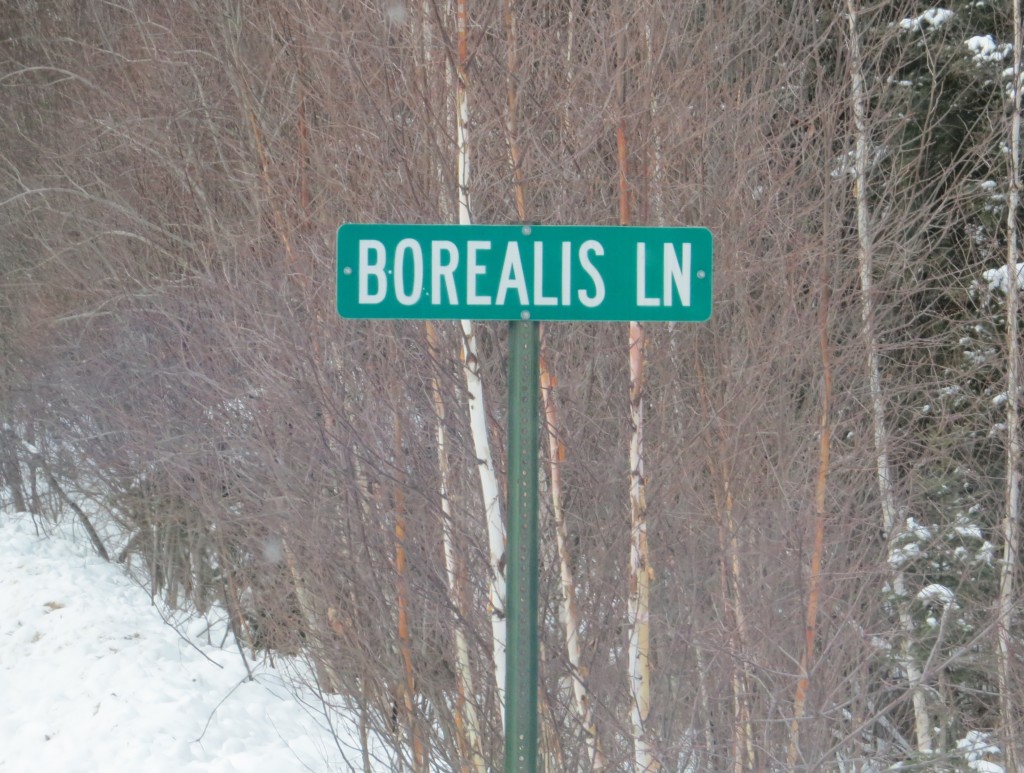 Our group continued on from the B&B searching towns on the way back for the ever elusive Bohemians. A Snowshoe Hare, thought he was elusive and brought some excitement to the group when the birds were lacking.
Our group continued on from the B&B searching towns on the way back for the ever elusive Bohemians. A Snowshoe Hare, thought he was elusive and brought some excitement to the group when the birds were lacking.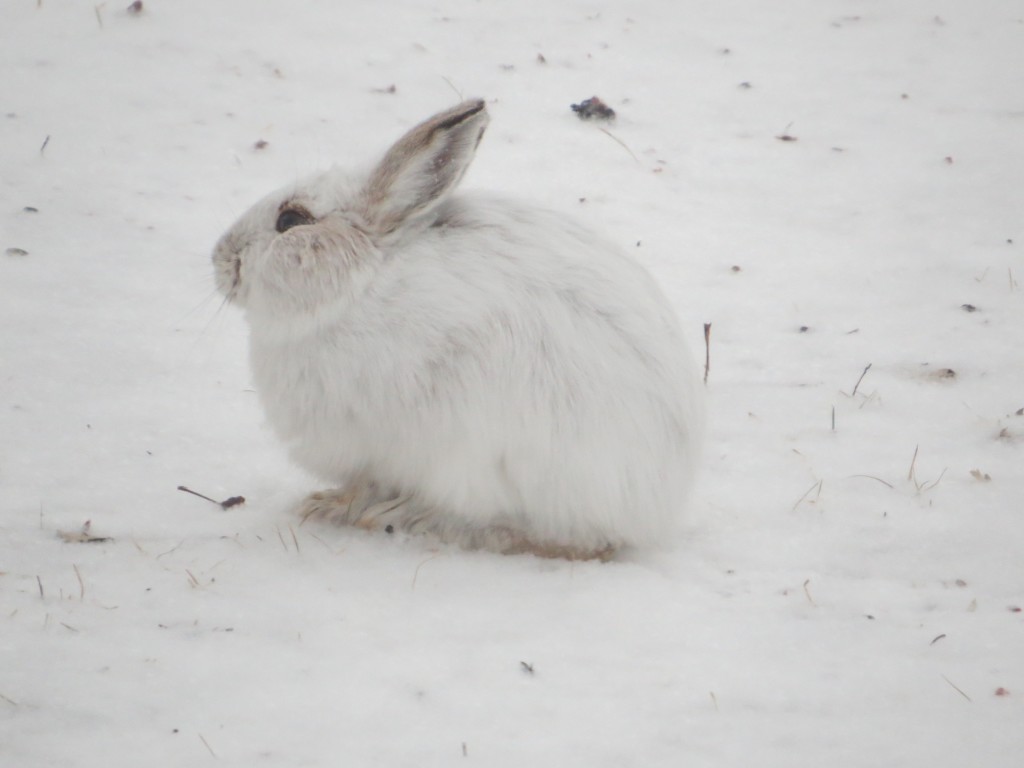 With one major bird lifer and one mammal lifer for the group, it was a long, sleepy day. We did have a slight pick-me-up when we were coming back into the Sax-Zim Bog and spotted a very out-of-season Common Grackle. But still, it’s a Grackle and doesn’t come close to filling the Sprucie void. There’s always next year. After all, it gives the festival-goers and guides a reason to return. As if they need another reason…
With one major bird lifer and one mammal lifer for the group, it was a long, sleepy day. We did have a slight pick-me-up when we were coming back into the Sax-Zim Bog and spotted a very out-of-season Common Grackle. But still, it’s a Grackle and doesn’t come close to filling the Sprucie void. There’s always next year. After all, it gives the festival-goers and guides a reason to return. As if they need another reason…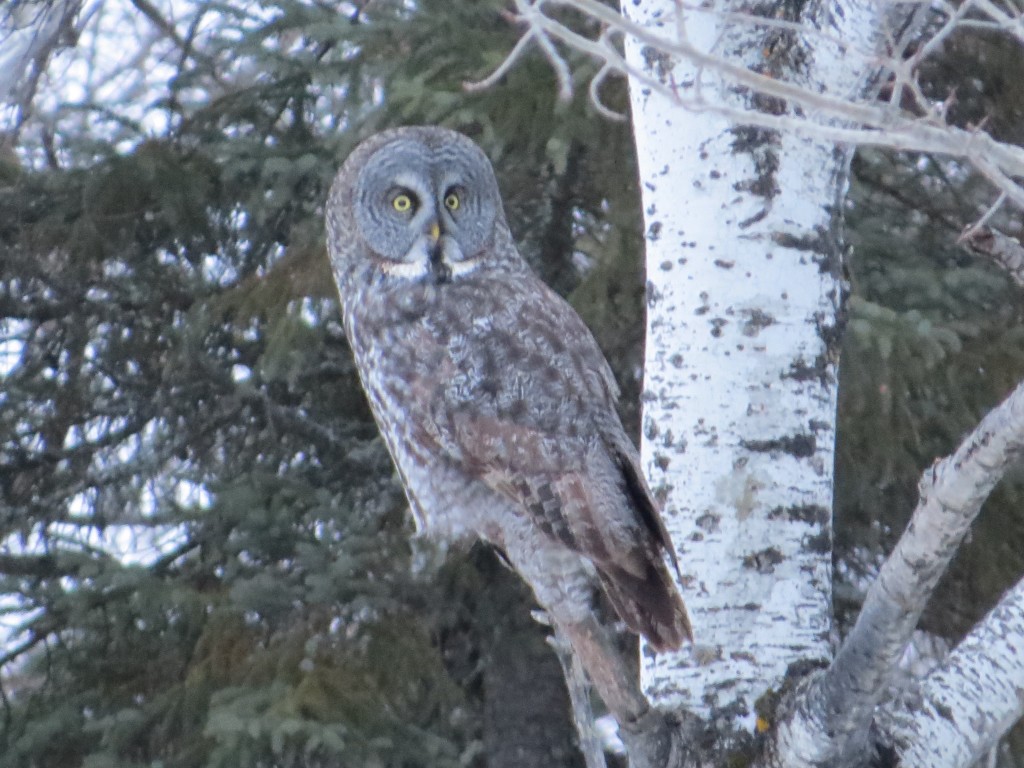




 Something even more amazing happened while we tried to lure out this guy–a second Black-back showed up! There was a male and a female! Unfortunately I never did see that classic field mark of the yellow crown on the male, but Tommy and Gordon each got to see it. I will continue to search for these birds until I finally see that and finally get good photos of this species.
Something even more amazing happened while we tried to lure out this guy–a second Black-back showed up! There was a male and a female! Unfortunately I never did see that classic field mark of the yellow crown on the male, but Tommy and Gordon each got to see it. I will continue to search for these birds until I finally see that and finally get good photos of this species.



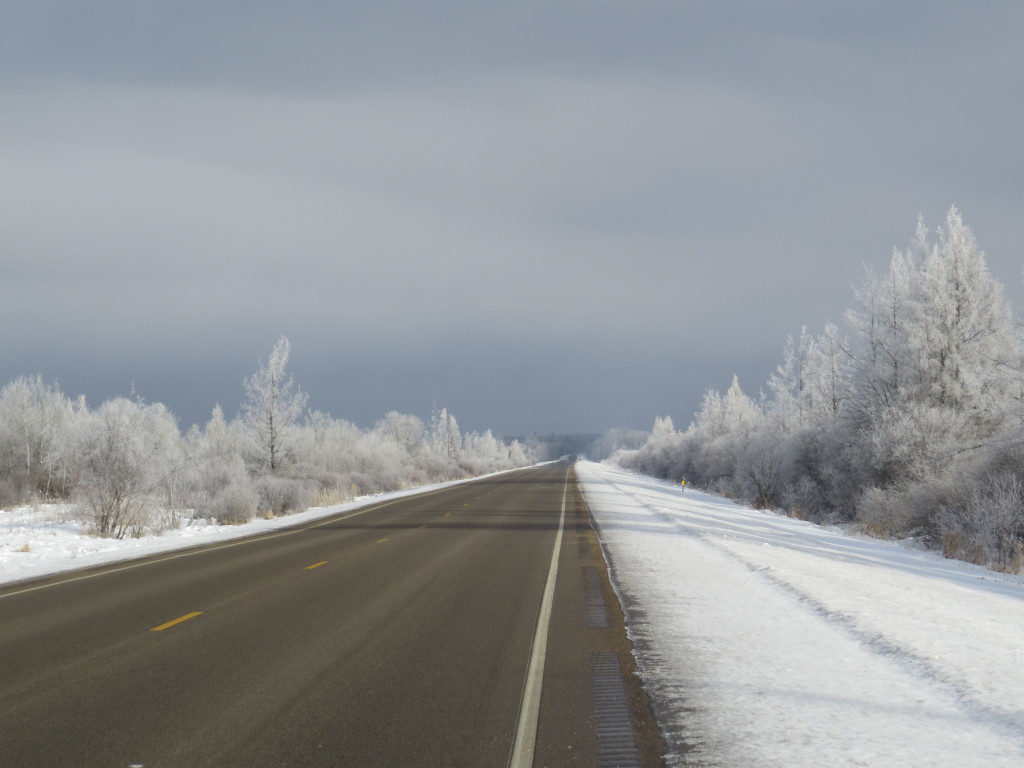
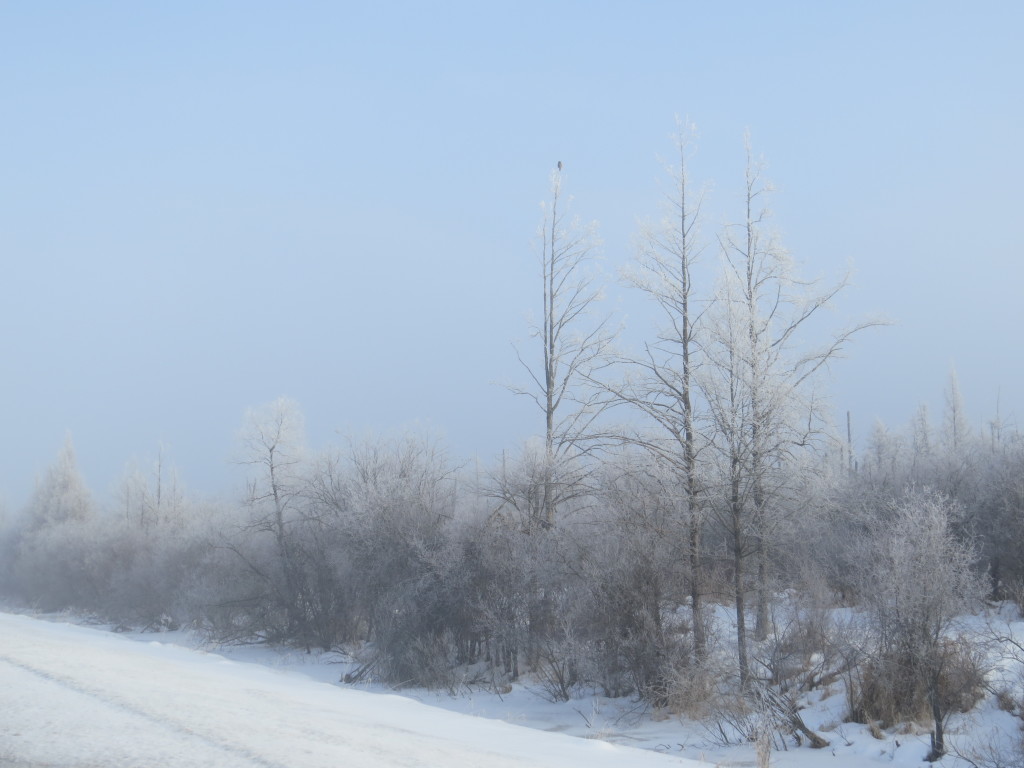 Brakes were deployed, and doors were flung open. It was a happy moment indeed. If you look, you can even see a big smile on Tommy’s face in this pic.
Brakes were deployed, and doors were flung open. It was a happy moment indeed. If you look, you can even see a big smile on Tommy’s face in this pic.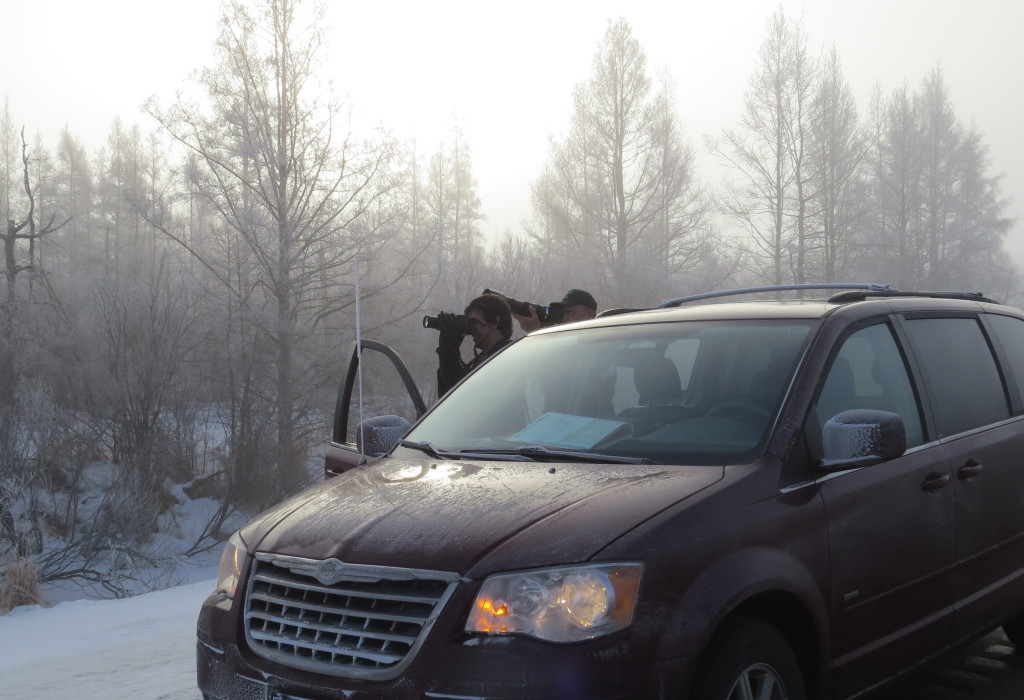 I’ve seen plenty of Hawk Owls, so it was fun to watch these guys enjoy the moment. For this pic below I actually laid on the cold 310.
I’ve seen plenty of Hawk Owls, so it was fun to watch these guys enjoy the moment. For this pic below I actually laid on the cold 310. 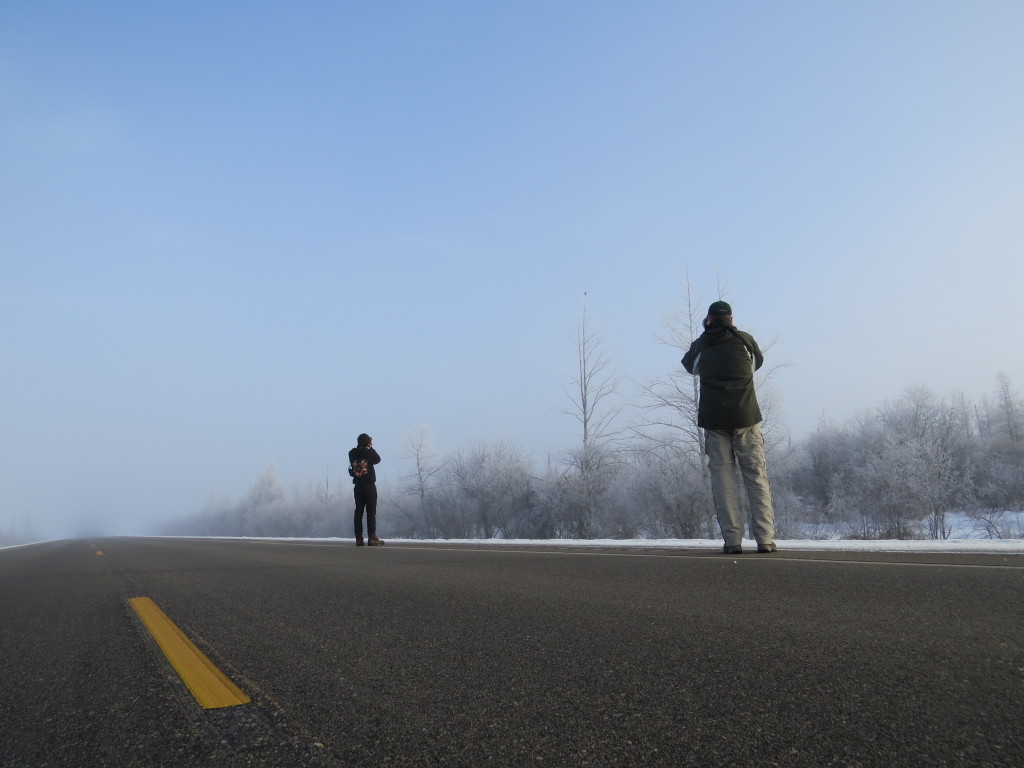 A nice bonus occurred when we were observing the Hawk Owl–Tommy spied their lifer Pileated Woodpecker fly across the road! I had told Gordon all along that if we see a Pileated, that’s exactly how it would happen.
A nice bonus occurred when we were observing the Hawk Owl–Tommy spied their lifer Pileated Woodpecker fly across the road! I had told Gordon all along that if we see a Pileated, that’s exactly how it would happen.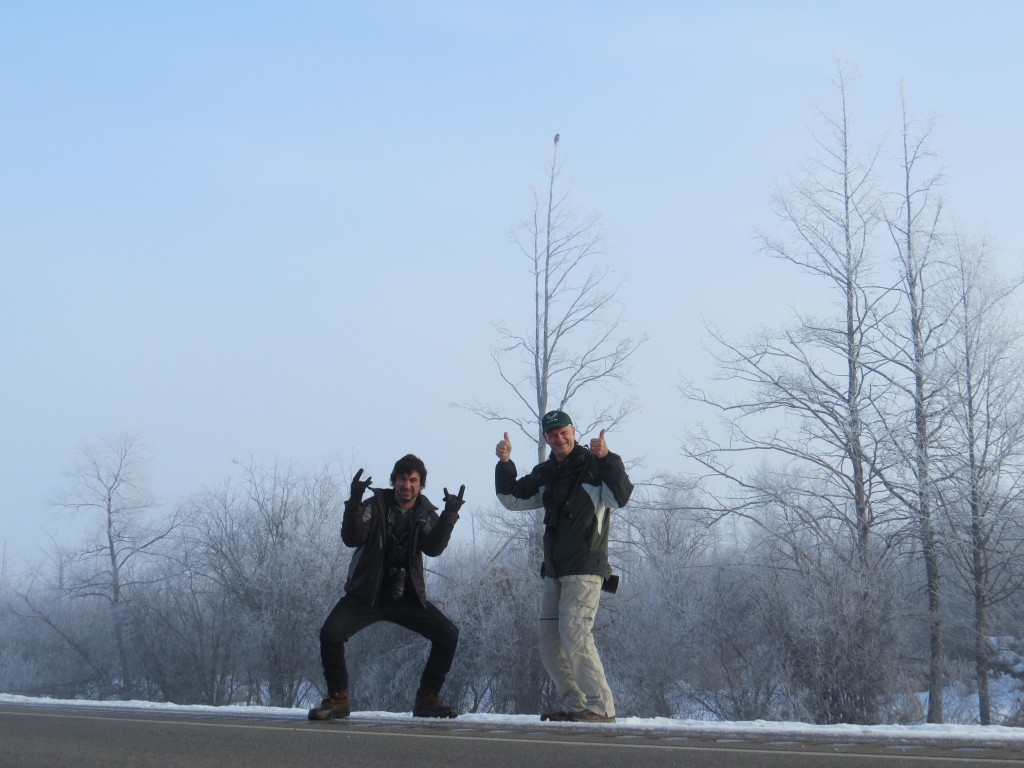
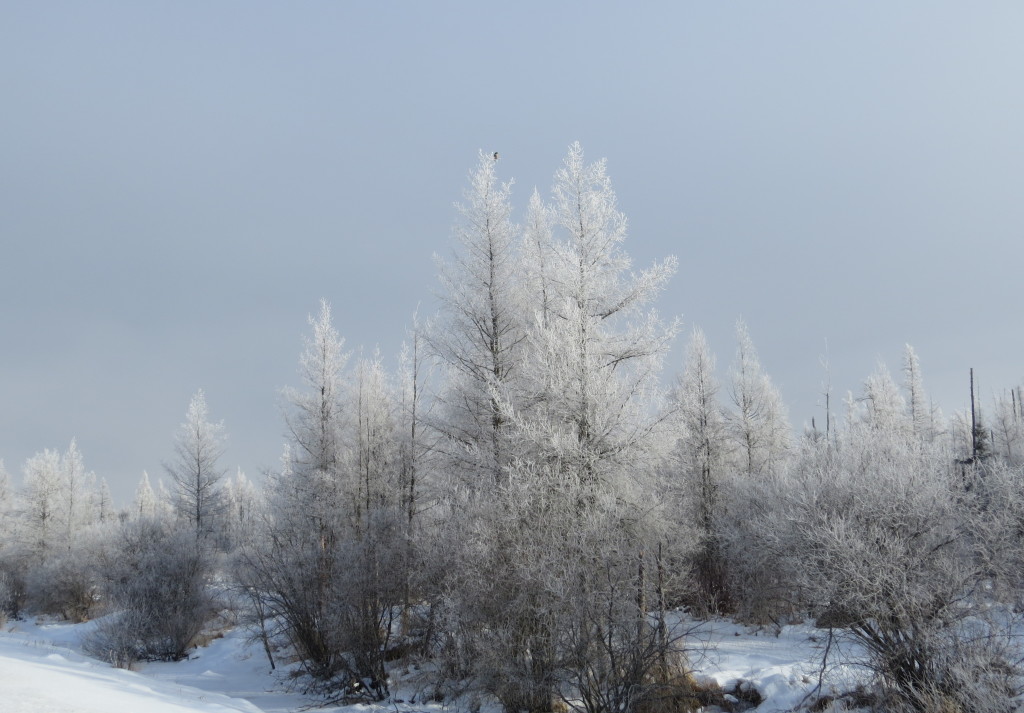
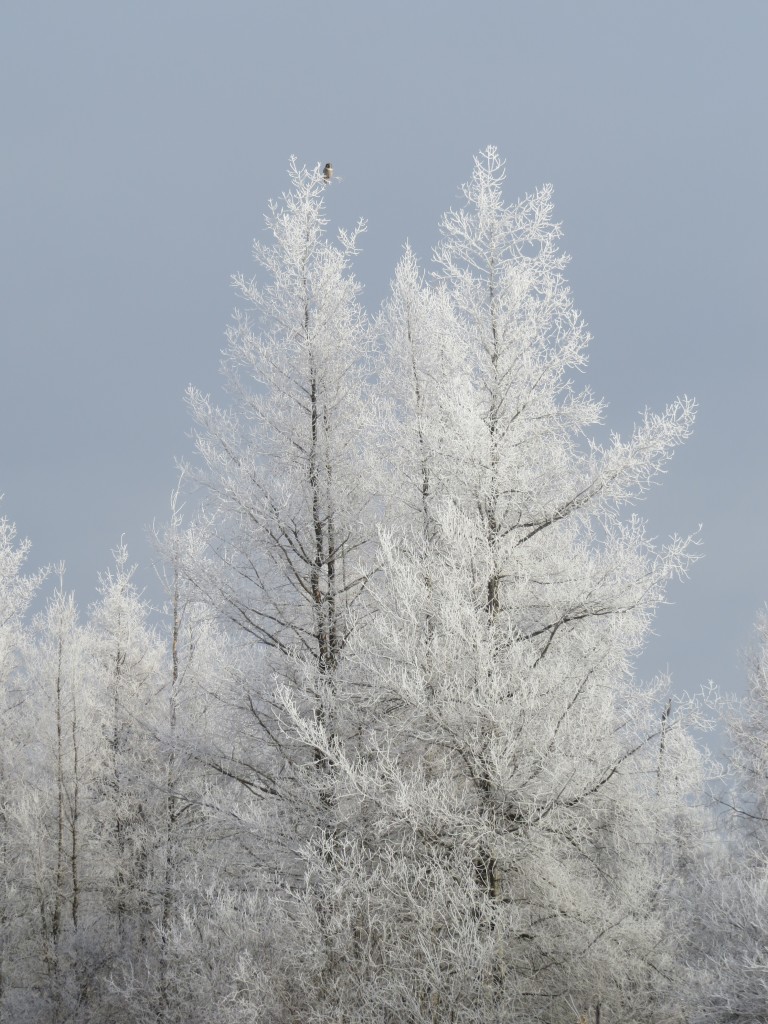
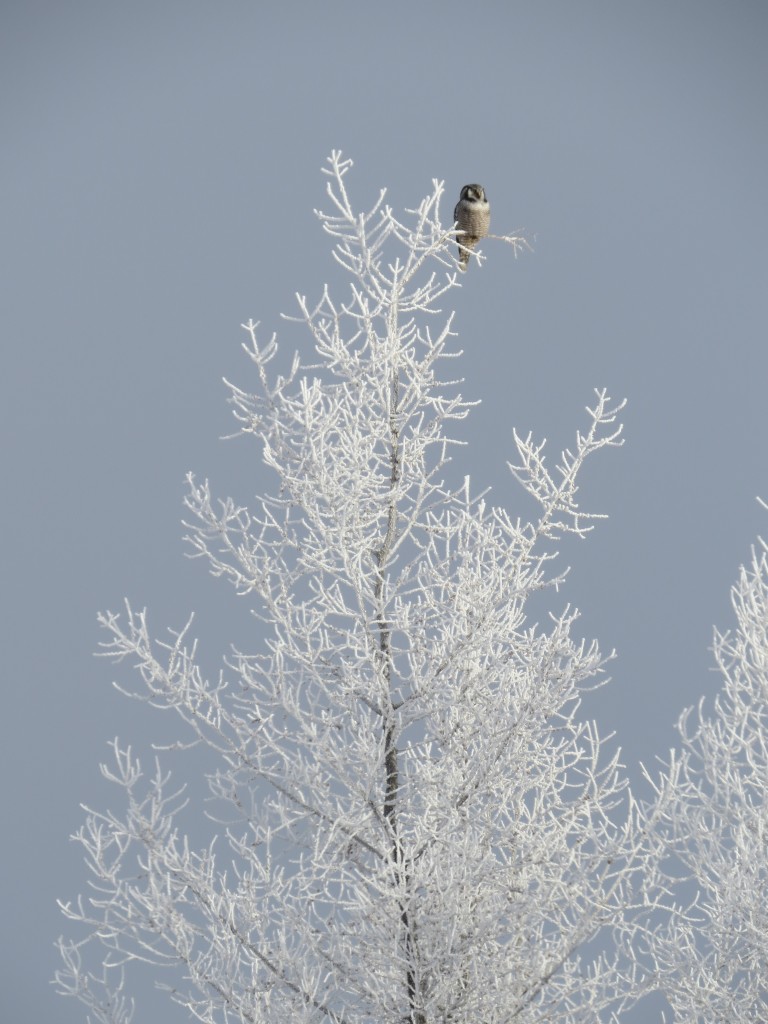
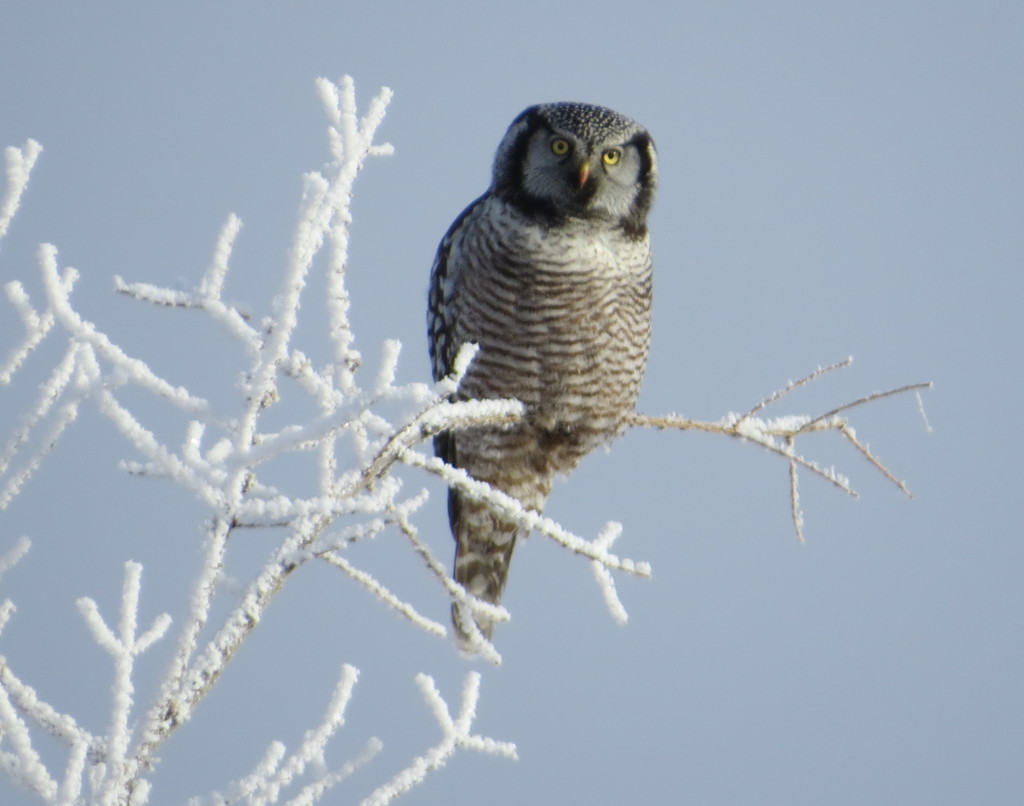
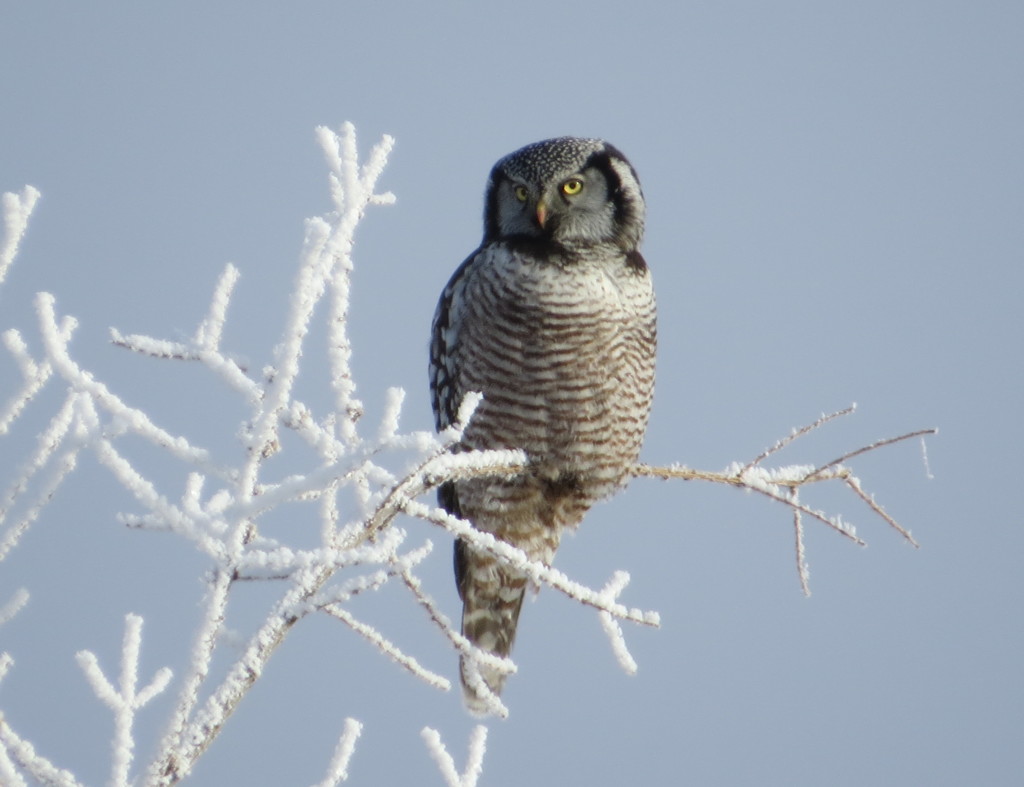
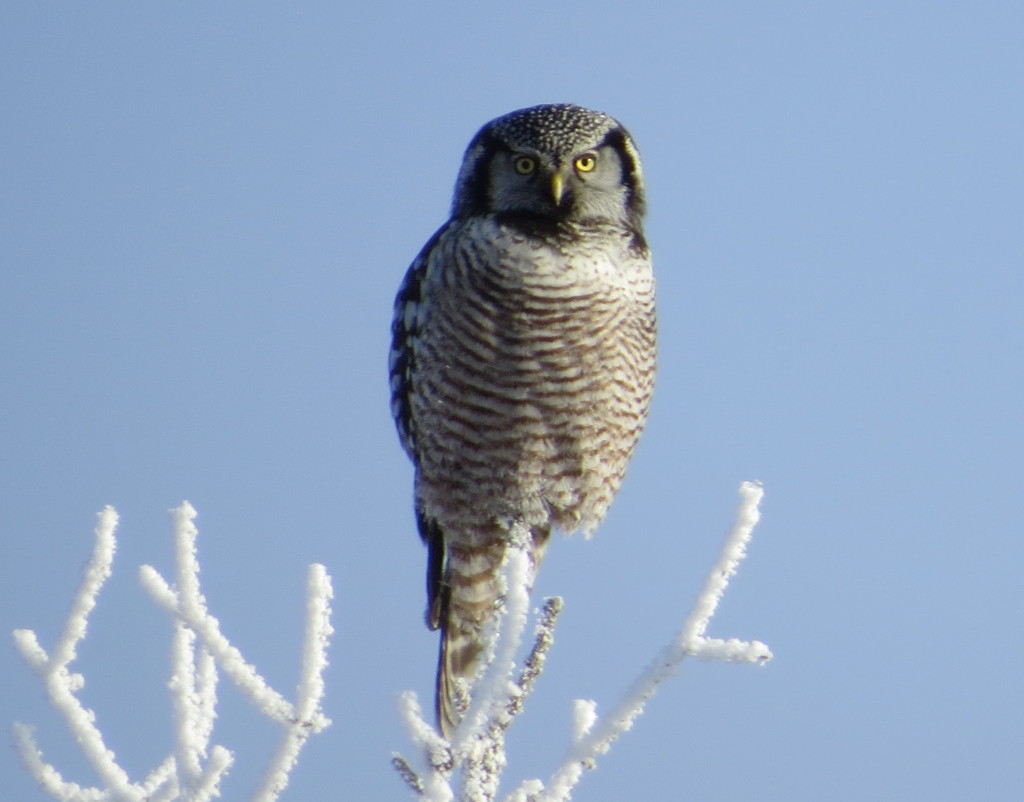
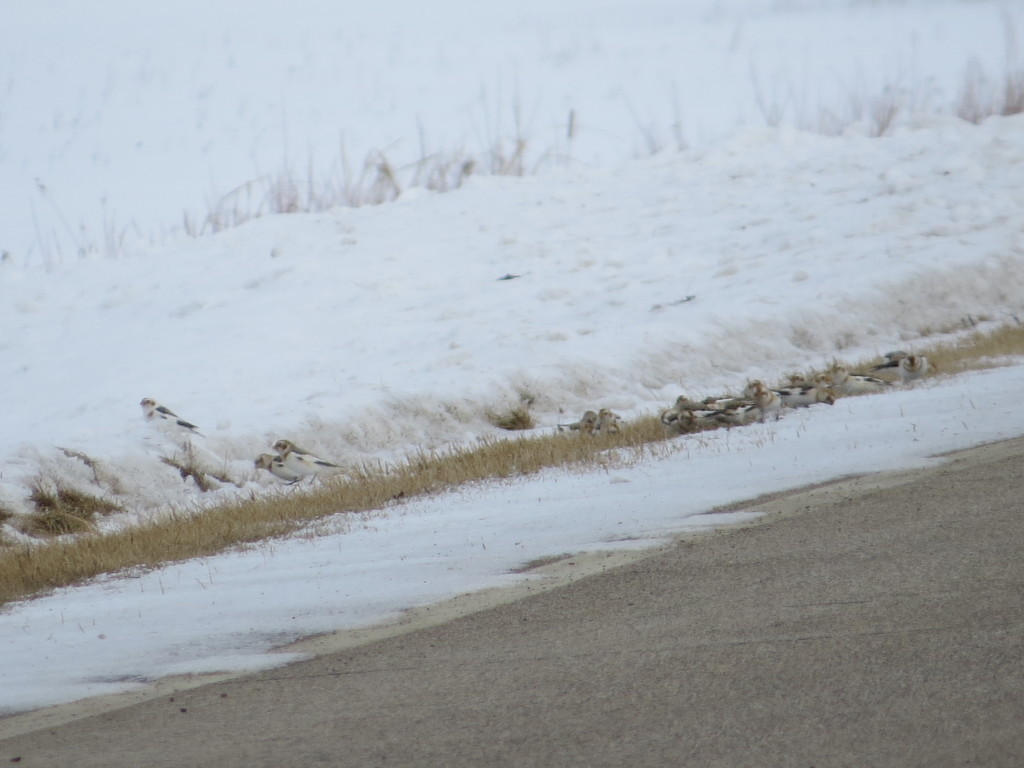 Once we got on the Roosevelt Road, I was very excited. This was a desolate forest we were entering, and I wondered at the possibilities it held for us. There wasn’t a lot of bird life except for some Pine Grosbeaks. Once we got in the vicinity of the reported Hawk Owl, the habitat looked perfect–large open areas surrounded by Tamaracks. It practically screamed Hawk Owl. I mean, it must have, because Tommy heard the message and spotted a super distant, tiny blob in the MIDDLE of a tree that turned out to be…another Hawk Owl!! We were on Cloud 9.
Once we got on the Roosevelt Road, I was very excited. This was a desolate forest we were entering, and I wondered at the possibilities it held for us. There wasn’t a lot of bird life except for some Pine Grosbeaks. Once we got in the vicinity of the reported Hawk Owl, the habitat looked perfect–large open areas surrounded by Tamaracks. It practically screamed Hawk Owl. I mean, it must have, because Tommy heard the message and spotted a super distant, tiny blob in the MIDDLE of a tree that turned out to be…another Hawk Owl!! We were on Cloud 9.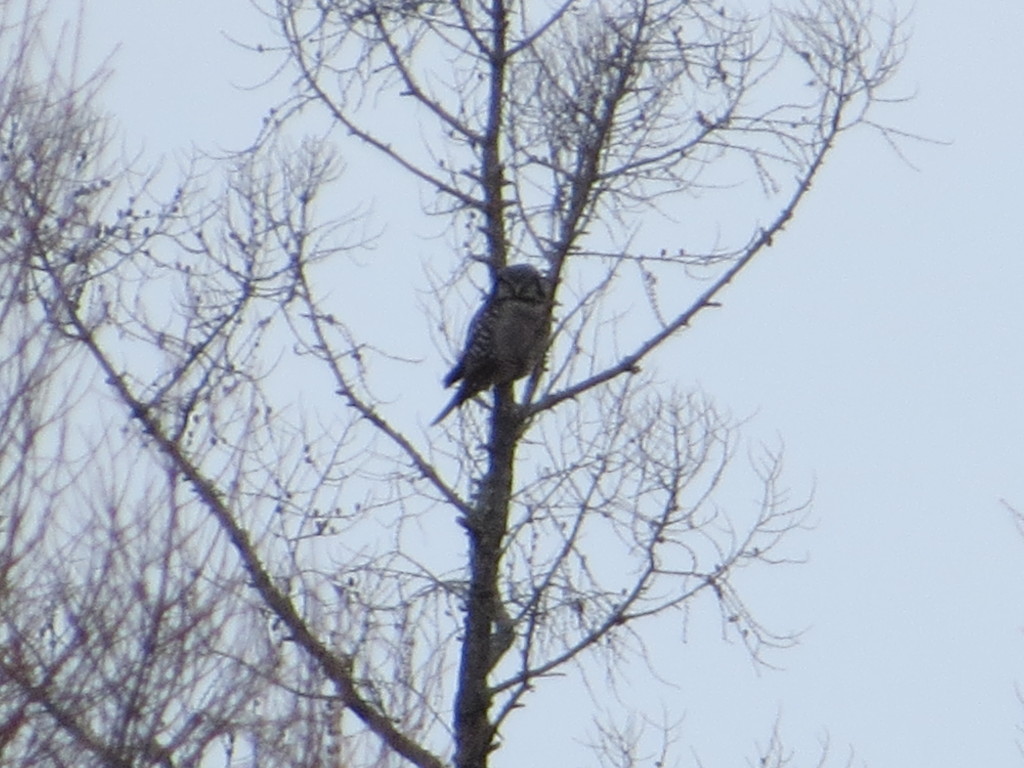
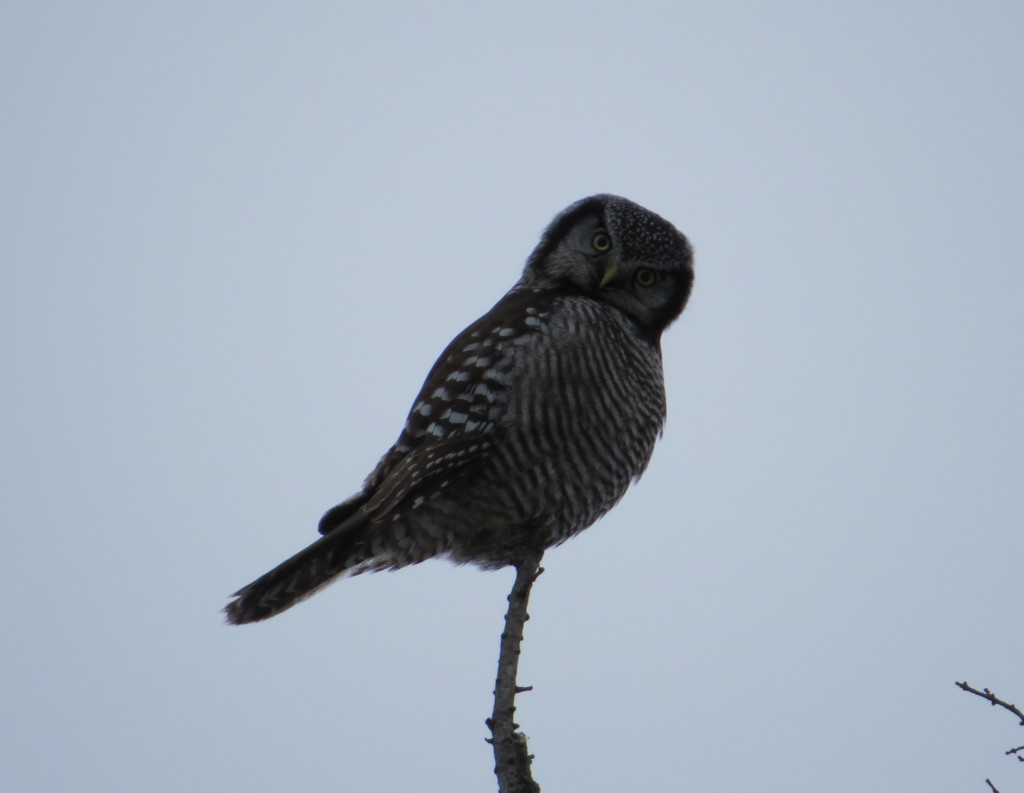 Turns out we needn’t have bushwhacked because this accommodating little fellow must have felt sorry for Gordon and flew practically right up to him. Even Gordon couldn’t resist wading into the snow for this new perch. Get ‘im Gordon!
Turns out we needn’t have bushwhacked because this accommodating little fellow must have felt sorry for Gordon and flew practically right up to him. Even Gordon couldn’t resist wading into the snow for this new perch. Get ‘im Gordon!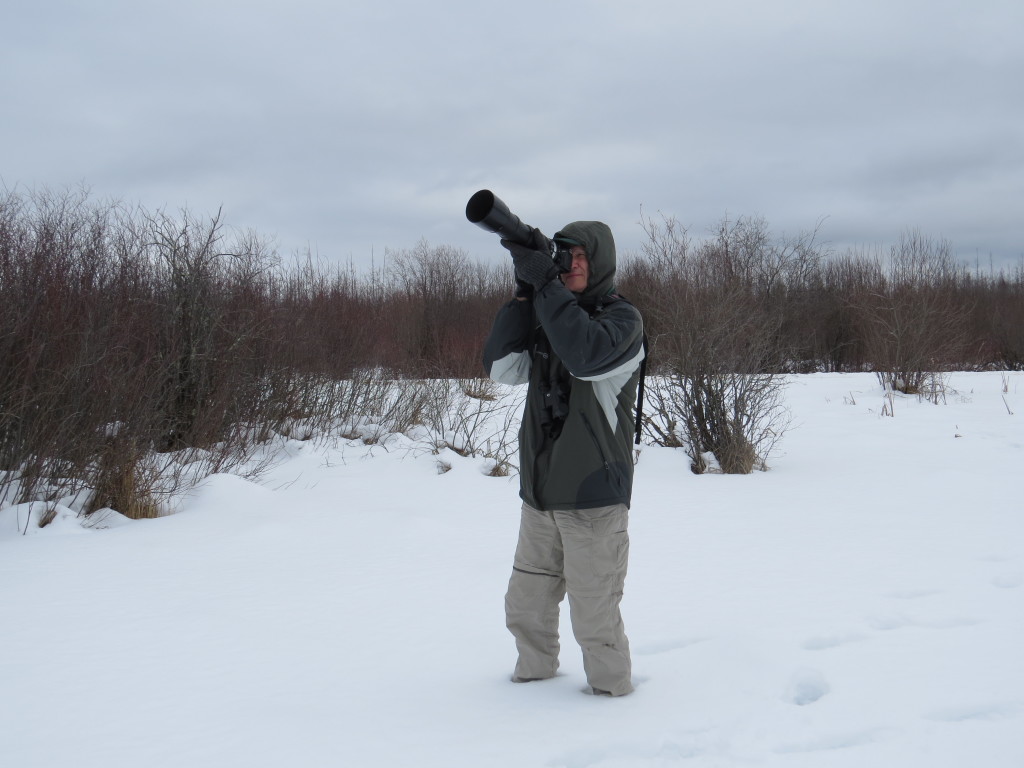 Get ‘im Tommy!
Get ‘im Tommy!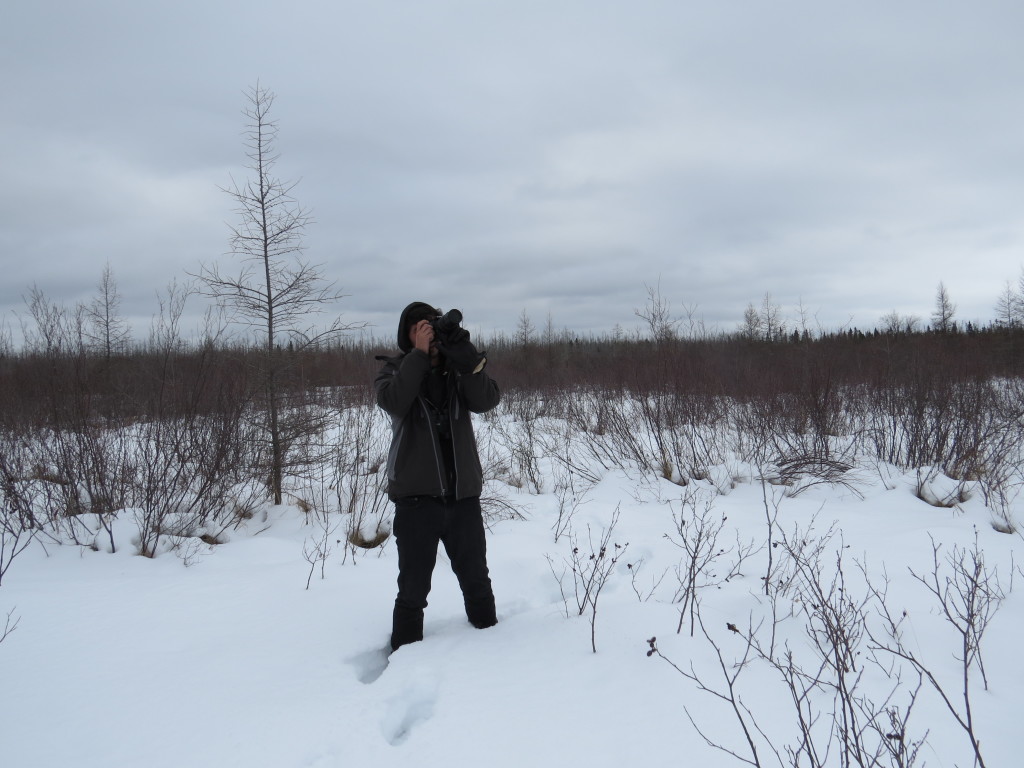 Even though the blue skies and the hoarfrost were gone, this was my favorite Hawk Owl experience of the day. We were totally alone in the middle of the remote Beltrami Island State Forest with this Owl. There was not even another bird around. Truly, it was an idyllic setting.
Even though the blue skies and the hoarfrost were gone, this was my favorite Hawk Owl experience of the day. We were totally alone in the middle of the remote Beltrami Island State Forest with this Owl. There was not even another bird around. Truly, it was an idyllic setting.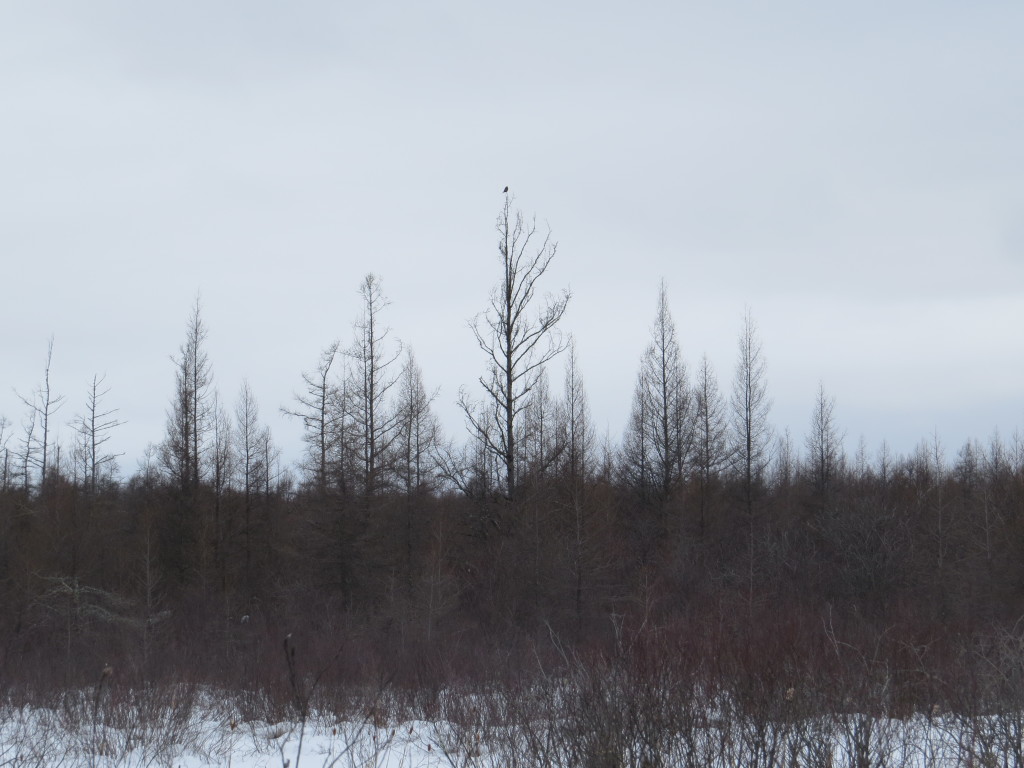
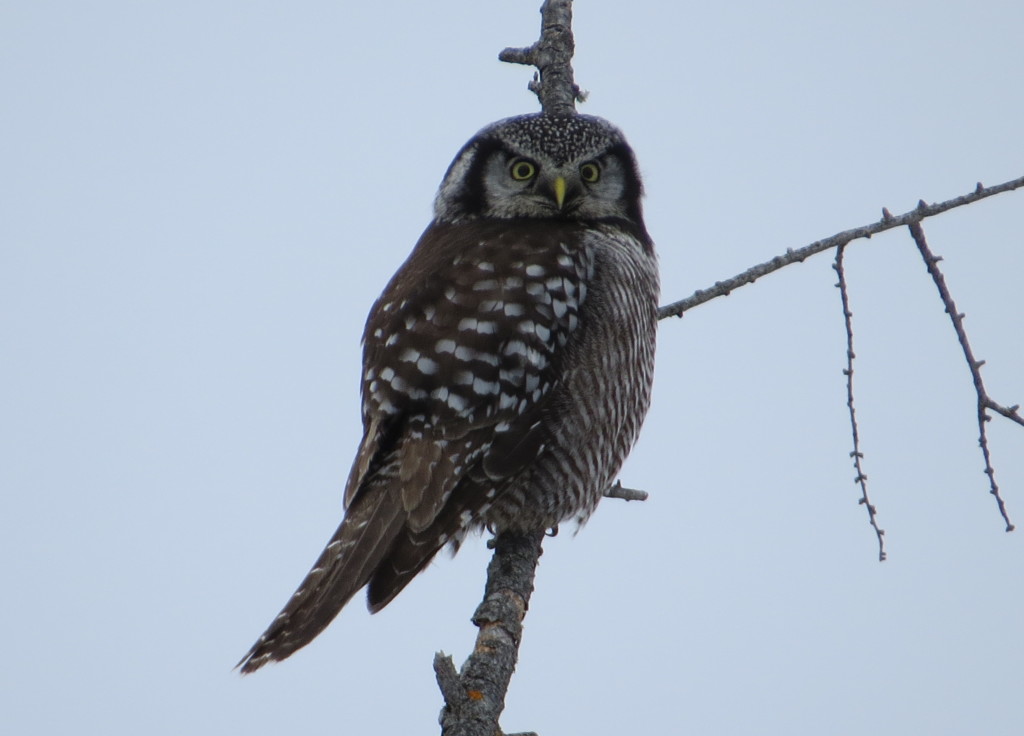
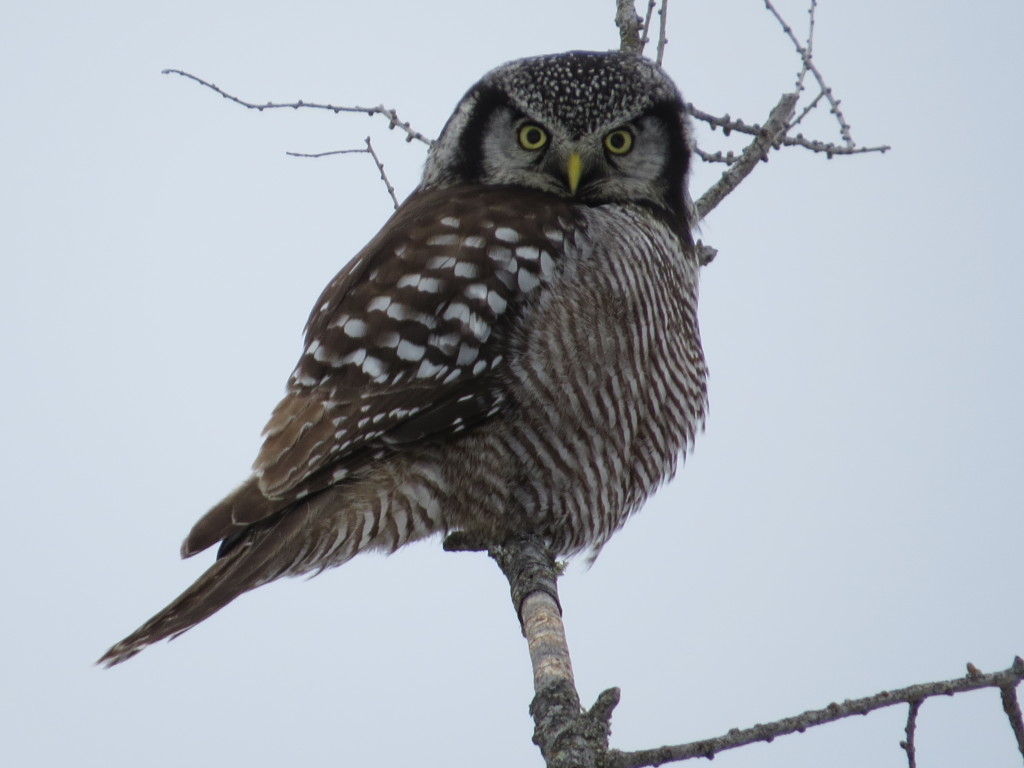
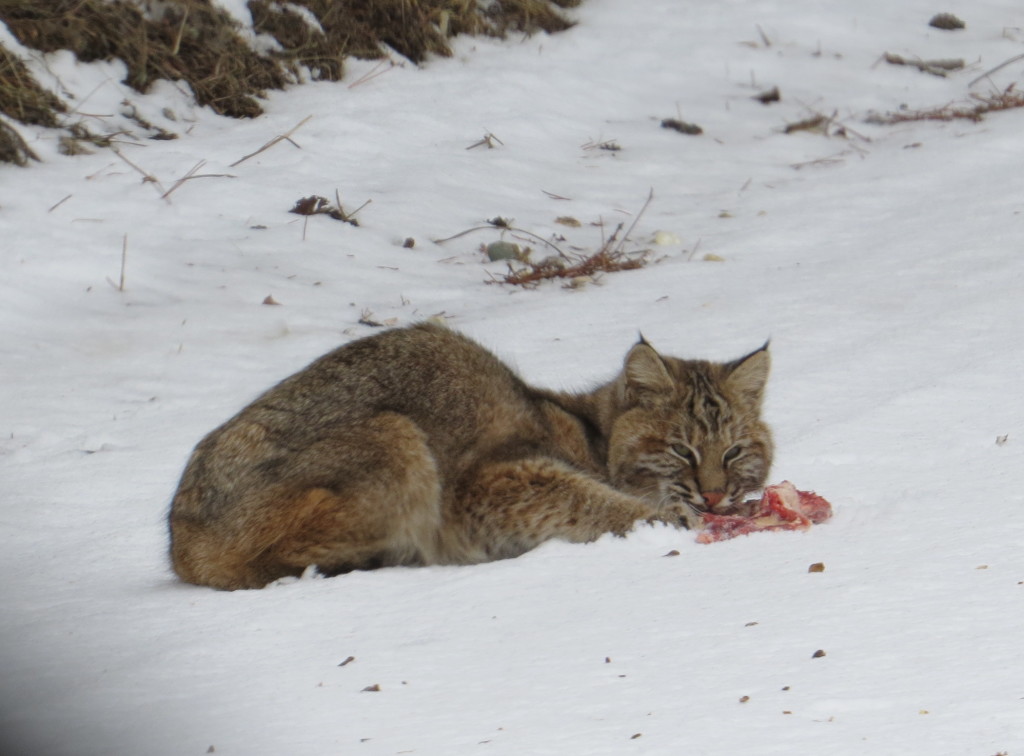 Upon closer inspection, though, it looked very sickly. It did not move even as we pulled up alongside it. While we watched, it made feeble attempts at gnawing on this slab of meat which came from where? Clearly this cat could not eat what was in front of it, let alone kill something. Sad.
Upon closer inspection, though, it looked very sickly. It did not move even as we pulled up alongside it. While we watched, it made feeble attempts at gnawing on this slab of meat which came from where? Clearly this cat could not eat what was in front of it, let alone kill something. Sad.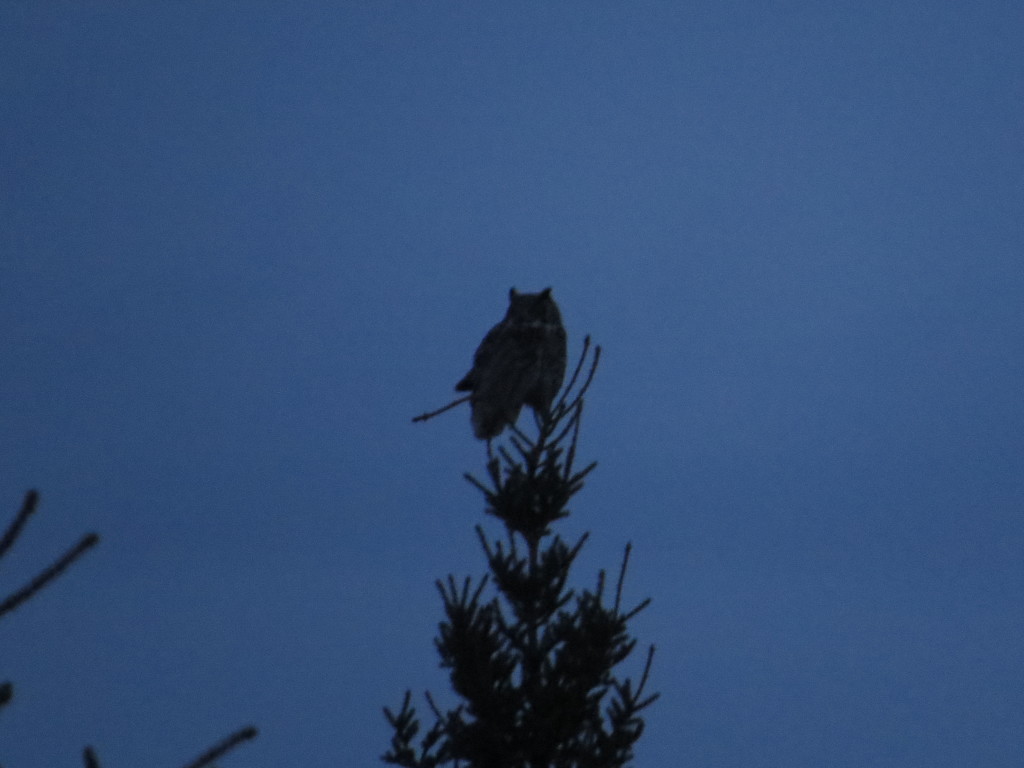 It was an incredible trip to the Northwest and one I won’t forget anytime soon. The day was capped off with a hot meal at the Wooden Table in Angora and the relaxation of knowing that we could “sleep in” the next day even though we had another exciting birding itinerary for the day of Tommy and Gordon’s departure.
It was an incredible trip to the Northwest and one I won’t forget anytime soon. The day was capped off with a hot meal at the Wooden Table in Angora and the relaxation of knowing that we could “sleep in” the next day even though we had another exciting birding itinerary for the day of Tommy and Gordon’s departure.
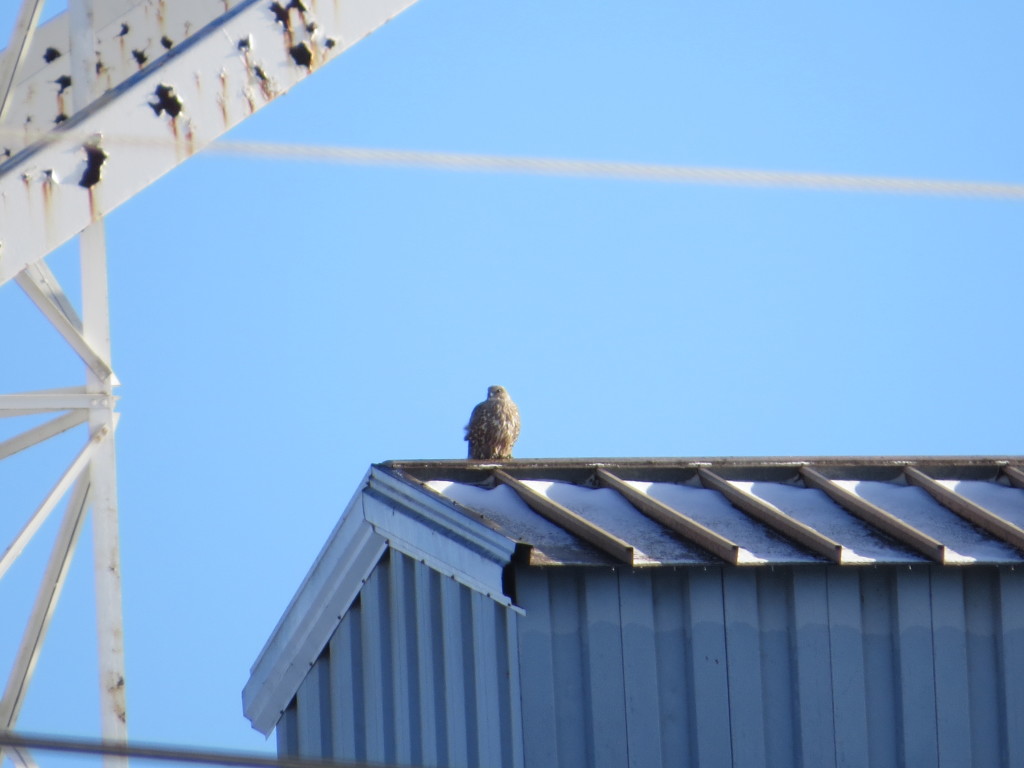
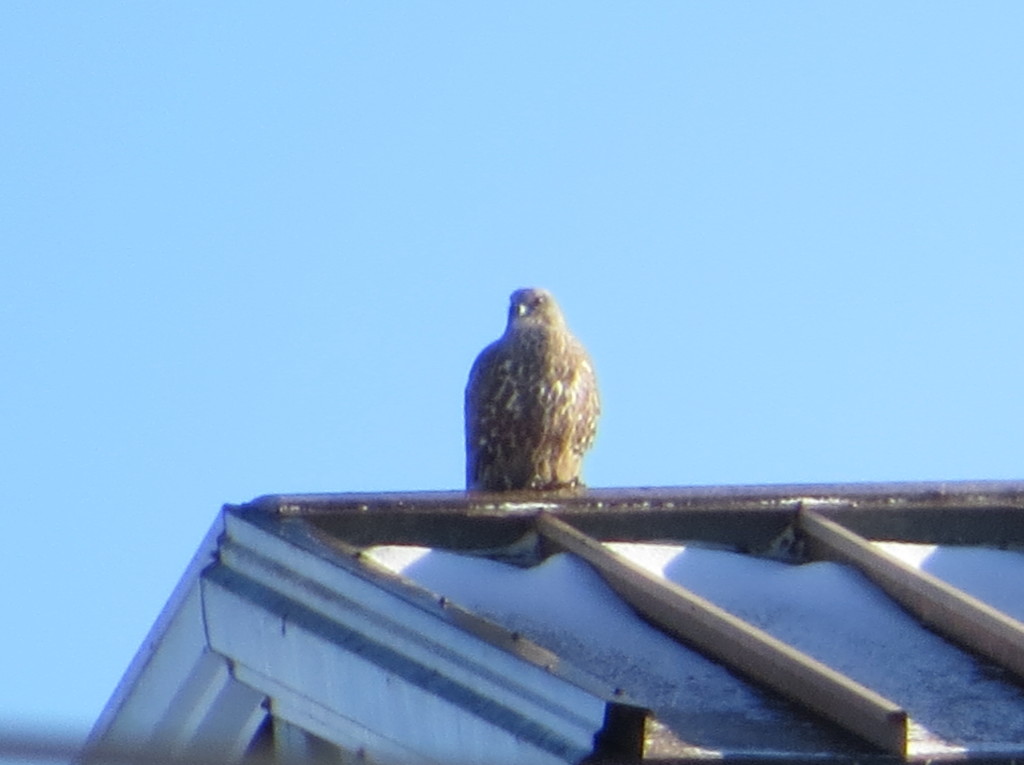 After this, we made a stop at Canal Park in Duluth to see what was going on Gull-wise. The guys picked up a handsome Thayer’s Gull lifer, but that was about it. I couldn’t even muster up a Black Duck for the guys. I did, however, do my Minnesota duty and made Tommy and Gordon skip rocks in Lake Superior.
After this, we made a stop at Canal Park in Duluth to see what was going on Gull-wise. The guys picked up a handsome Thayer’s Gull lifer, but that was about it. I couldn’t even muster up a Black Duck for the guys. I did, however, do my Minnesota duty and made Tommy and Gordon skip rocks in Lake Superior.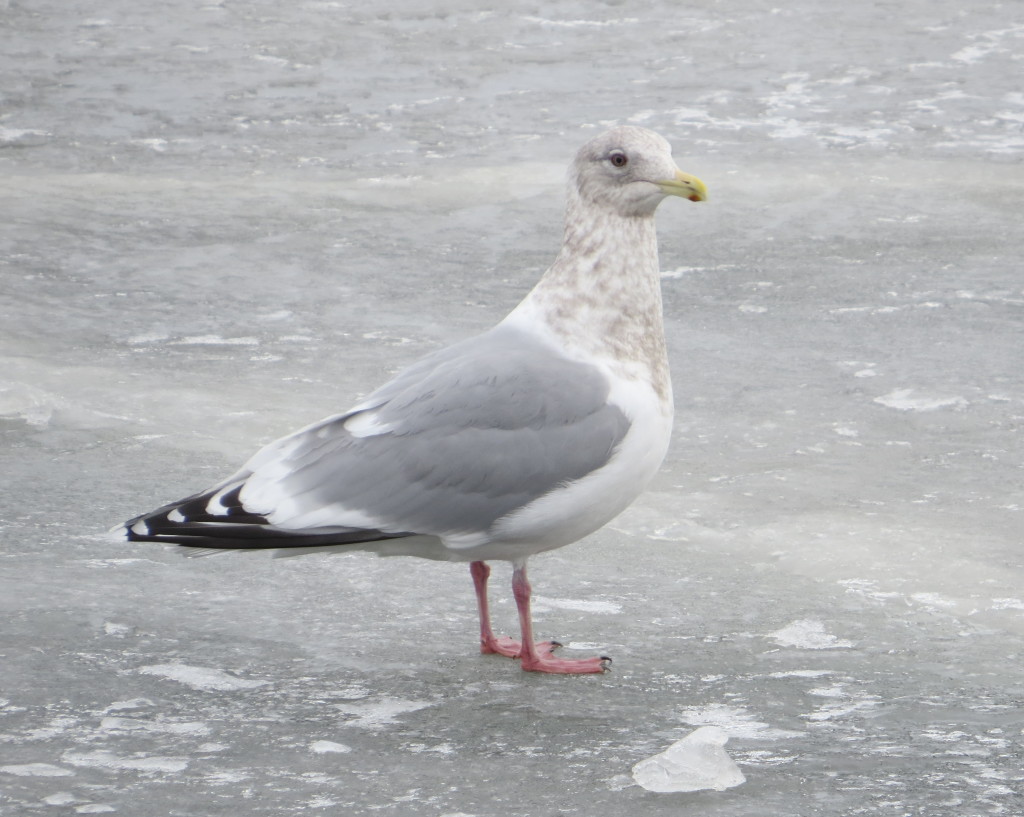
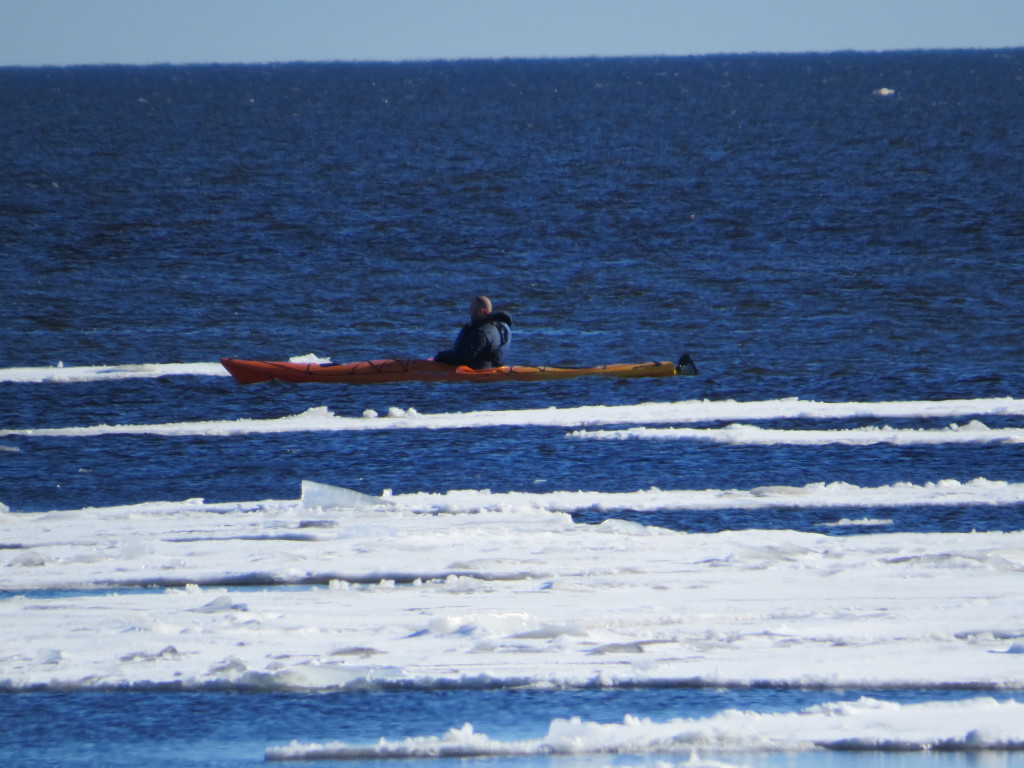
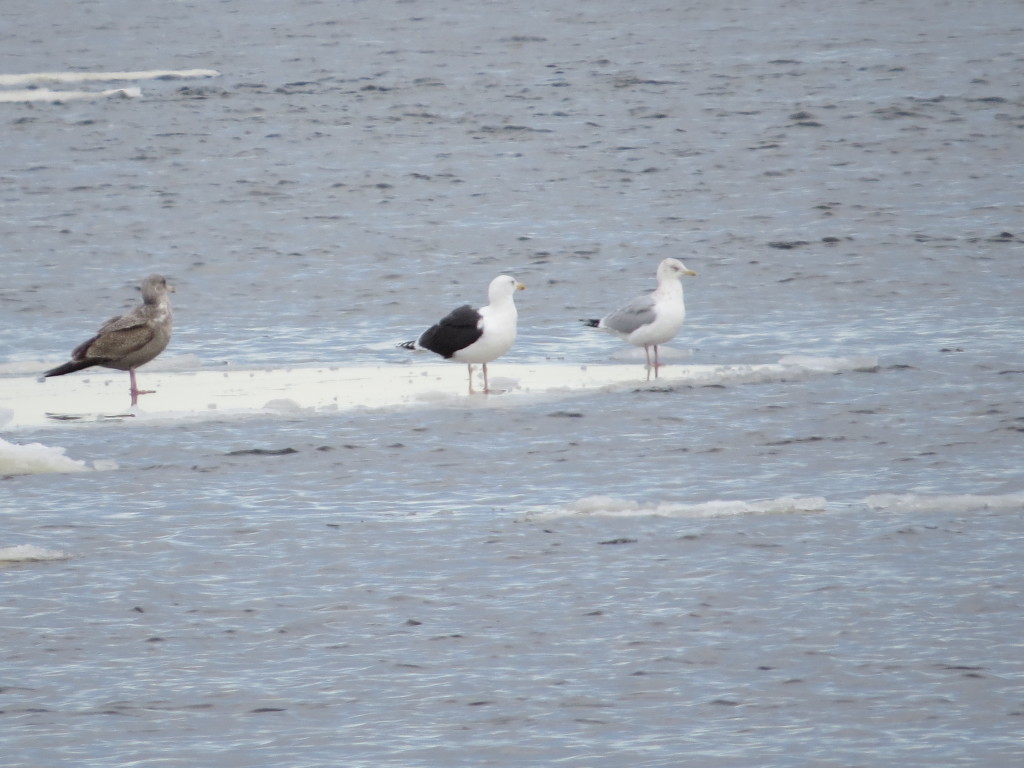 Tommy and Gordon quickly tallied this lifer as well as the Iceland Gull lifer. They also got to witness the spontaneous birder parties that happen at Canal Park as the who’s who of Duluth birders show up to enjoy the Gulls, look for the really wacko stuff (Ivory Gull, Black-legged Kittiwake), toss bread out to bring the Gulls closer, take orders for what Gulls everybody is still looking for, and generally be friendly tutors to those of us still illiterate in Gull identification. Peder Svingen, Clinton Nienhaus, and John Richardson were all on hand this particular afternoon to confirm species ID and point out the cool Gulls from the Herring herd. Even when some of us were distracted with trying to get a THGU/Lighthouse combo pic…
Tommy and Gordon quickly tallied this lifer as well as the Iceland Gull lifer. They also got to witness the spontaneous birder parties that happen at Canal Park as the who’s who of Duluth birders show up to enjoy the Gulls, look for the really wacko stuff (Ivory Gull, Black-legged Kittiwake), toss bread out to bring the Gulls closer, take orders for what Gulls everybody is still looking for, and generally be friendly tutors to those of us still illiterate in Gull identification. Peder Svingen, Clinton Nienhaus, and John Richardson were all on hand this particular afternoon to confirm species ID and point out the cool Gulls from the Herring herd. Even when some of us were distracted with trying to get a THGU/Lighthouse combo pic…
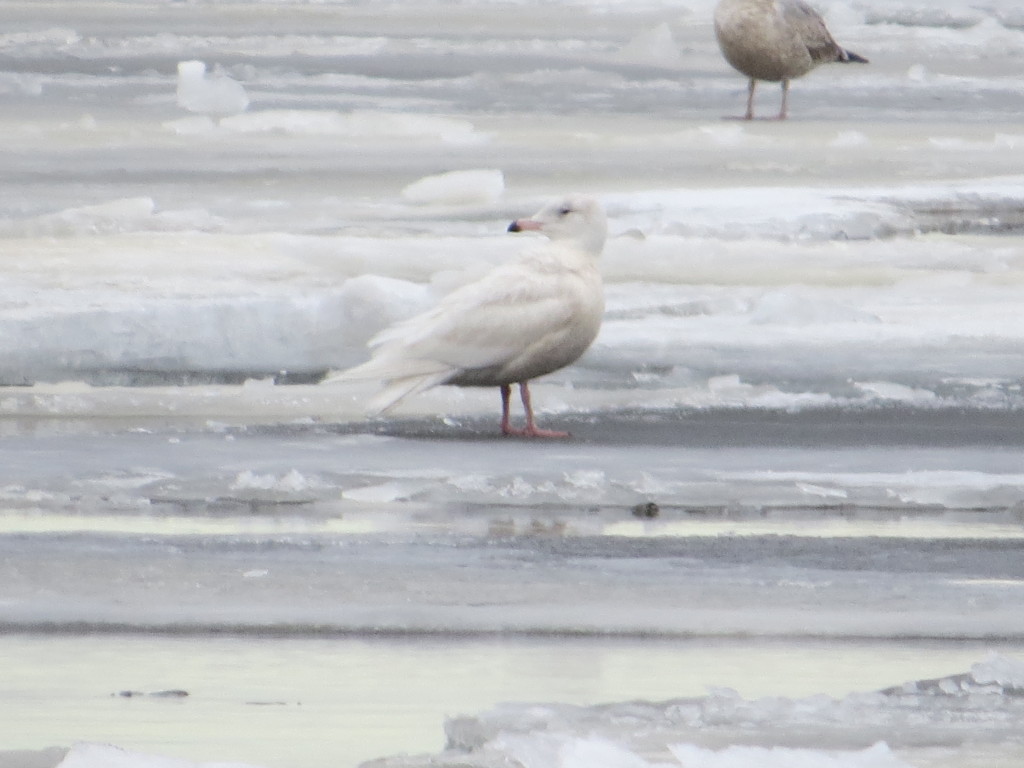

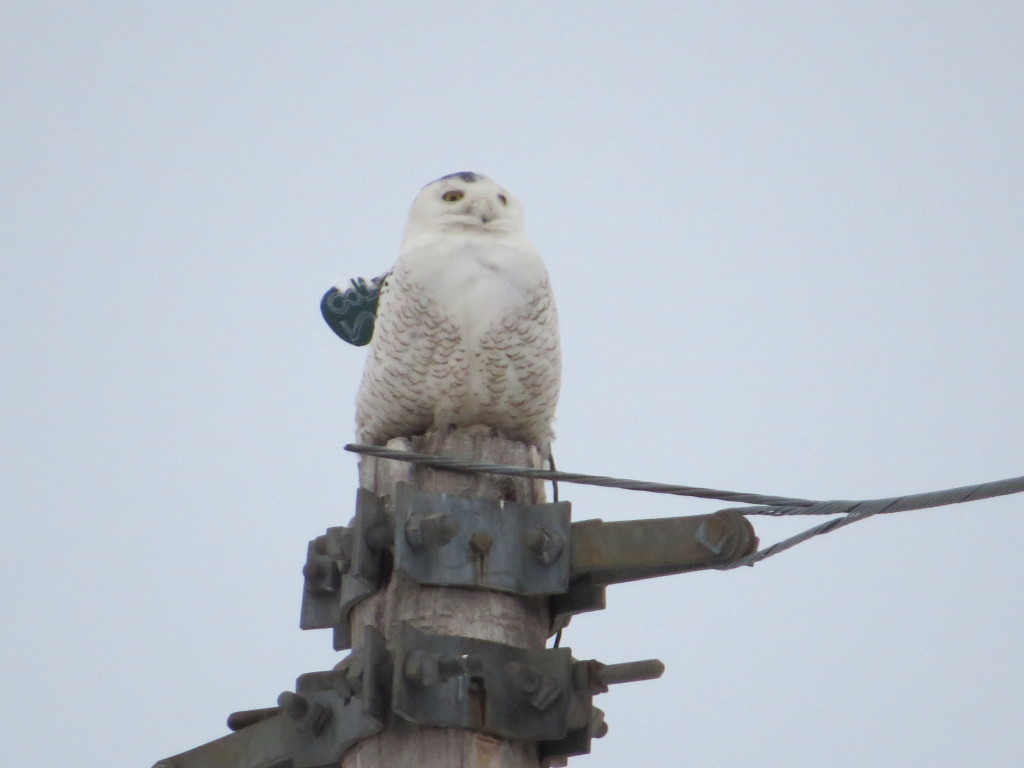 The wing tags help Dave monitor and identify the Owls from afar without having to stress them with recapture. Here is the first Snowy Owl we saw just before #28 above.
The wing tags help Dave monitor and identify the Owls from afar without having to stress them with recapture. Here is the first Snowy Owl we saw just before #28 above.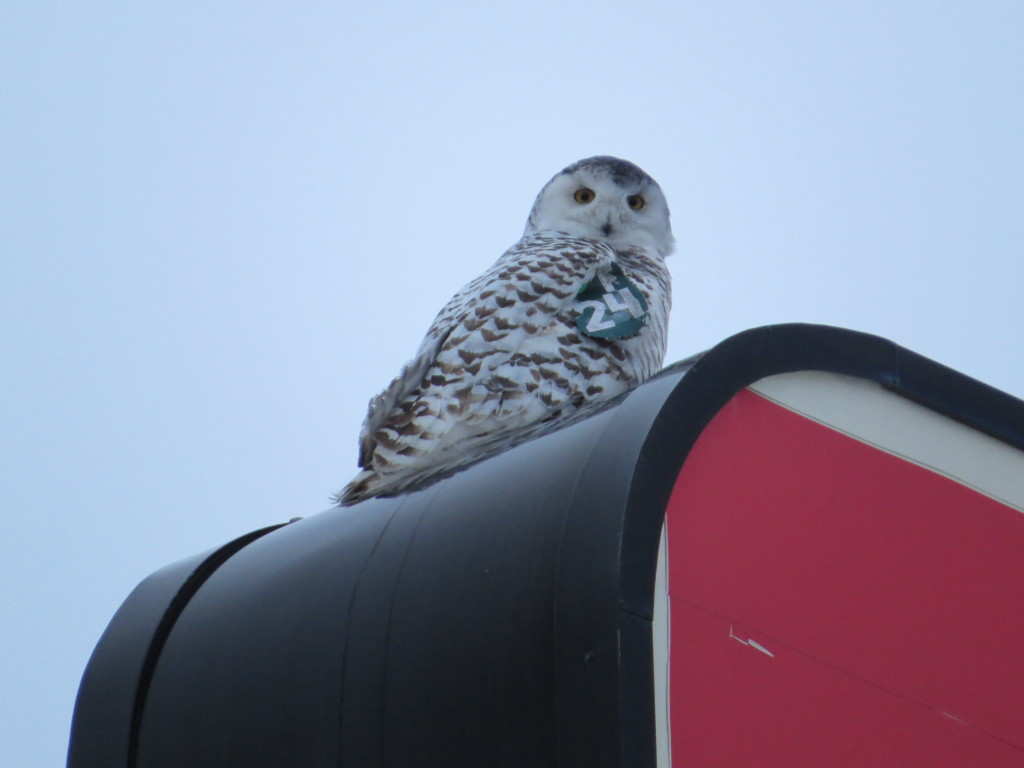 I wish Tommy and Gordon could have seen unmarked Snowy Owls, but a marked Snowy seen is better than an unmarked Snowy not seen! Ironically, these were the first marked Snowy Owls I had ever seen in real life. Tommy and Gordon did get to gain an appreciation for the types of urban habitats these birds often winter in.
I wish Tommy and Gordon could have seen unmarked Snowy Owls, but a marked Snowy seen is better than an unmarked Snowy not seen! Ironically, these were the first marked Snowy Owls I had ever seen in real life. Tommy and Gordon did get to gain an appreciation for the types of urban habitats these birds often winter in. It was another rocking day of birding in the north that met or even exceeded expectations. Notable misses included American Black Duck and Bohemian Waxwing. On a sad, personal note, my Kittiwake lifer did not make an appearance. Here is a run-down of the second day’s lifers:
It was another rocking day of birding in the north that met or even exceeded expectations. Notable misses included American Black Duck and Bohemian Waxwing. On a sad, personal note, my Kittiwake lifer did not make an appearance. Here is a run-down of the second day’s lifers: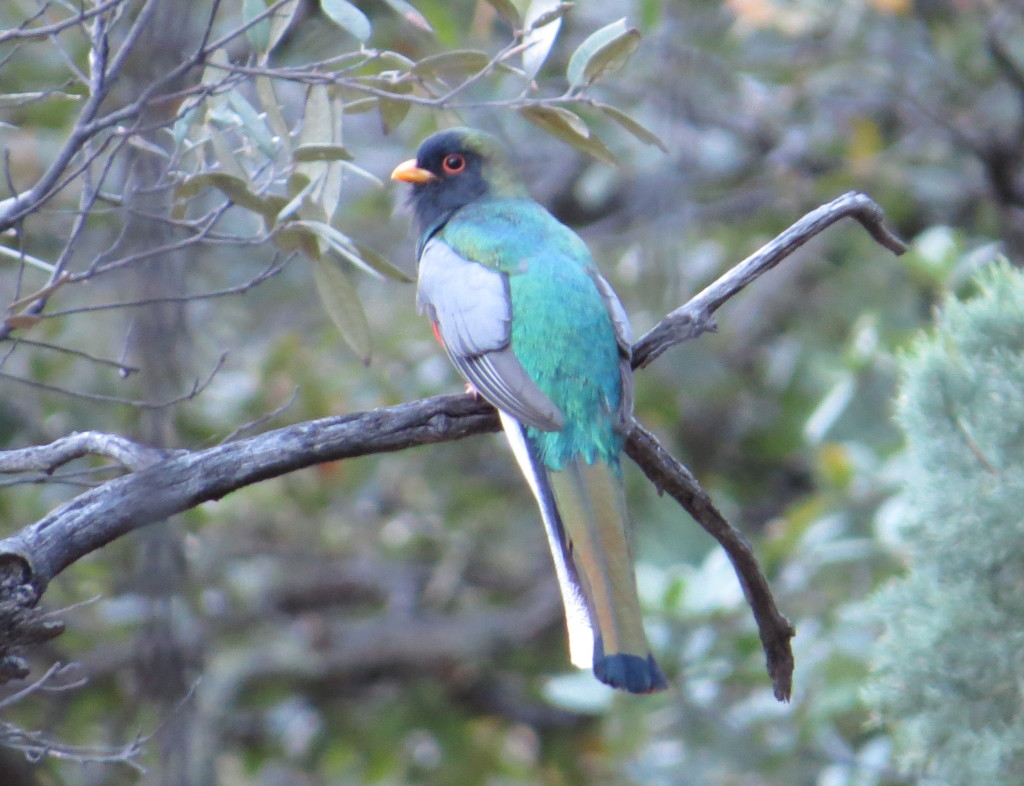 and over…
and over…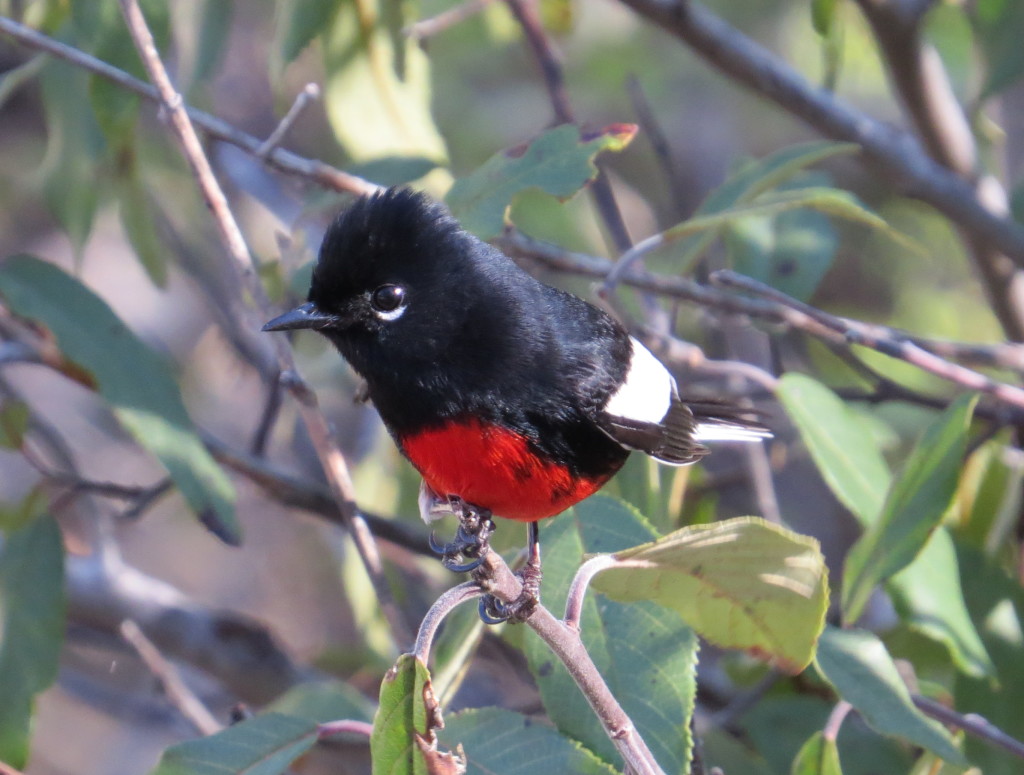 and over.
and over.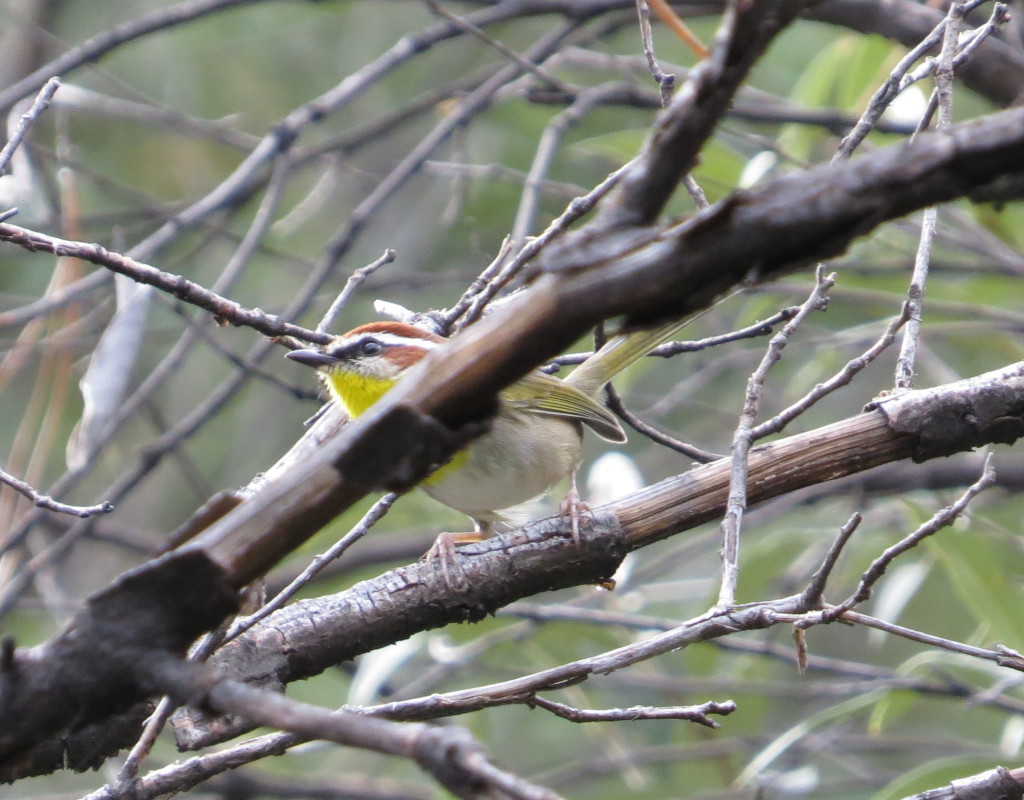

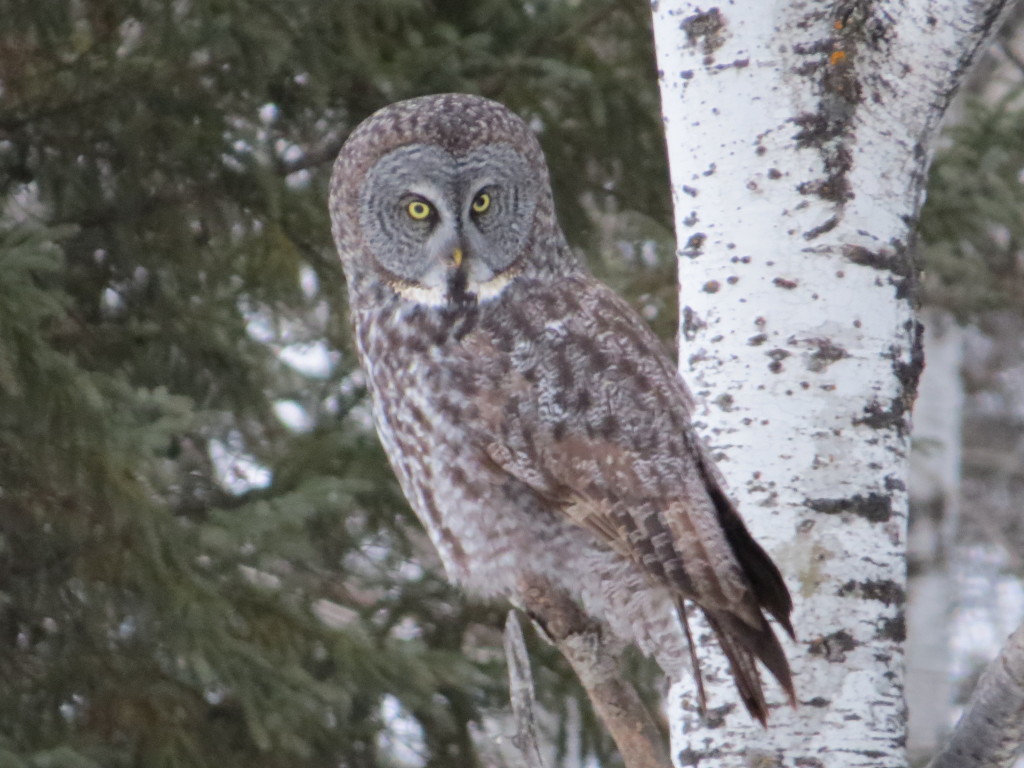
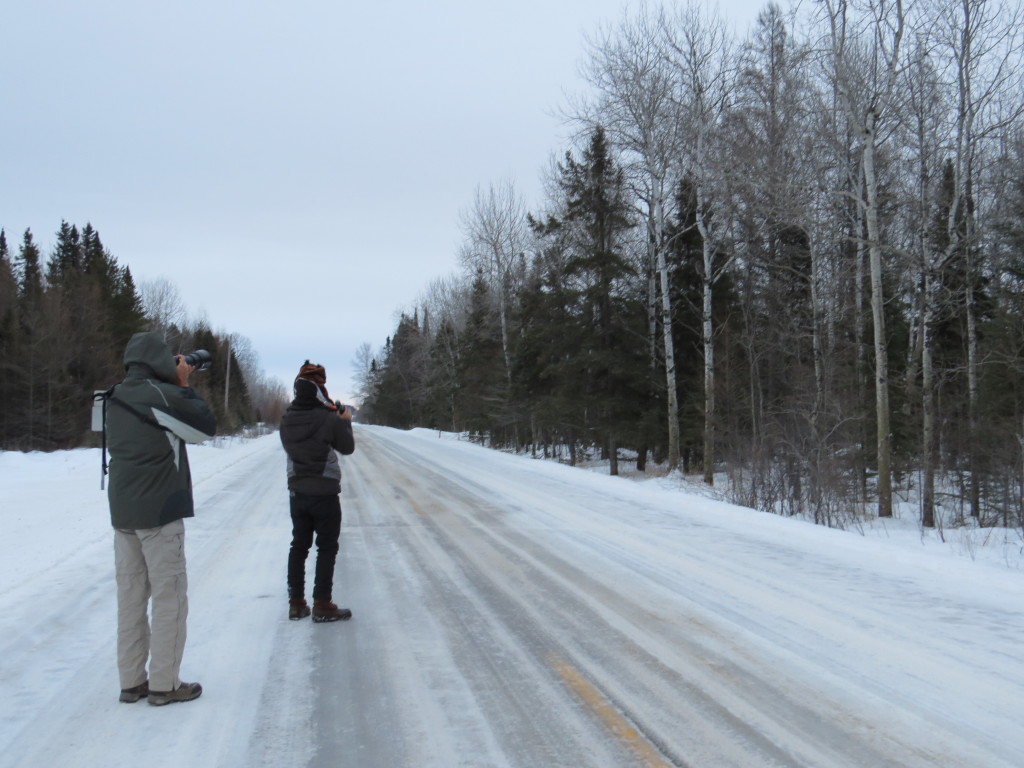 Not only was it thrill to watch these guys get this incredible lifer, but I also enjoyed seeing a Great Gray in a new (to me) part of the Bog. It doesn’t matter where these guys are, though. They are just plain cool.
Not only was it thrill to watch these guys get this incredible lifer, but I also enjoyed seeing a Great Gray in a new (to me) part of the Bog. It doesn’t matter where these guys are, though. They are just plain cool.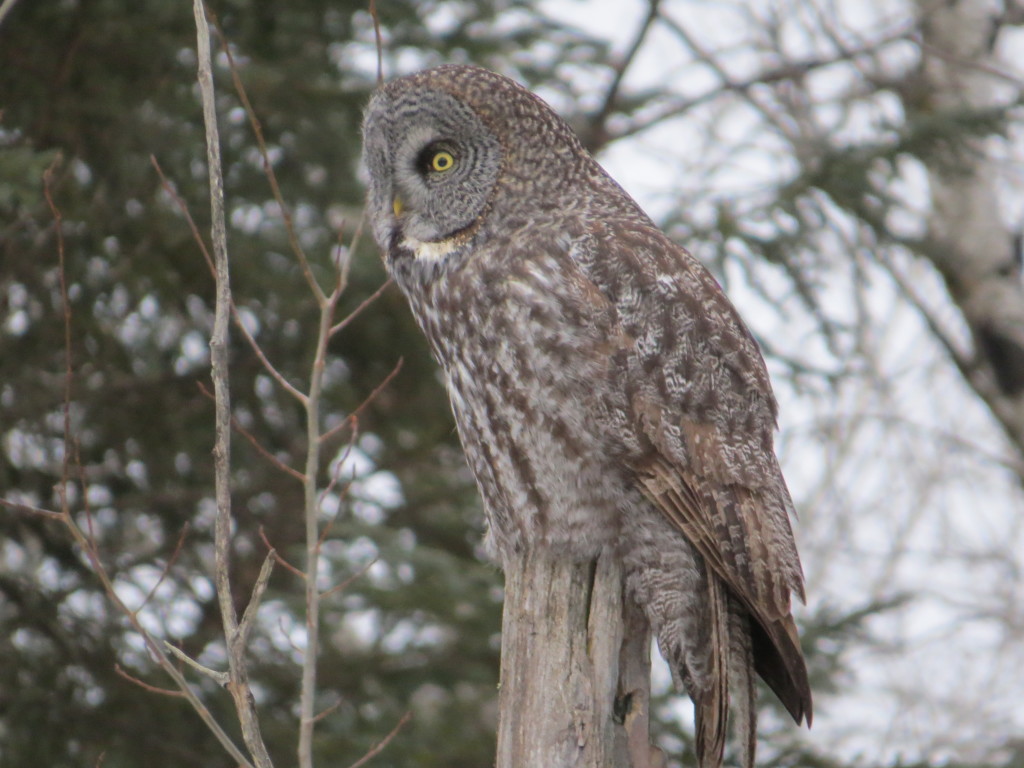
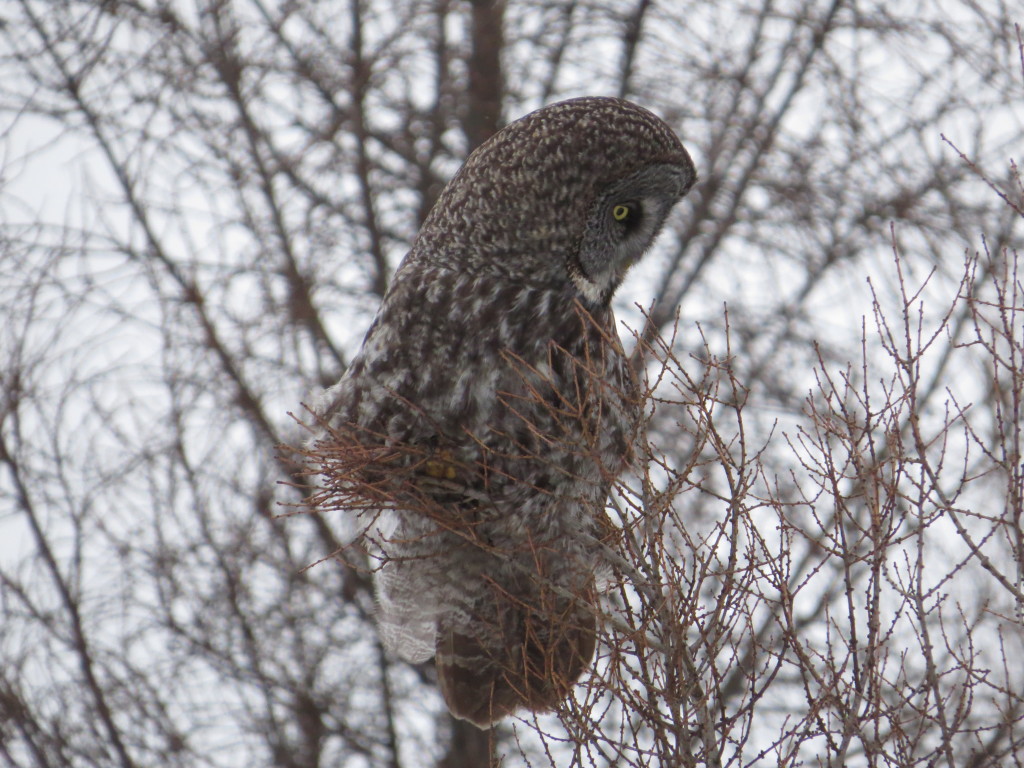
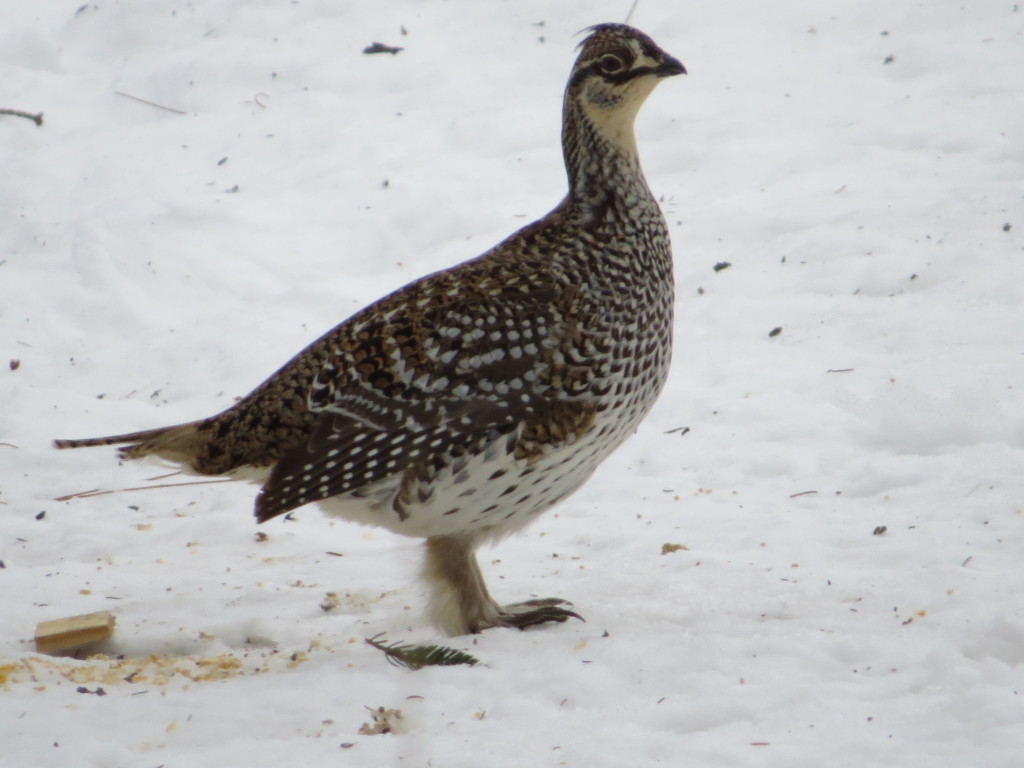 The guys even got to see the males of this new lifer doing their courtship dances! That was topped off by the Grouse coming roadside to feast at a local resident’s feeders before retiring for the day. It really couldn’t have been a better experience for viewing this bird.
The guys even got to see the males of this new lifer doing their courtship dances! That was topped off by the Grouse coming roadside to feast at a local resident’s feeders before retiring for the day. It really couldn’t have been a better experience for viewing this bird.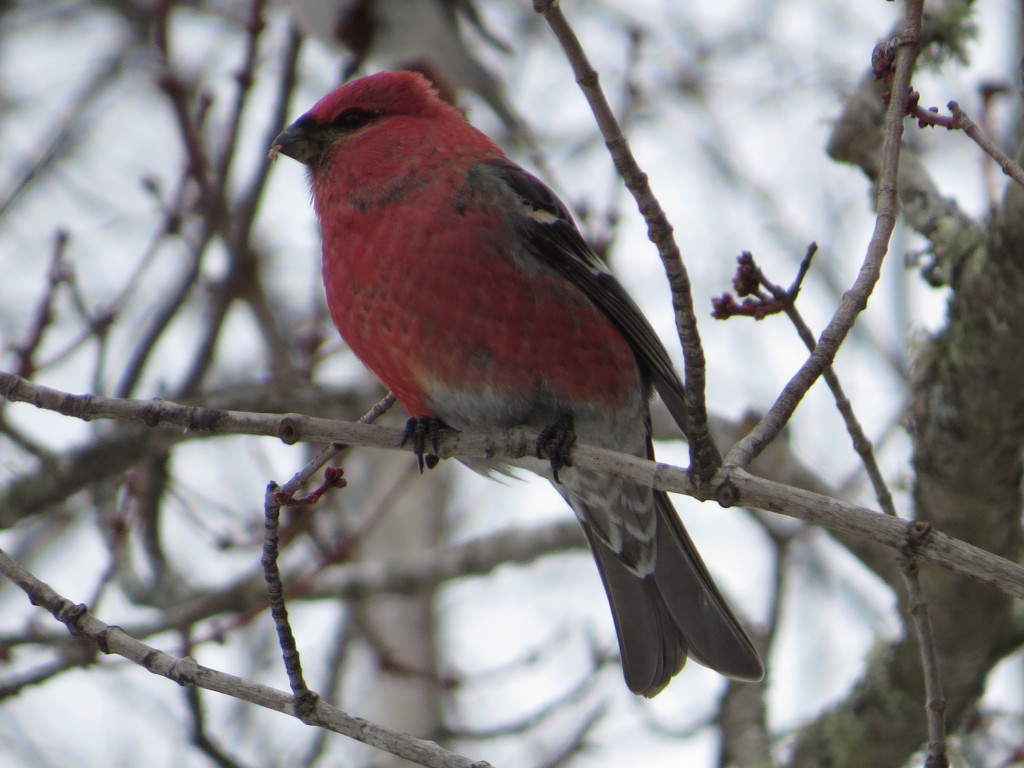 This is a bird I previously had terrible photos of, so this felt good to see a male up close.
This is a bird I previously had terrible photos of, so this felt good to see a male up close.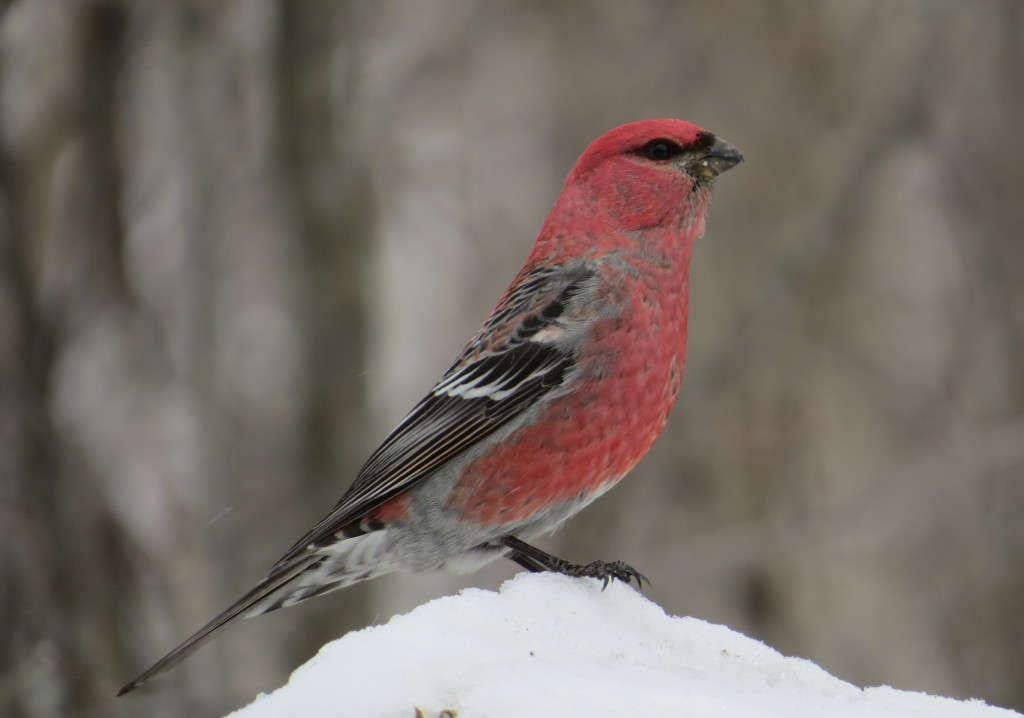 And of course, there were Common Redpolls which is a lifer for the guys. There are always Redpolls. This one had some potential for…oh, who cares anymore?
And of course, there were Common Redpolls which is a lifer for the guys. There are always Redpolls. This one had some potential for…oh, who cares anymore?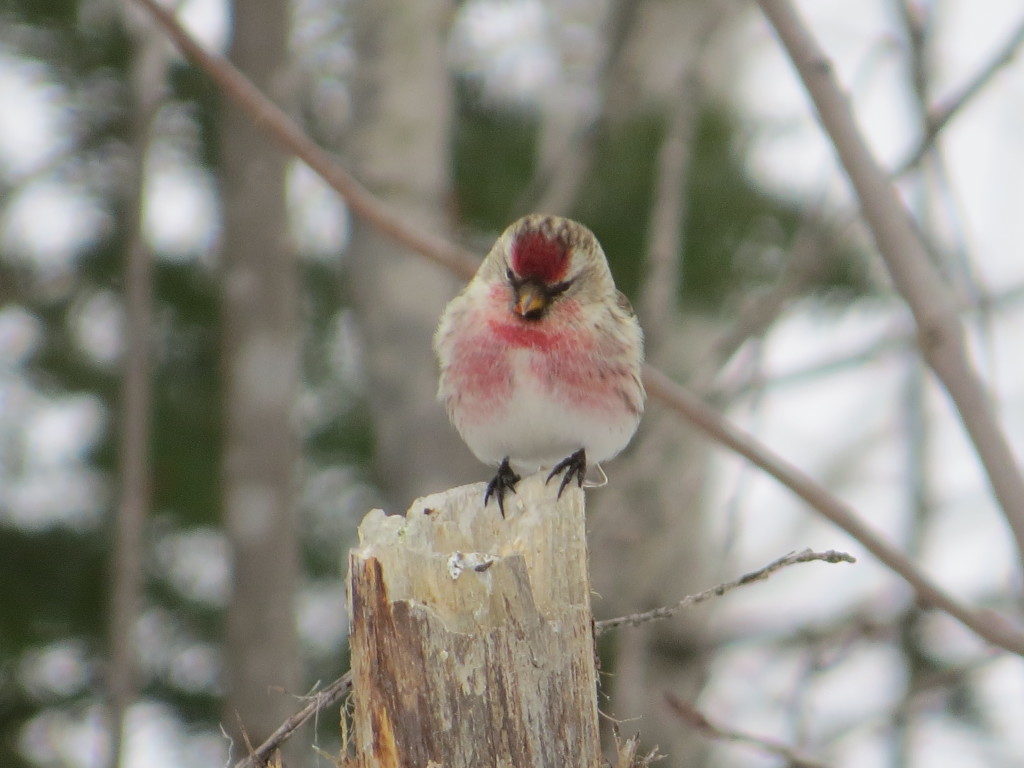
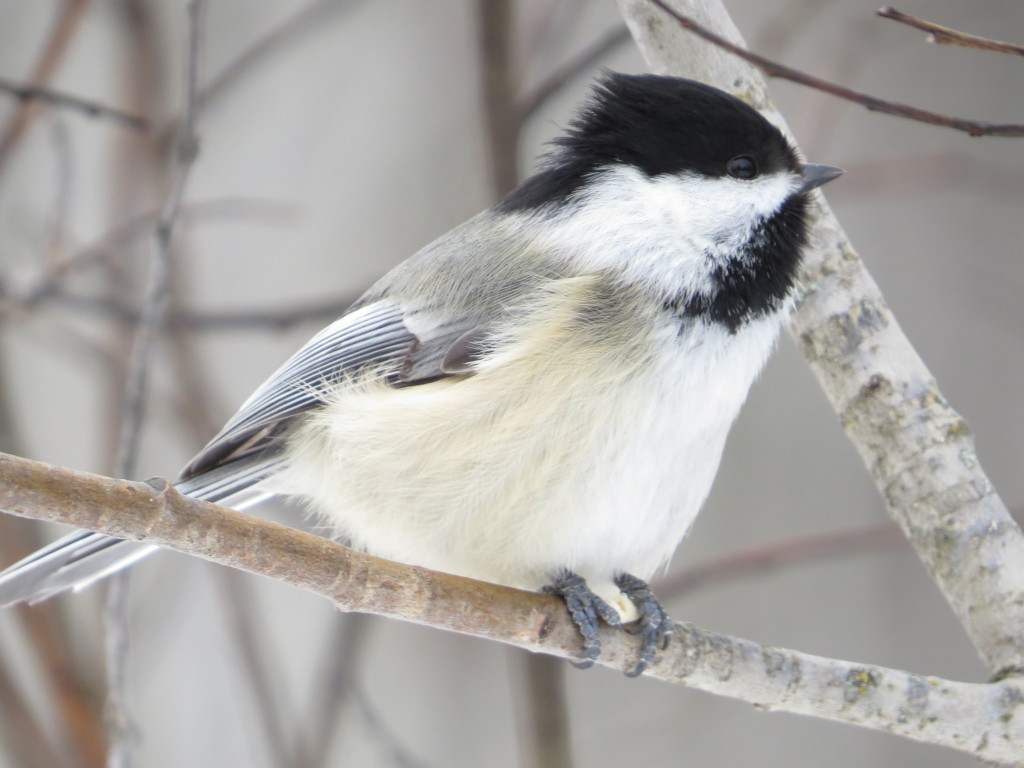
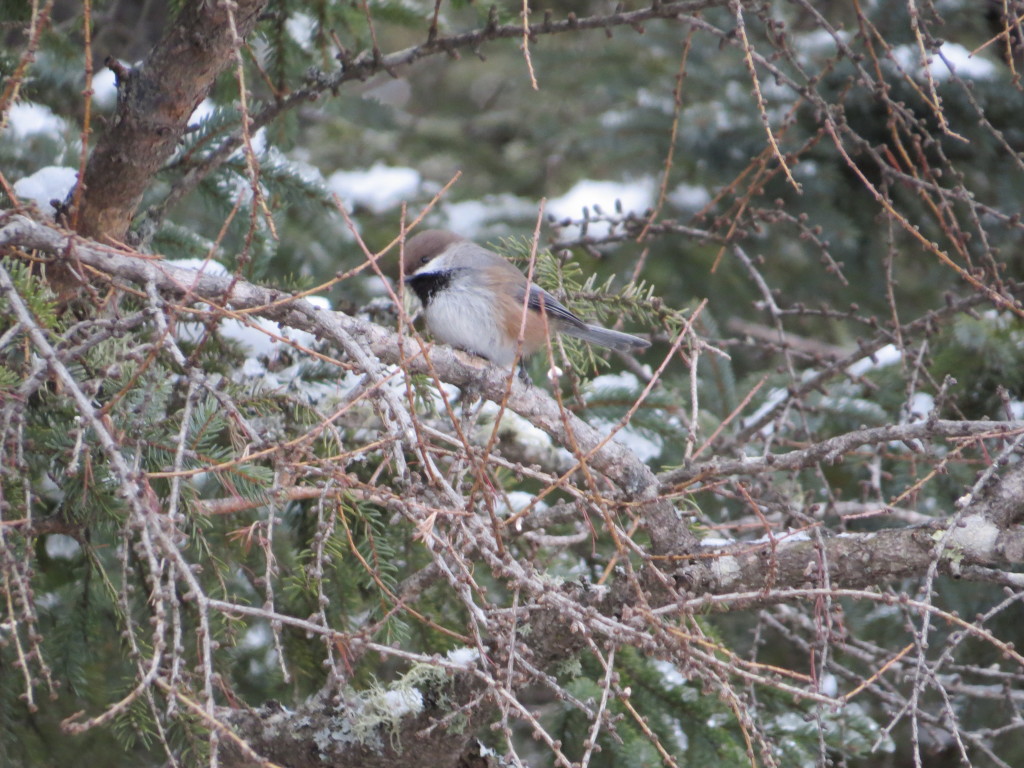 The Boreal Chickadees had started to become a regular at the Admiral Road feeders not more than a week before the guys arrived. Tommy and Gordon were truly spoiled with this lifer. It appeared within a minute of us stopping at the feeders. How many birders, myself included, have waited for an hour or more only to be skunked? Additionally, it came out often, like every minute instead of every half hour. Like the Great Gray, this bird is not a given. Also like the Great Gray, much face time is required with this bird. I would estimate that we spent equal time with it as we did with the Owl. For me this bird ranks just below a Great Gray Owl but definitely above a Snowy Owl. As such, I am on a never-ending quest to get a photo of a BOCH that I am happy with.
The Boreal Chickadees had started to become a regular at the Admiral Road feeders not more than a week before the guys arrived. Tommy and Gordon were truly spoiled with this lifer. It appeared within a minute of us stopping at the feeders. How many birders, myself included, have waited for an hour or more only to be skunked? Additionally, it came out often, like every minute instead of every half hour. Like the Great Gray, this bird is not a given. Also like the Great Gray, much face time is required with this bird. I would estimate that we spent equal time with it as we did with the Owl. For me this bird ranks just below a Great Gray Owl but definitely above a Snowy Owl. As such, I am on a never-ending quest to get a photo of a BOCH that I am happy with.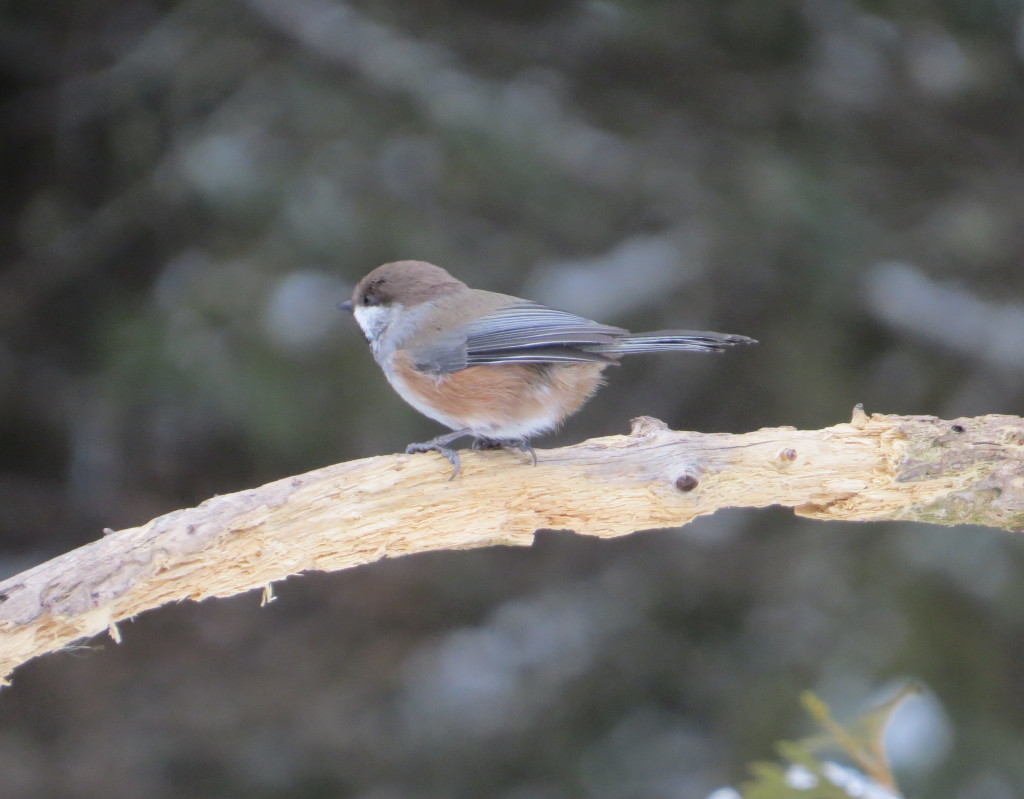
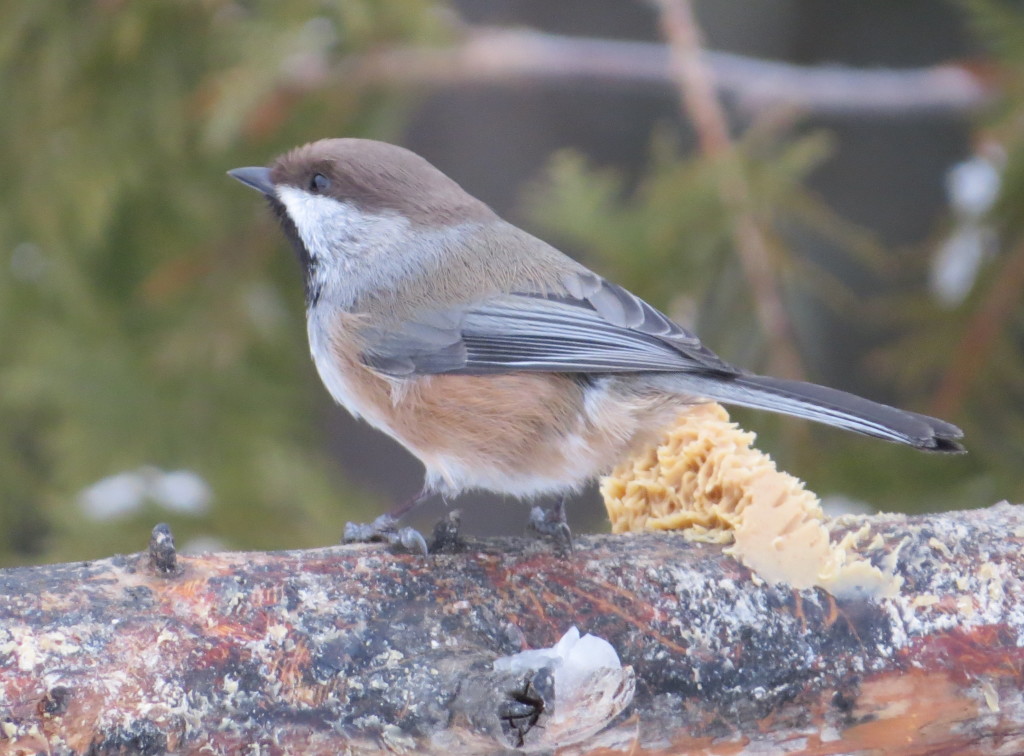
 The next stop was for Milt Blomberg’s Varied Thrush at Oakland Cemetery in Marine on St. Croix. It was also a no show. I did not spend more than a few minutes looking for this bird which would merely be a year bird; there was bigger game at stake. We needed to get down to Afton State Park in time for the evening show of some Short-eared Owls. This would be a much hoped-for lifer. We made it by my target time of 4:00, but barely. As you can see, the heavy snow in the first picture had transformed the eastern portion of the state into Hoth. The kids were prepared.
The next stop was for Milt Blomberg’s Varied Thrush at Oakland Cemetery in Marine on St. Croix. It was also a no show. I did not spend more than a few minutes looking for this bird which would merely be a year bird; there was bigger game at stake. We needed to get down to Afton State Park in time for the evening show of some Short-eared Owls. This would be a much hoped-for lifer. We made it by my target time of 4:00, but barely. As you can see, the heavy snow in the first picture had transformed the eastern portion of the state into Hoth. The kids were prepared.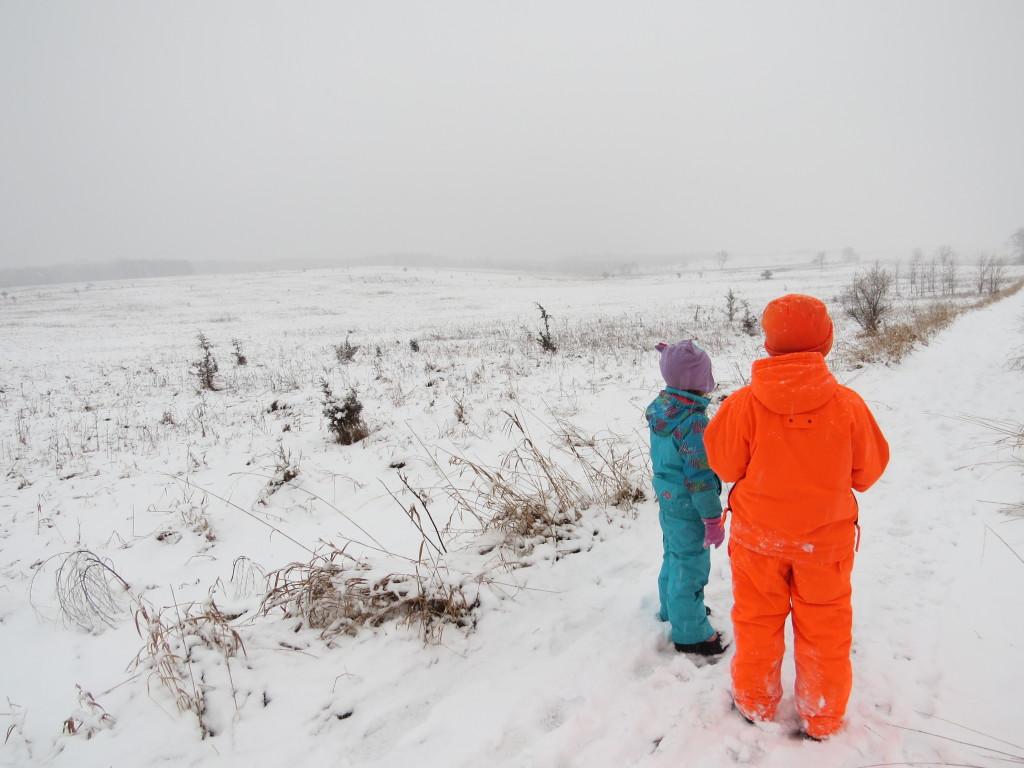 The kids and I walked around the border of this entire prairie area, hoping to spot a Short-eared Owl flying at any moment. I should say that I was hoping to spot an Owl; they were happy to be out of the car and frolicking in the snow. Despair–for me–was sinking in as it looked like this would be strike three for the day’s agenda. But then on the walk back toward the car, a voice boomed from the other side of the prairie, “Hey! Short-eared Owl!” God? No, it was Pete Nichols, moderator of the MN Birding Facebook Group. This was his turf, and he had come to check up on the Owls and give us an assist. Thanks, Pete!
The kids and I walked around the border of this entire prairie area, hoping to spot a Short-eared Owl flying at any moment. I should say that I was hoping to spot an Owl; they were happy to be out of the car and frolicking in the snow. Despair–for me–was sinking in as it looked like this would be strike three for the day’s agenda. But then on the walk back toward the car, a voice boomed from the other side of the prairie, “Hey! Short-eared Owl!” God? No, it was Pete Nichols, moderator of the MN Birding Facebook Group. This was his turf, and he had come to check up on the Owls and give us an assist. Thanks, Pete!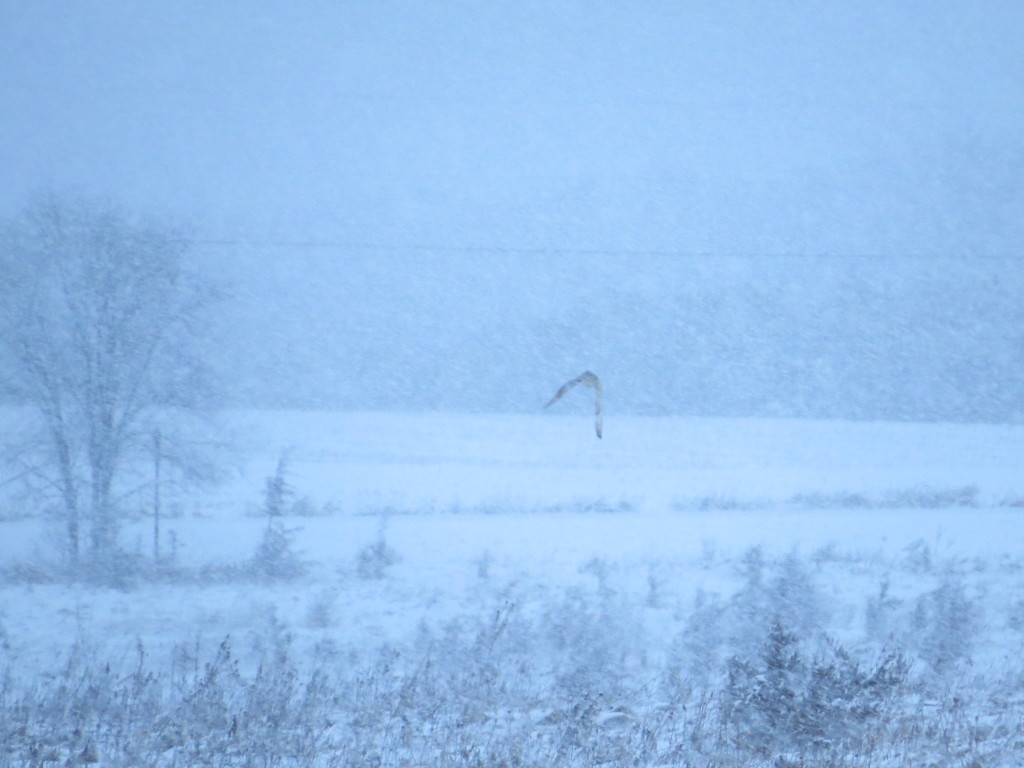
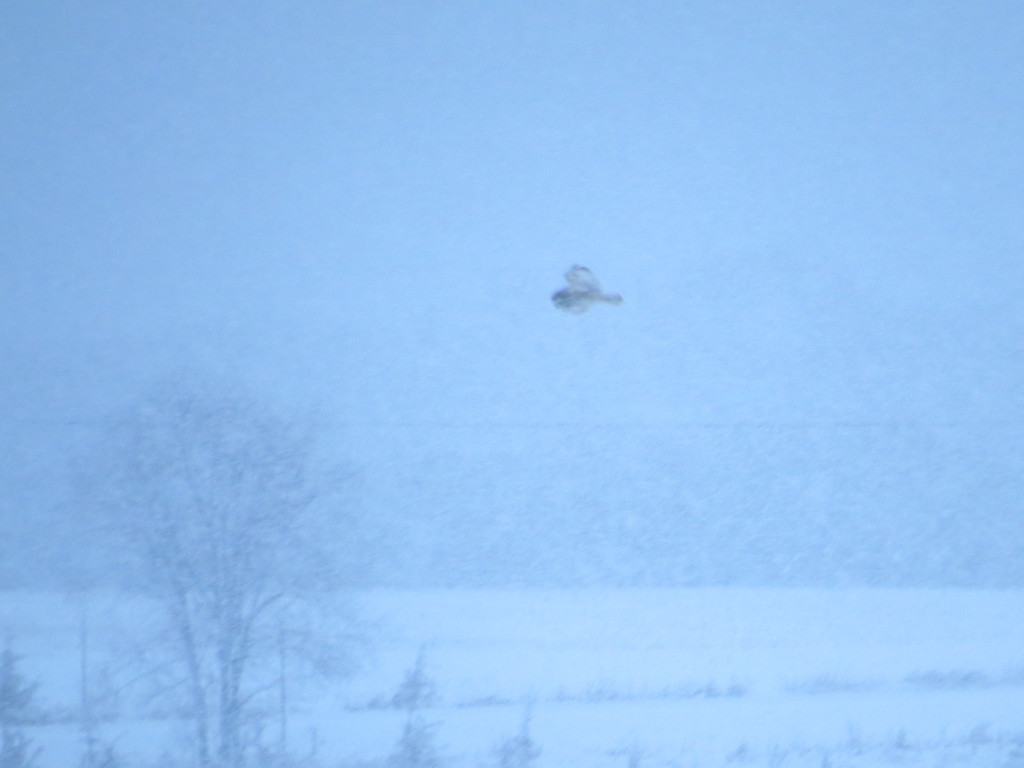 1 for 3 isn’t bad especially when that one is an Owl lifer. More important, though, was that I had a good day out of the house with the kids seeing a beautiful part of the state and exploring some great state parks together. The lack of birds may have even been a good thing as it forced me to pay more attention to the kids, to photograph them. After all, the Owls aren’t changing and will always be there.
1 for 3 isn’t bad especially when that one is an Owl lifer. More important, though, was that I had a good day out of the house with the kids seeing a beautiful part of the state and exploring some great state parks together. The lack of birds may have even been a good thing as it forced me to pay more attention to the kids, to photograph them. After all, the Owls aren’t changing and will always be there.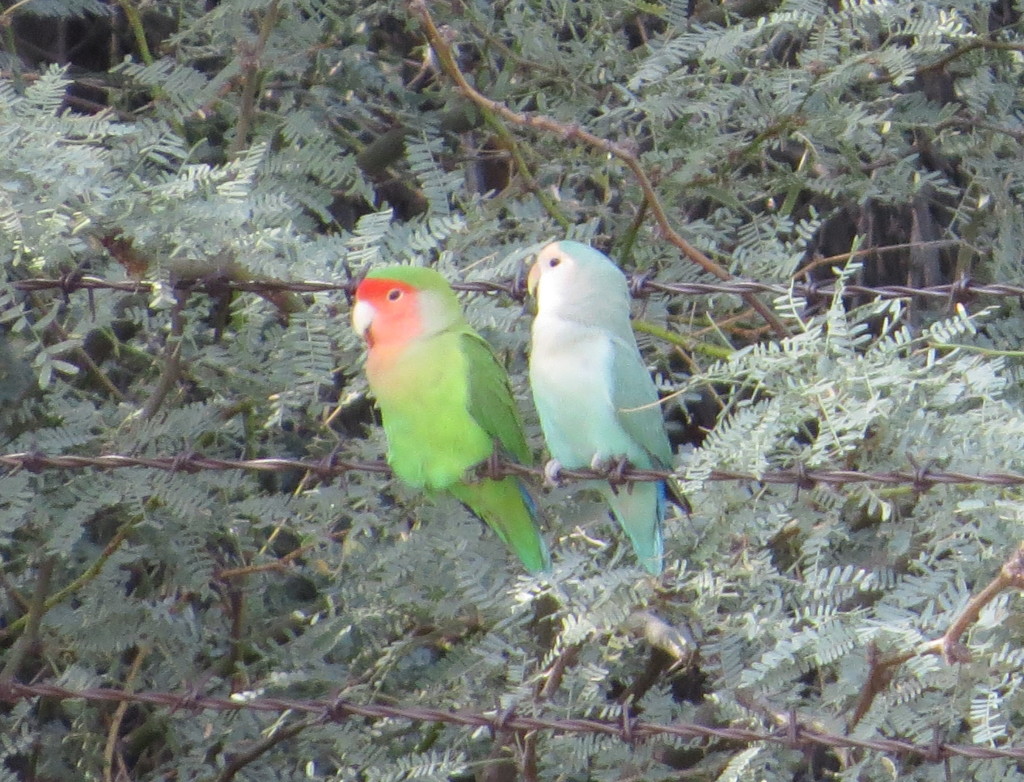 The Lovebirds have adapted well to the oases of the water-filled landscaping in the greater Phoenix area. They especially like palms which have proven useful for nesting.
The Lovebirds have adapted well to the oases of the water-filled landscaping in the greater Phoenix area. They especially like palms which have proven useful for nesting.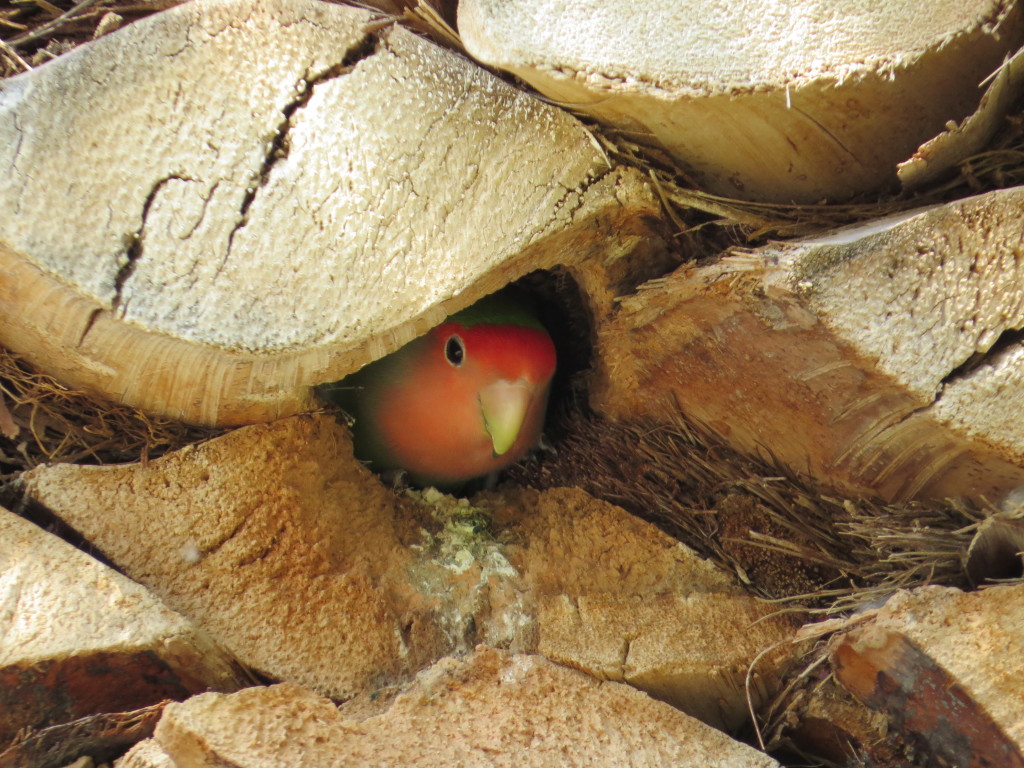 These birds are truly cute. Melissa agrees.
These birds are truly cute. Melissa agrees.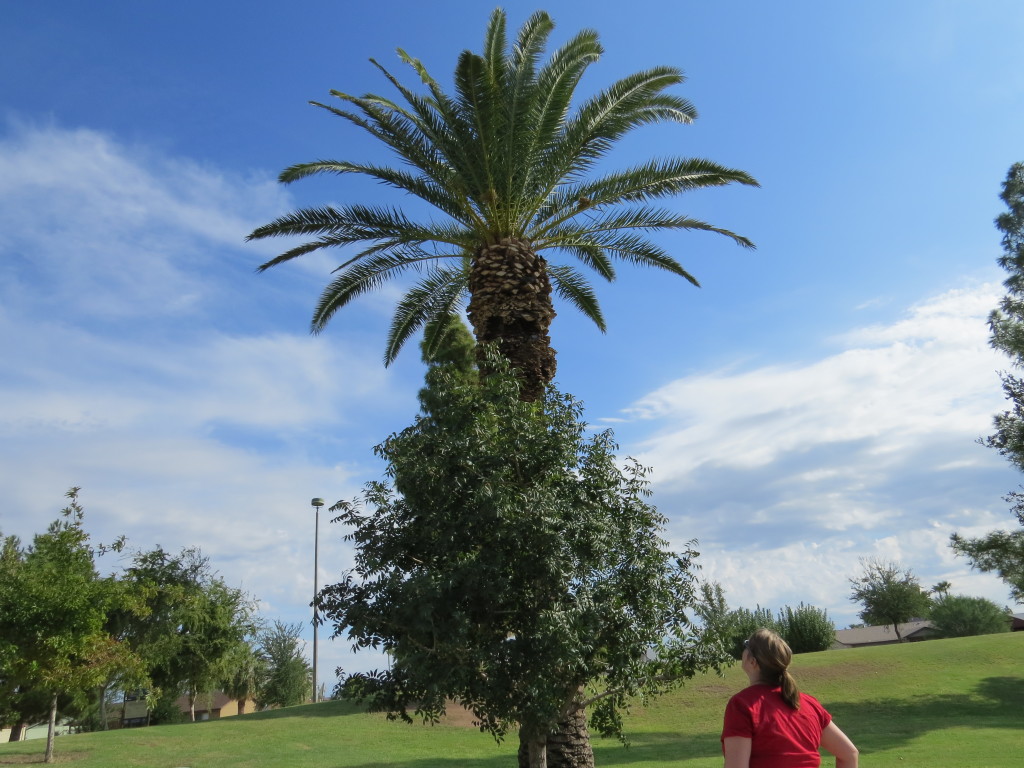
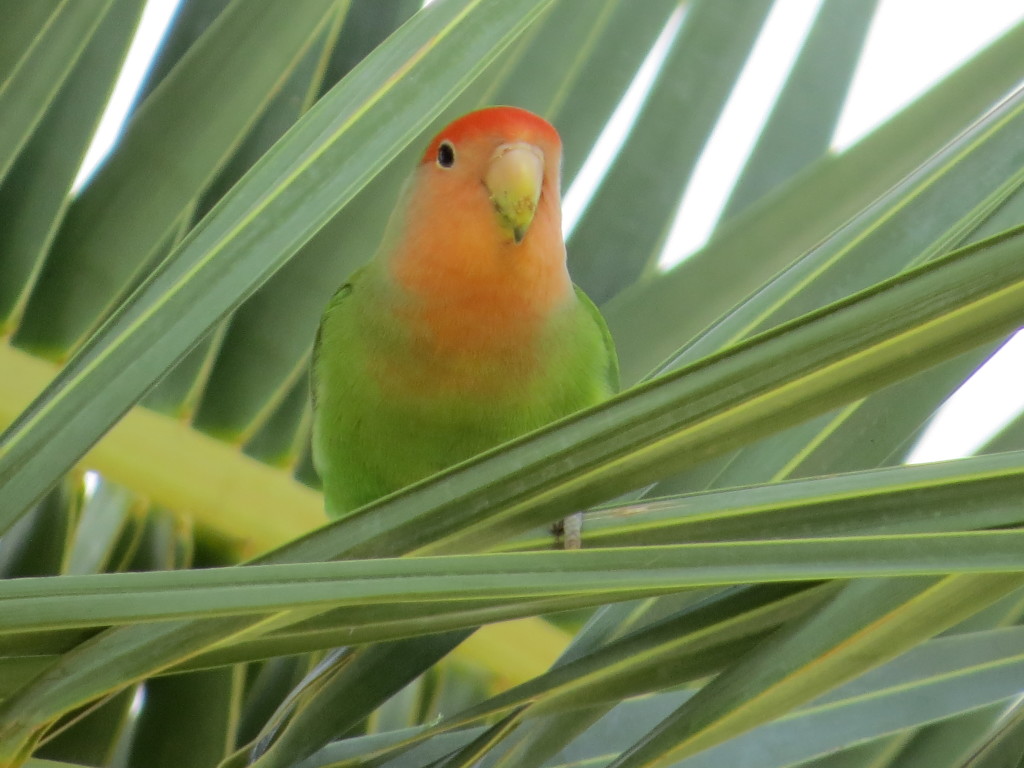
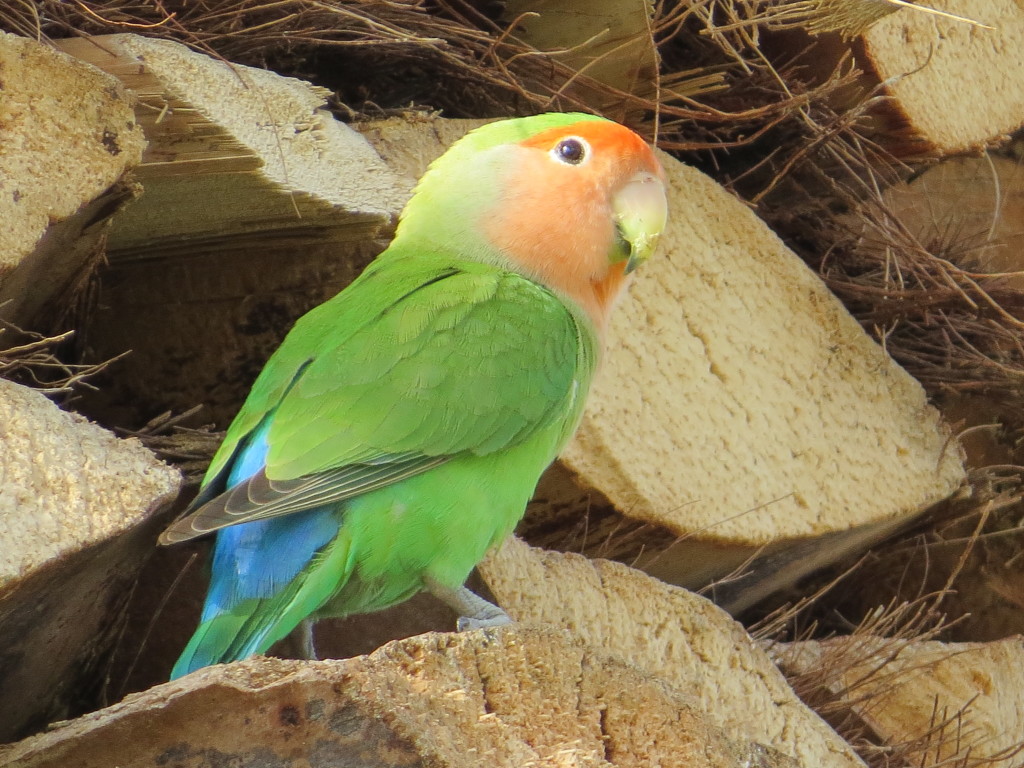 Here’s an important public service announcement for those of you not acquainted with the Lovebird. It is safe to say that despite this being an “easy” bird, I don’t think I would have found them without Gordon’s help. Here’s why: my sense of this bird’s scale was way off. Since all you ever see on blogs are impressive close-ups of this crushable bird, I was looking for something that I thought was Pigeon-sized. I guess I was wrong.
Here’s an important public service announcement for those of you not acquainted with the Lovebird. It is safe to say that despite this being an “easy” bird, I don’t think I would have found them without Gordon’s help. Here’s why: my sense of this bird’s scale was way off. Since all you ever see on blogs are impressive close-ups of this crushable bird, I was looking for something that I thought was Pigeon-sized. I guess I was wrong. 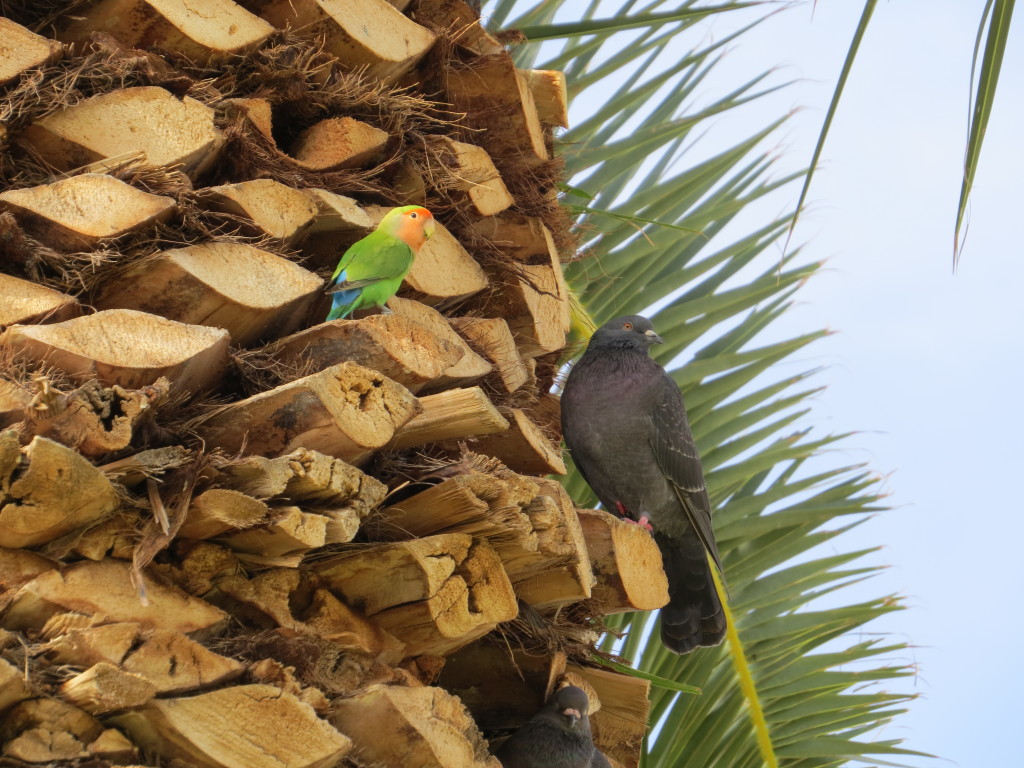
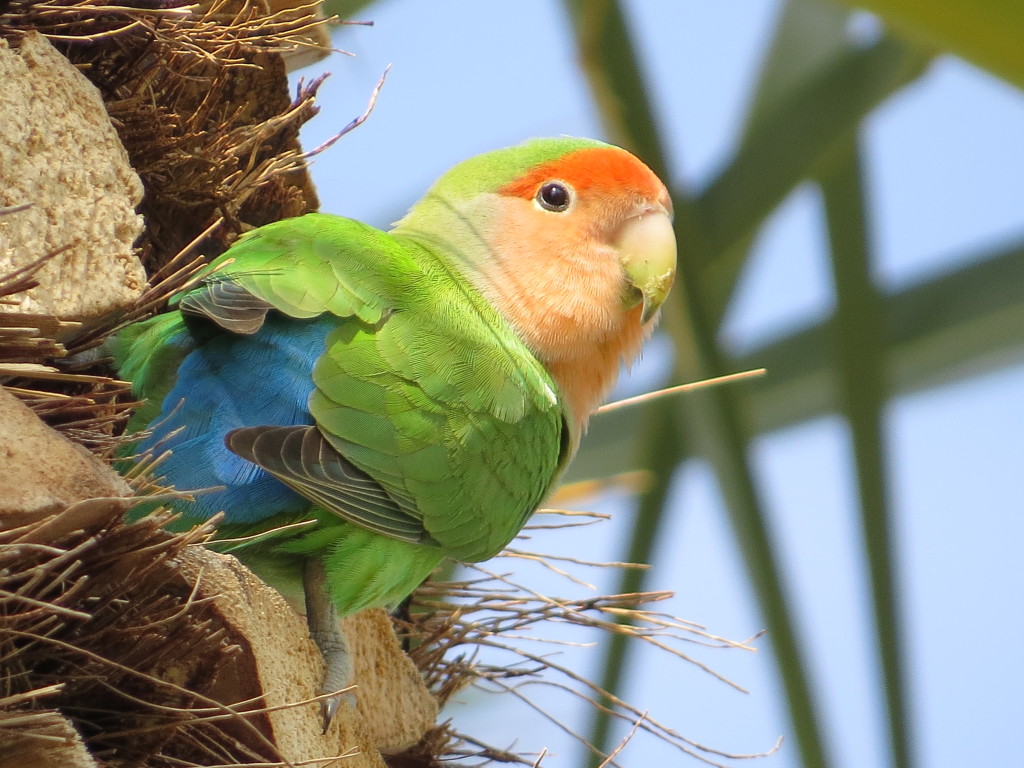 It’s hard to stop taking pictures of such a cute bird, but that’s mostly because Kiwanis didn’t offer up much more than Neotropic Cormorants and Pigeons. A pair of Gilded Flickers at our feet was a nice bonus.
It’s hard to stop taking pictures of such a cute bird, but that’s mostly because Kiwanis didn’t offer up much more than Neotropic Cormorants and Pigeons. A pair of Gilded Flickers at our feet was a nice bonus.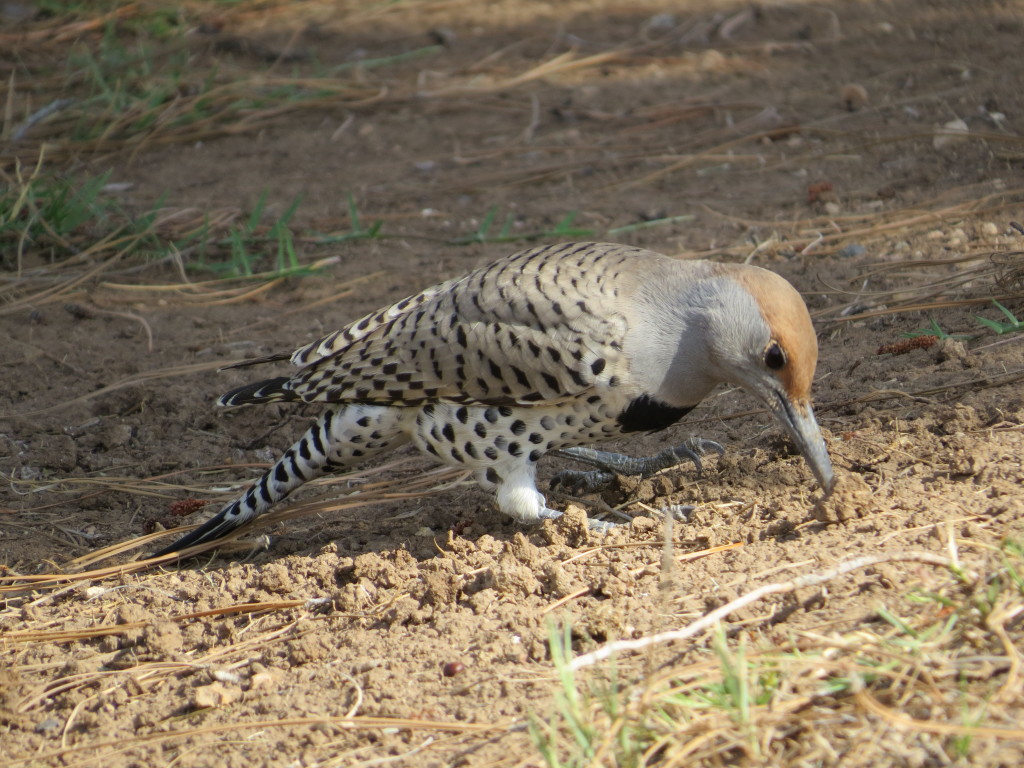 With the Lovebird lifer out of the way, we made the short trek up to Tempe Town Lake. The Brown Pelican was a bird I’d like to think I could have found on my own. Gordon wasn’t taking any chances. He led the way and spotted it out in marsh section of Tempe Town Lake.
With the Lovebird lifer out of the way, we made the short trek up to Tempe Town Lake. The Brown Pelican was a bird I’d like to think I could have found on my own. Gordon wasn’t taking any chances. He led the way and spotted it out in marsh section of Tempe Town Lake.
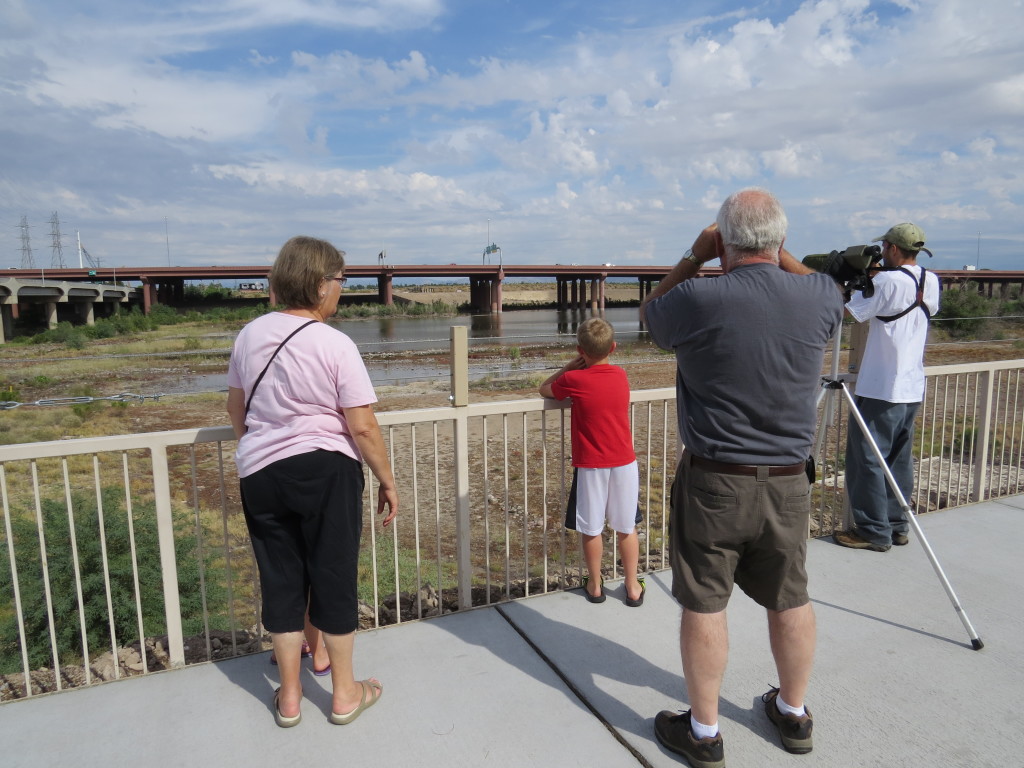
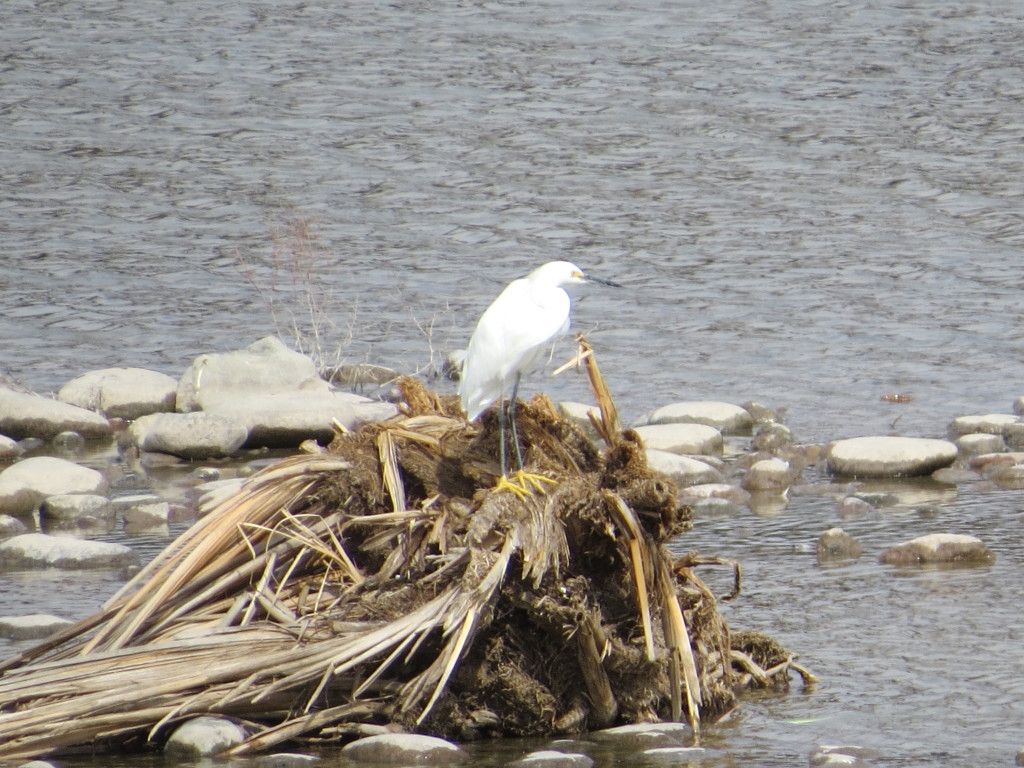
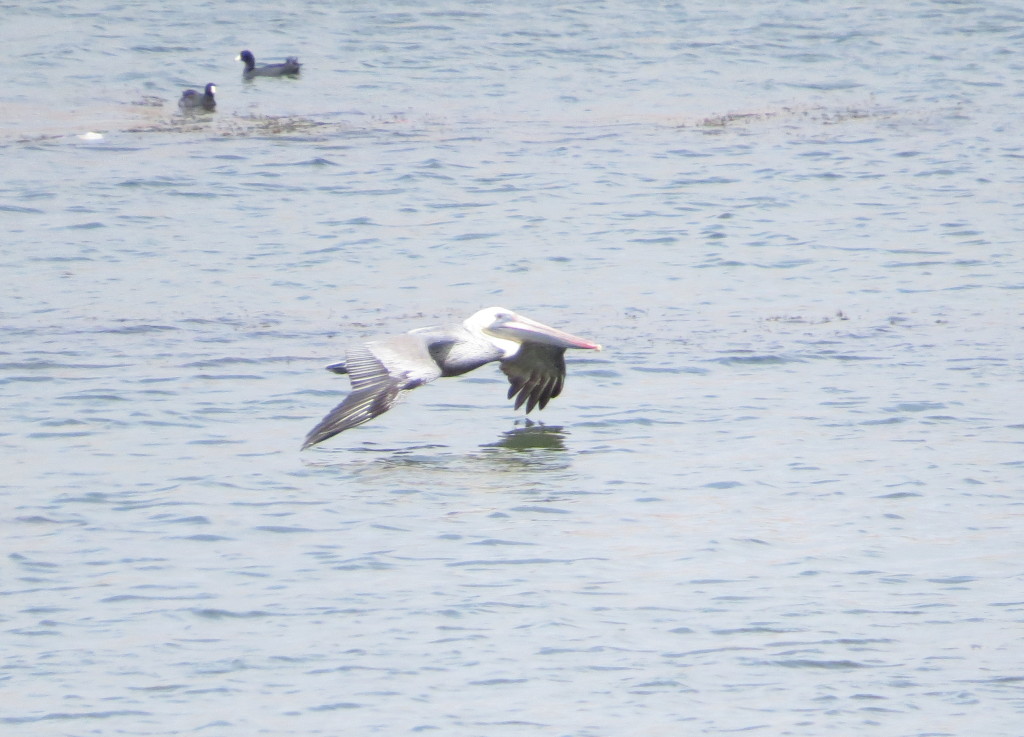
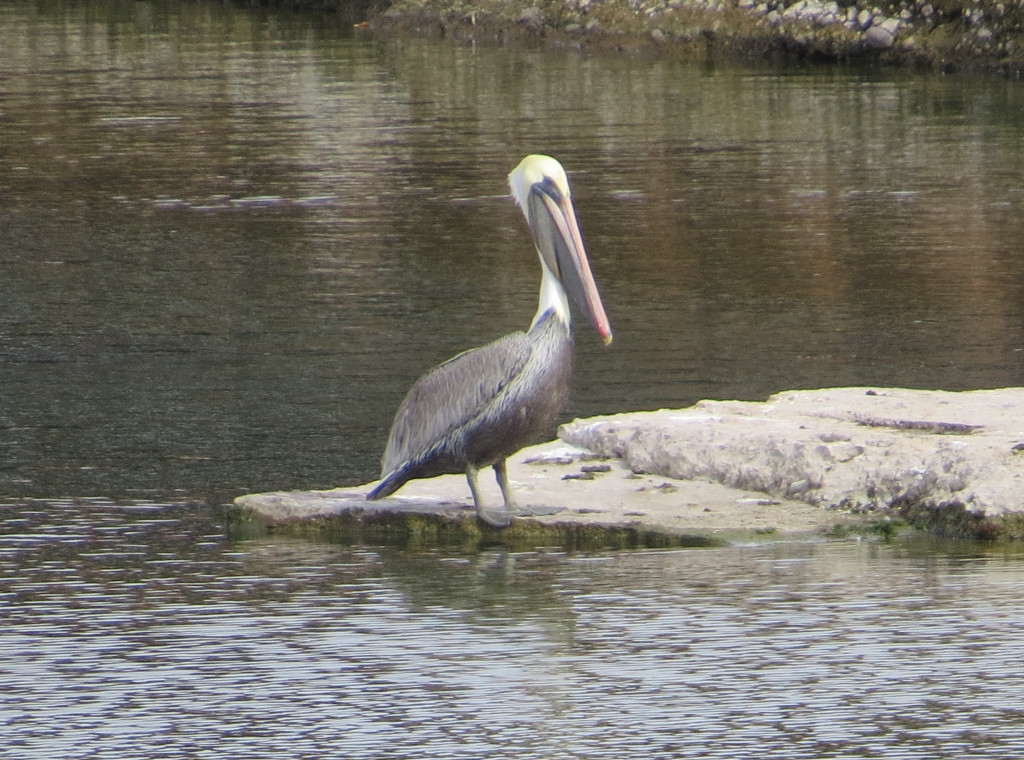 Finally the Pelican/Lovebird anxiety was no more. After saying our goodbyes to Gordon, we had much of the day to do whatever, like check out the impressive collections of potted cacti and caged Macaws at Leaf&Feather in Maricopa. I had no idea so many species of Macaws existed. Might have to put Brazil on the bucket list.
Finally the Pelican/Lovebird anxiety was no more. After saying our goodbyes to Gordon, we had much of the day to do whatever, like check out the impressive collections of potted cacti and caged Macaws at Leaf&Feather in Maricopa. I had no idea so many species of Macaws existed. Might have to put Brazil on the bucket list.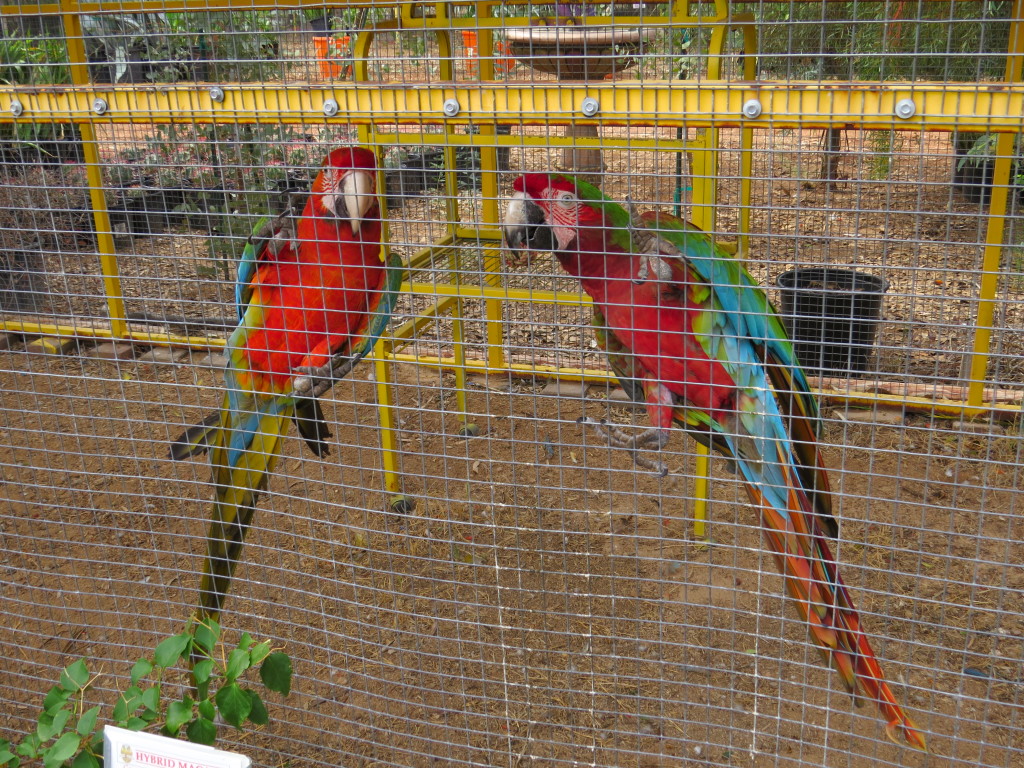 We also spent time playing in one of the most impressive rain storms I have seen, in Arizona no less.
We also spent time playing in one of the most impressive rain storms I have seen, in Arizona no less.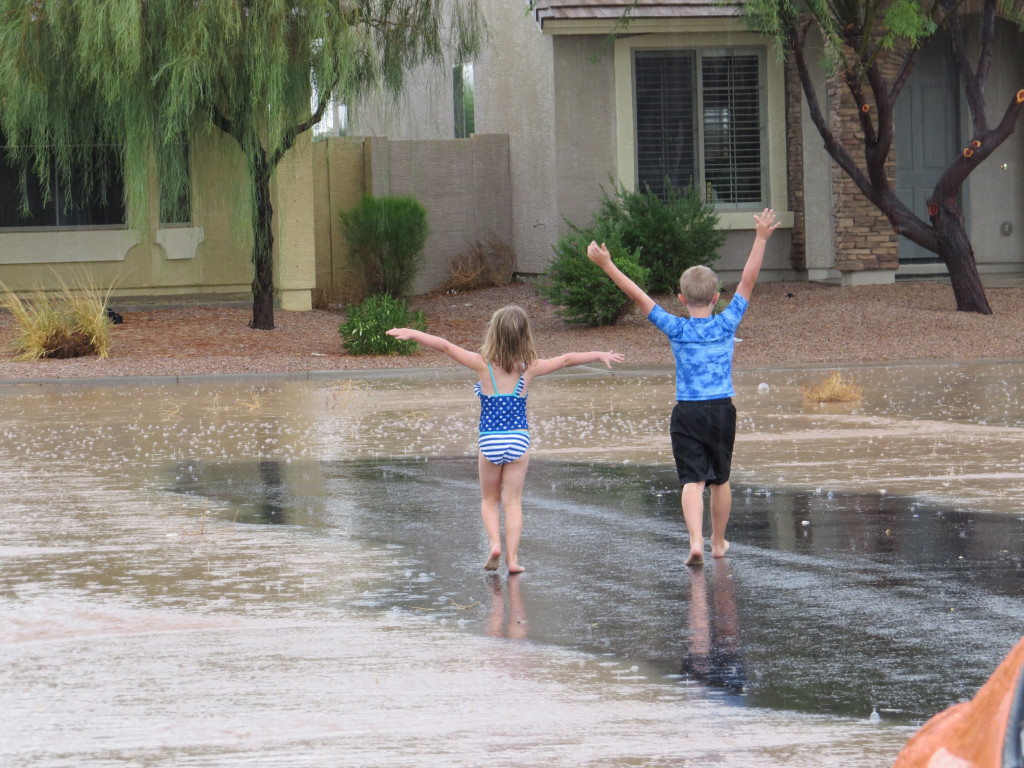
 Some children were not as enthused about the deluge and were downright grumpy.
Some children were not as enthused about the deluge and were downright grumpy.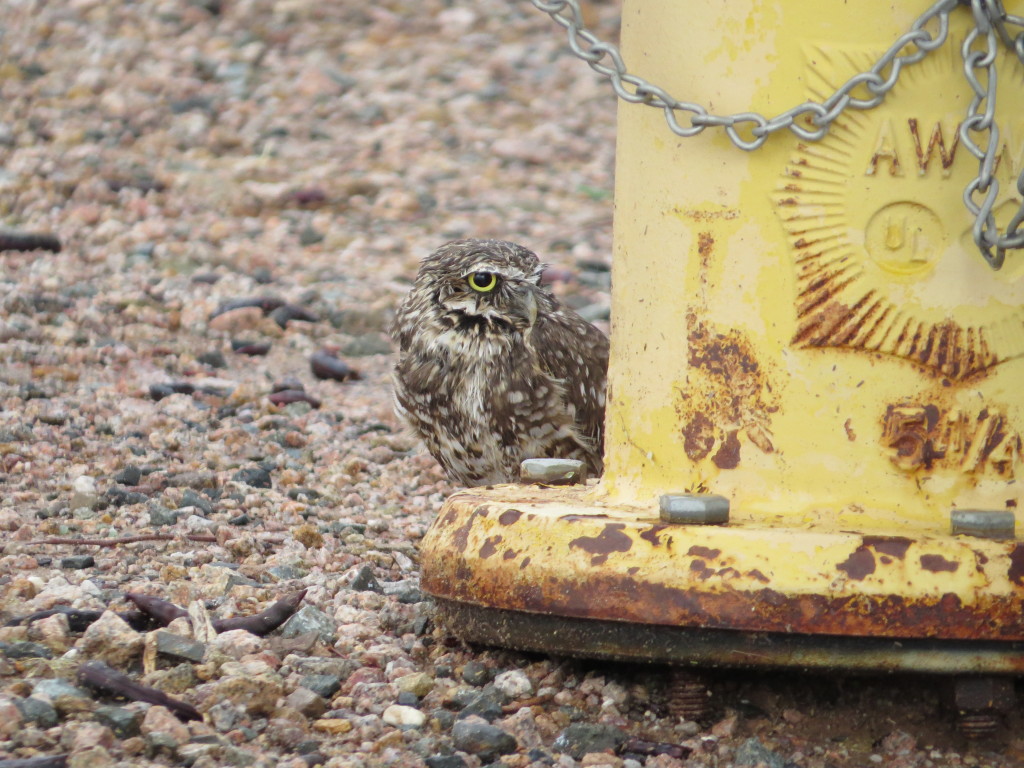
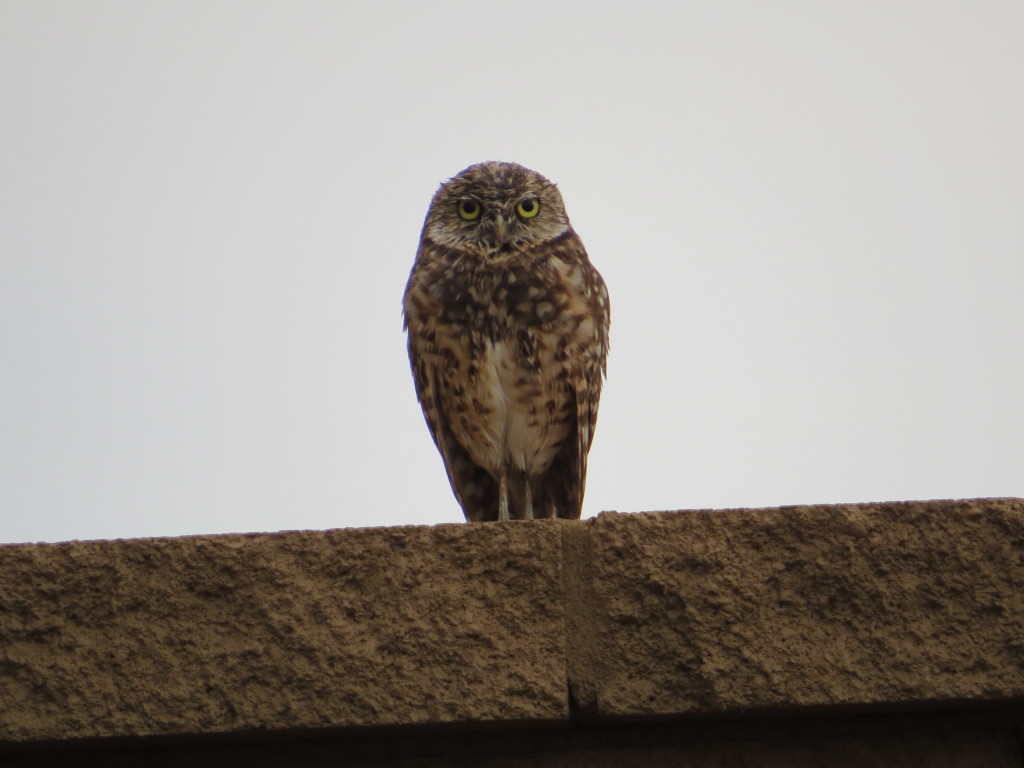 Another AZ trip is on record, full of many new birds and great memories. It’s time get back to MN though with some good winter owling. Stick around, these posts will be coming out fast.
Another AZ trip is on record, full of many new birds and great memories. It’s time get back to MN though with some good winter owling. Stick around, these posts will be coming out fast.